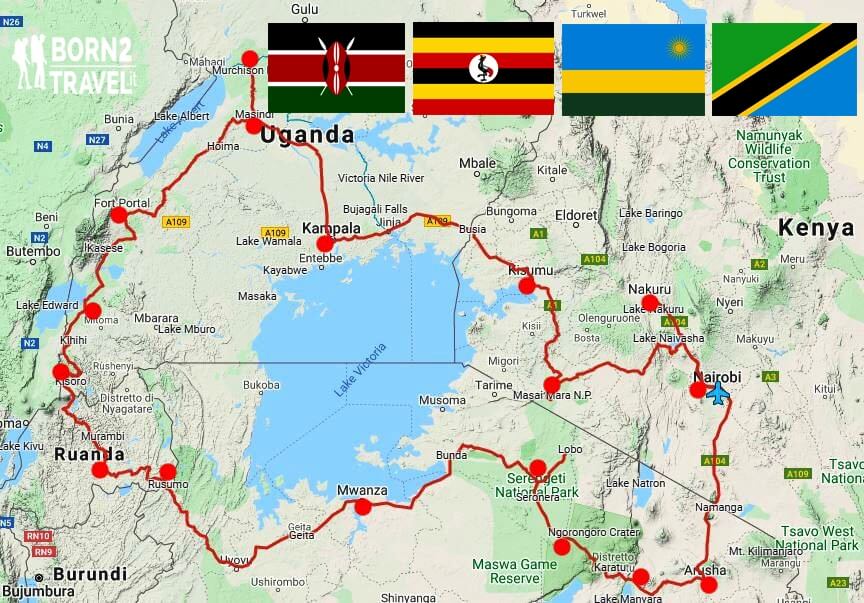
Best time to visit:
from may to february
Vaccines
Recommended vaccinations: typhoid, malaria prophylaxis and hepatitis A.
Compulsory vaccination: yellow fever.
In a word:
Jambo (hi in Swahili)
Essential experiences:
Climb the Bwindi Forest, Uganda to see the silverback gorillas; Sleep in tents in the legendary national parks of East Africa after a safari; Meet the Masai of Kenya and Tanzania.
In this great adventure we rented an old military 4 × 4 truck, modified for the transport, spartan, of adventurers in Nairobi, Kenya and almost a month later, we returned it to the same city after covering more than 4000 km around Lake Victoria.
We will sleep almost every night in tents in the most legendary national parks of East Africa, we will cook using our camping kitchen. We will come into contact with the Masai culture of Kenya and Tanzania; we will go into the "impenetrable" forest of Bwindi National Park, Uganda, discovering the latest silverback gorillas; we will be moved in the Kigali Genocide Museum, Rwanda until we plunge back into the life of the African savannah with our clumsy truck to parks such as Serengeti or Ngorongoro, Tanzania…
Of course this does not pretend to be a travel guide but simply the story of a great adventure in Africa!
Our suggested itinerary (1 month) | |
one week: | Nairobi, Nakuru NP, Masai Mara NP, Kisumu (Kenya) |
two weeks: | Kampala, Masindi, Murchison NP, Fort Portal, Queen Elizabeth NP, Kisoro, Bwindi NP (visit to the silverbacks) (Uganda) |
two days: | Kigali (visit to the Genocide Memorial), (Rwanda) |
ten days: | Mwanza, Serengeti NP, Ngorongoro NP, Mto Wa Mbu, Lake Manyara, (Tanzania) |
| one day: | transfer to Arusha or Nairobi and flight to major African cities and beyond |
We land in Nairobi in the middle of the night and, after completing the various customs formalities, we take possession of our 4 × 4 truck headed straight for Nakumatt, the large supermarket in Nairobi, where we fill our galley with what we will need for all the next month of safari!
Nairobi welcomes us with its chaos, its large buildings, the disorder typical of large African cities and its marabou that dominate its polluted sky and populate the skeletal trees with great fruit.
The transfer to Nakuru National Park allows us to breathe some real Africa.
We are amazed at the greatness of the Rift Valley ...
We proceed along a gray asphalt tongue meeting occasionally baboon families, sitting on the red earth, who observe the traffic indifferently ..
In the meantime, we go up to 2500 meters to reach our first camp: Kembu Campsite.
The sun shines high even if it is cool and we set up our tents early forming our first camp!
The equipped truck is an excellent way to approach animals with respect and admire them closely.
Here are the first baboons, then the wildebeests, buffaloes, gazelles ... it is a crescendo of exceptional encounters and emotions.
In the distance, a leopard that elegantly descends from a tree, a small group of young lions relaxing under an acacia, zebras trotting calmly, wildebeests grazing the sparse grass together with clumsy warthogs, some Thomson's gazelles peer at us curiously, some buffalos walk tired aimlessly, an impala runs scared: we are shyly entering their world!
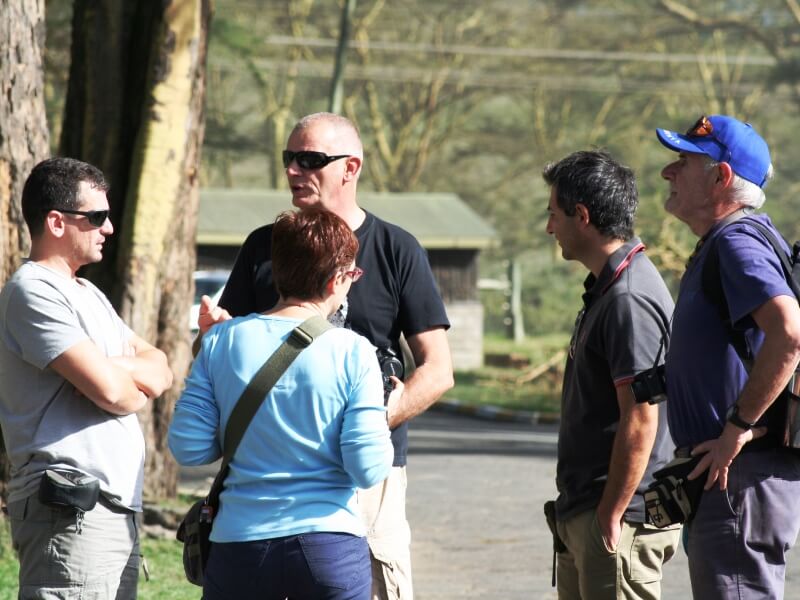
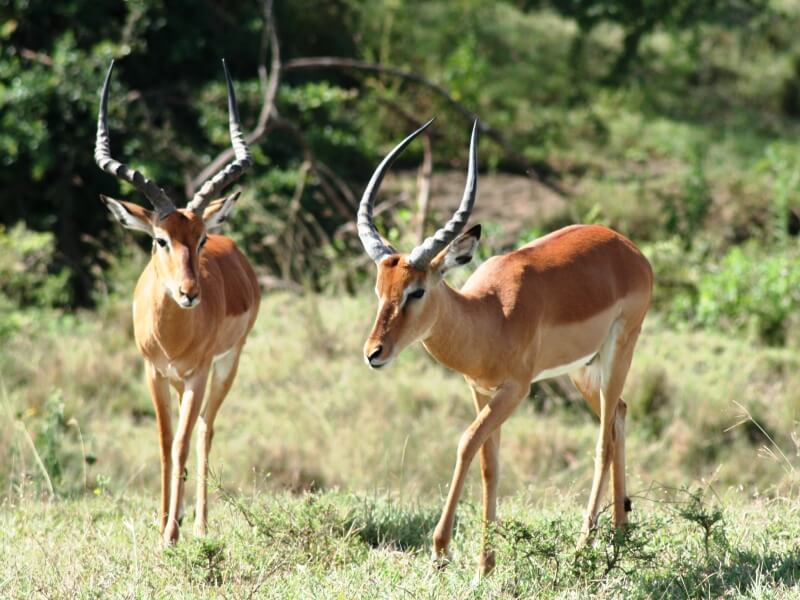
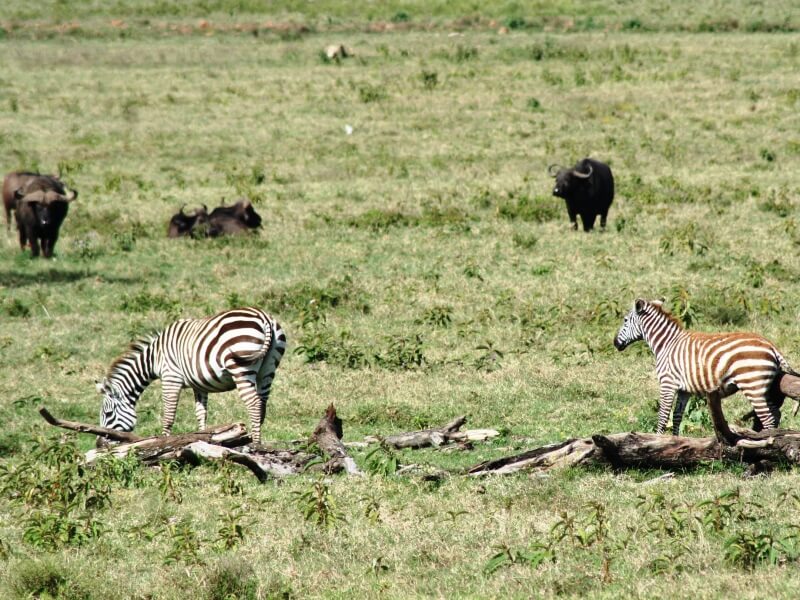
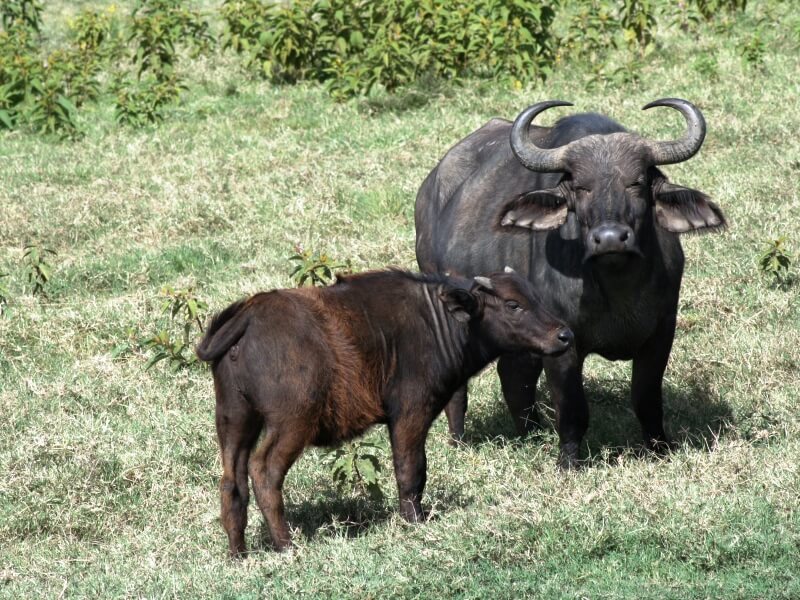

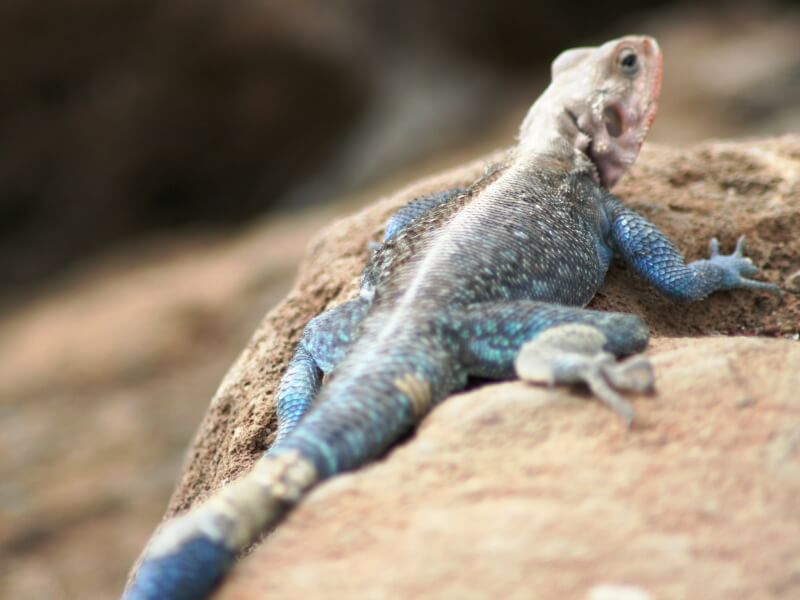
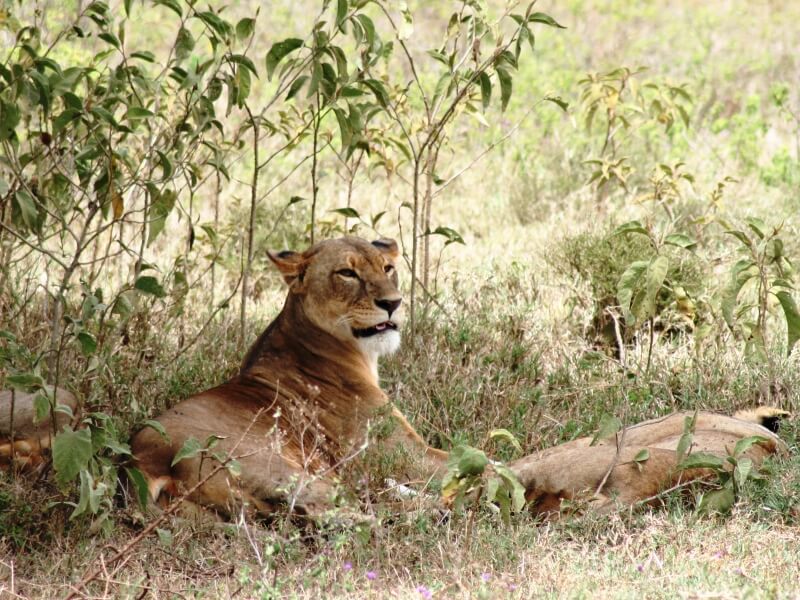
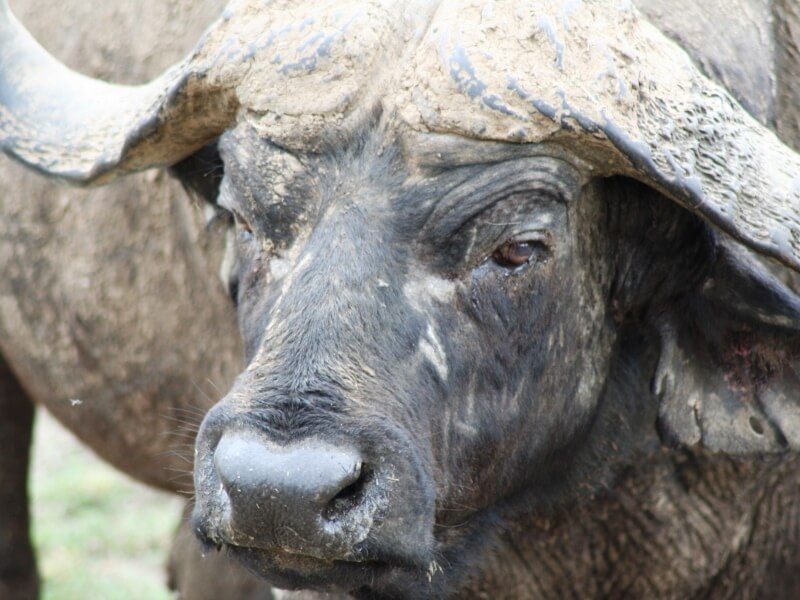
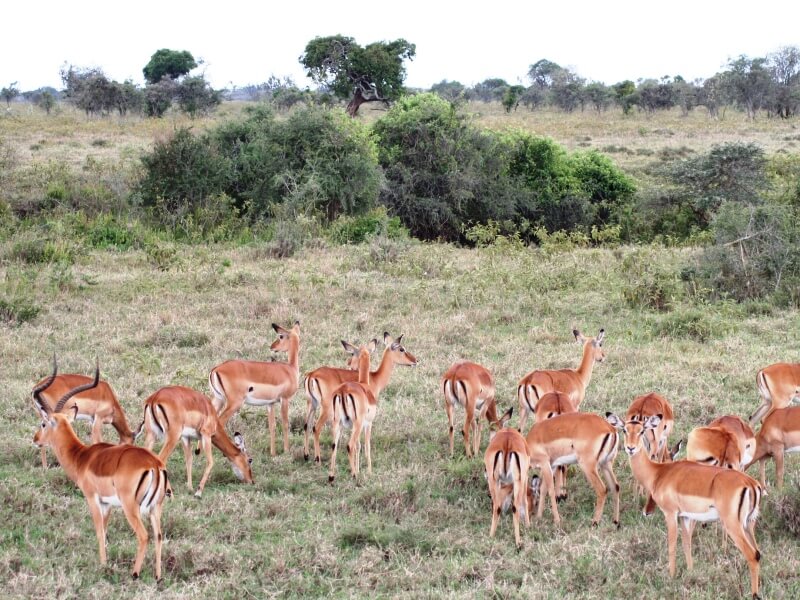
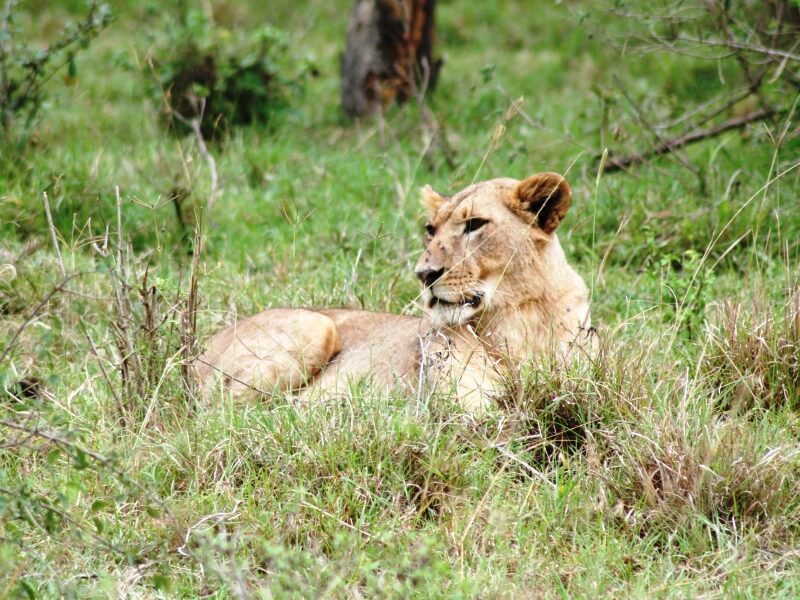
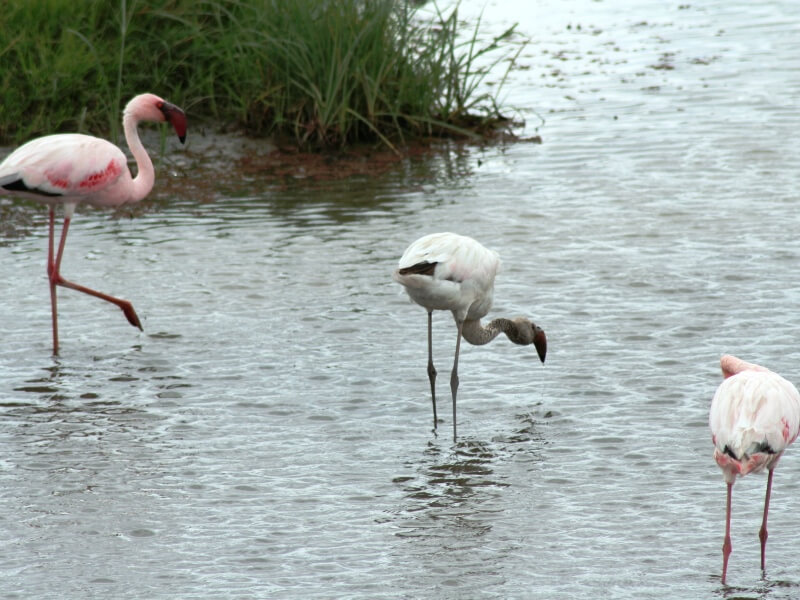
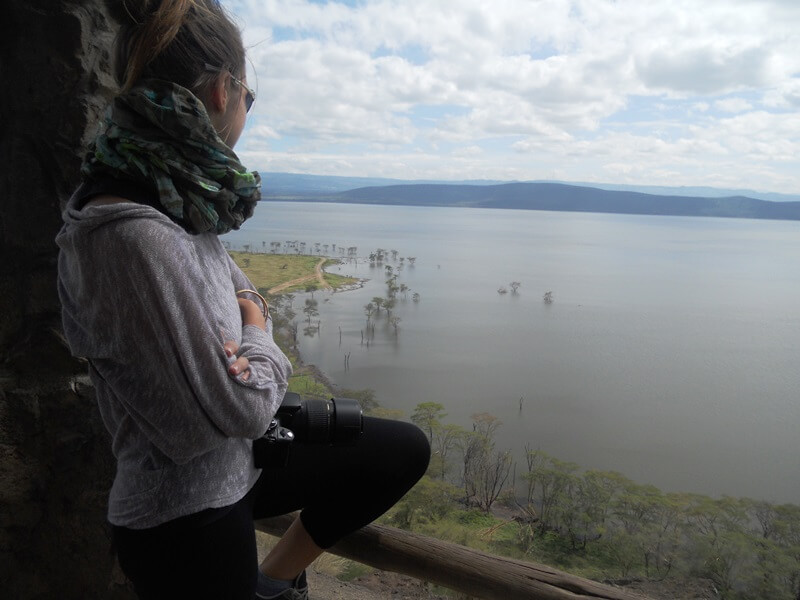
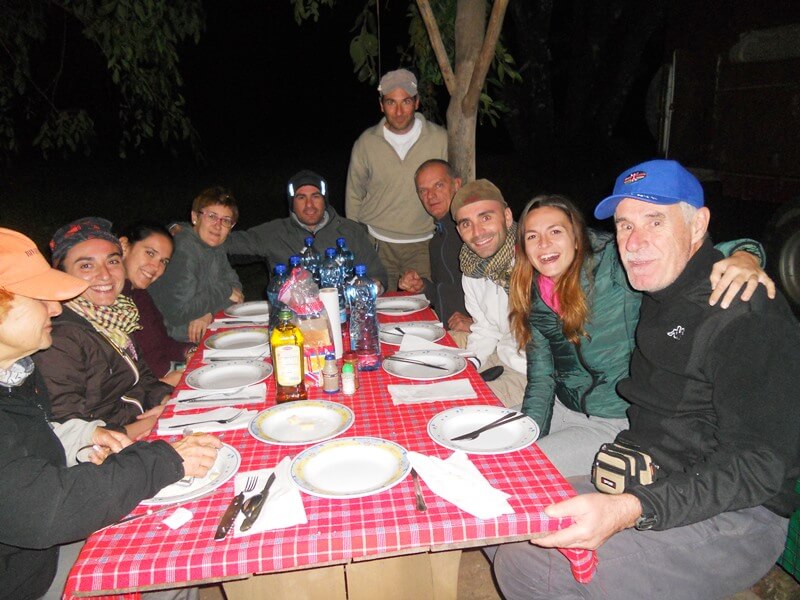
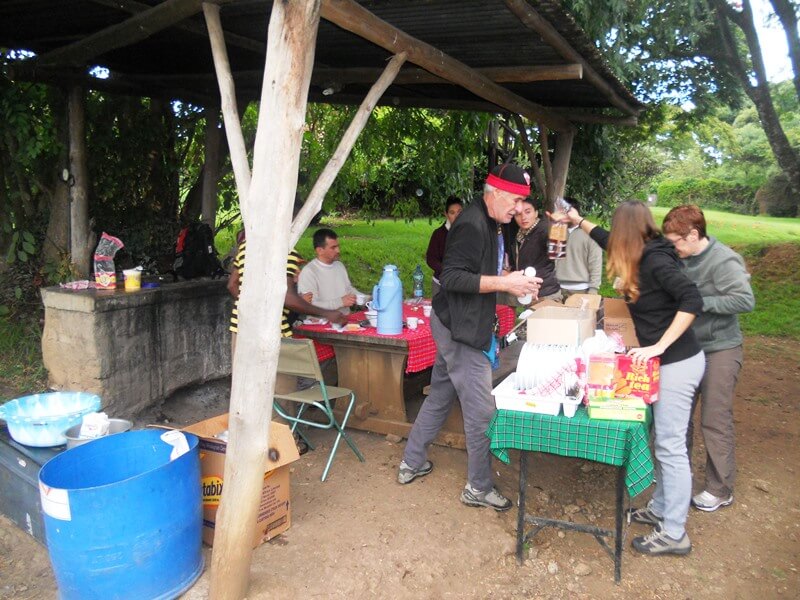
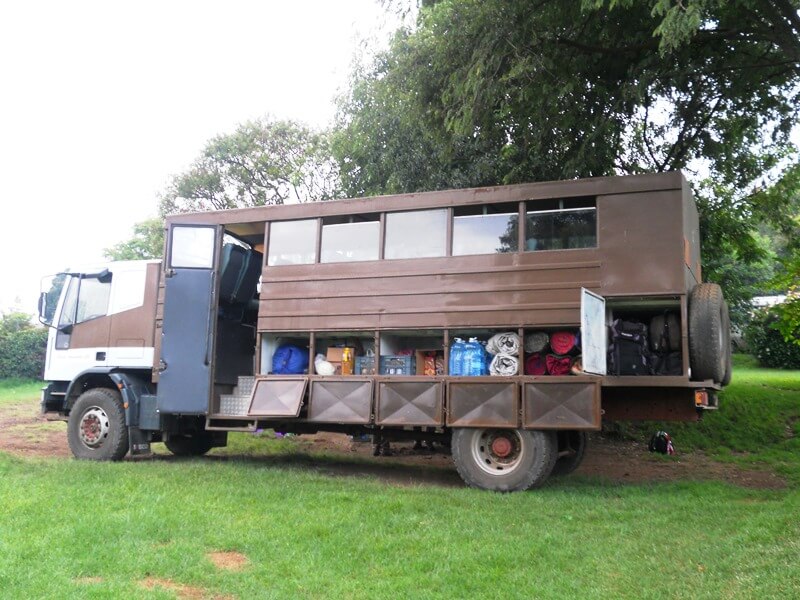
We leave early in the direction of Narok.
We enter the Masai kingdom.
We get tangled up in a tough business when we decide to buy a piece of ice for our cool box ...
We follow Hernest and Ali through a thousand narrow and crowded streets of the local market; often we come across old Masai whom we admire with a kind of awe; they wear bright red costumes, many decorations made of multicolored beads on the neck, wrists, ankles and ears with large holes as well as the inevitable multipurpose stick in the hands.
Shortly before entering the Masai Mara national park we stop to visit a Masai village after negotiating with the tribal chief.
They welcome us with a series of dances and songs up to the classic dance of the jumps. They tell us about their nomadic life, show us their daily lives, their straw huts and explain how they light the fire using only small pieces of wood.
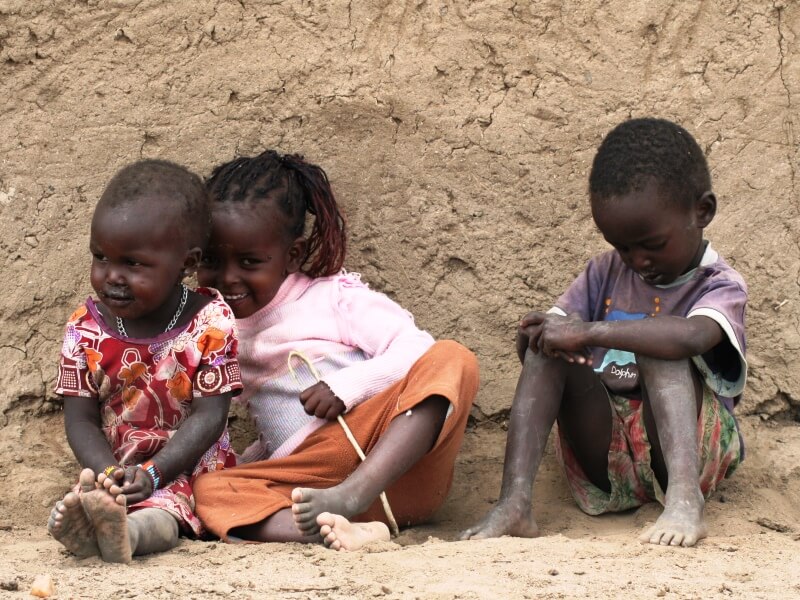
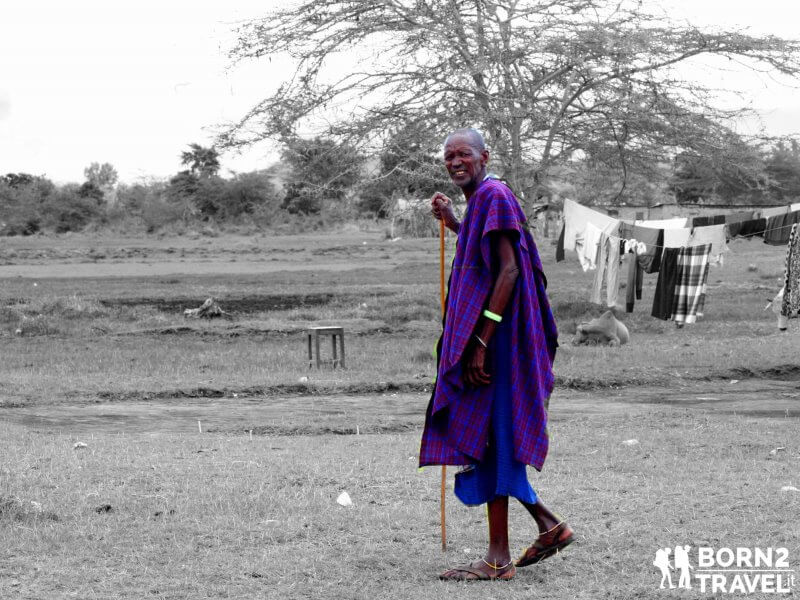
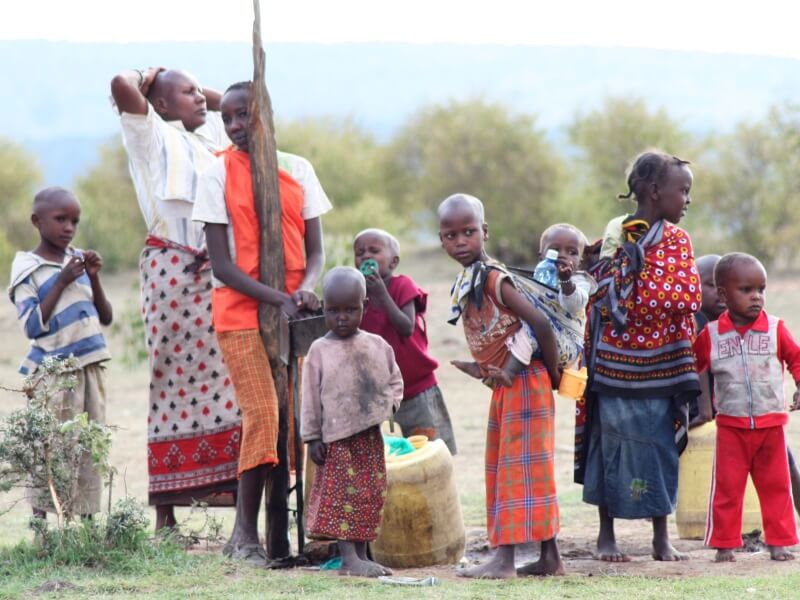
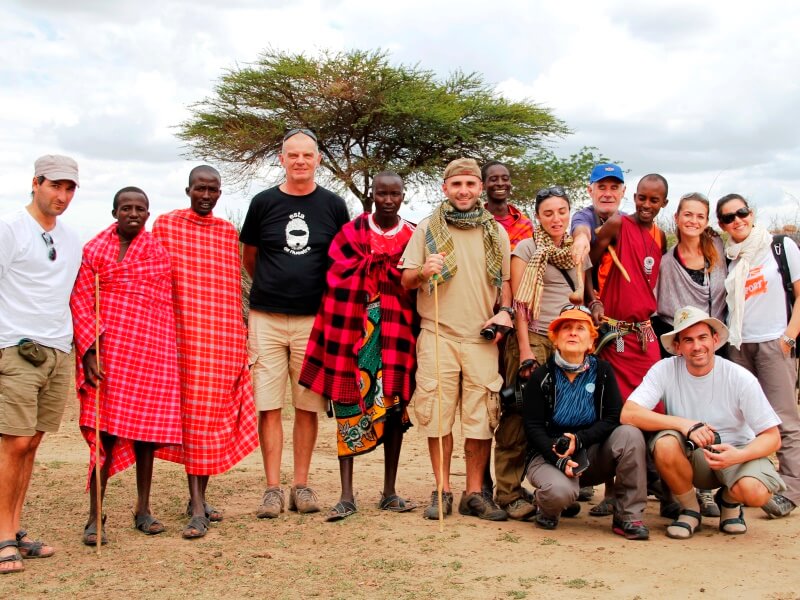
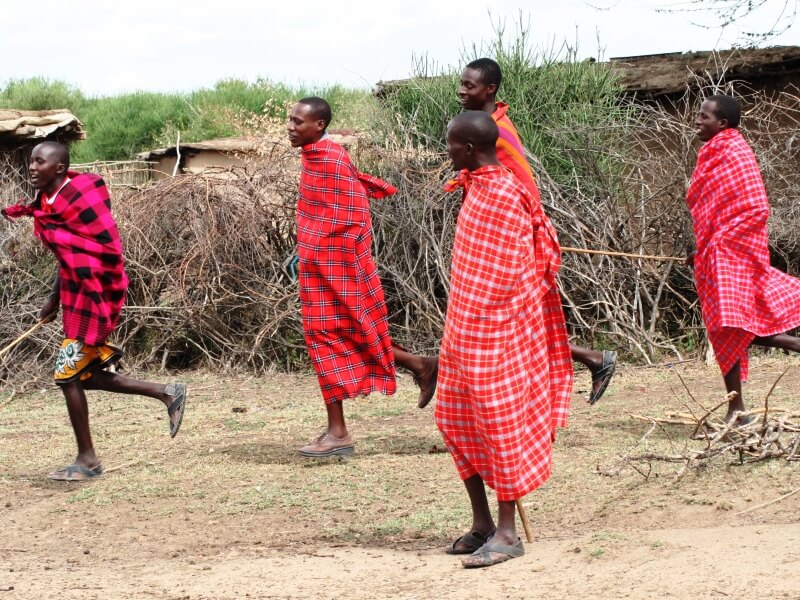
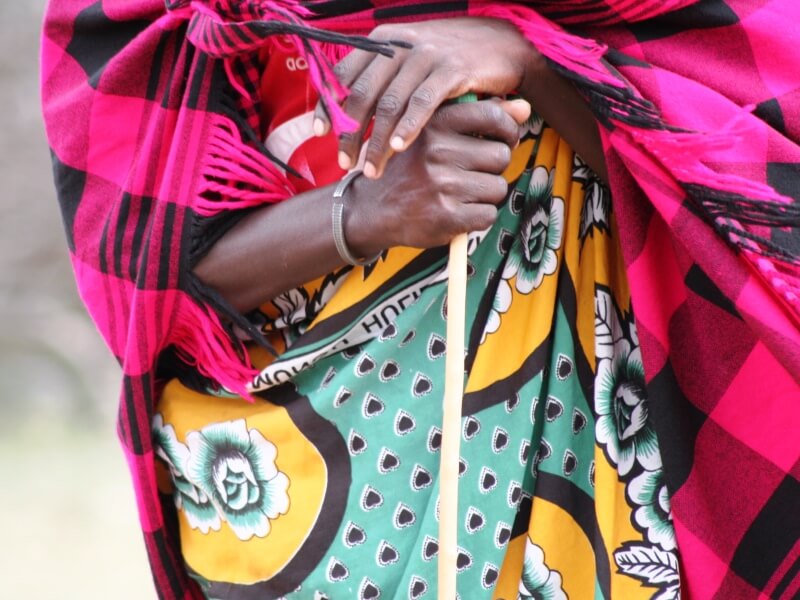
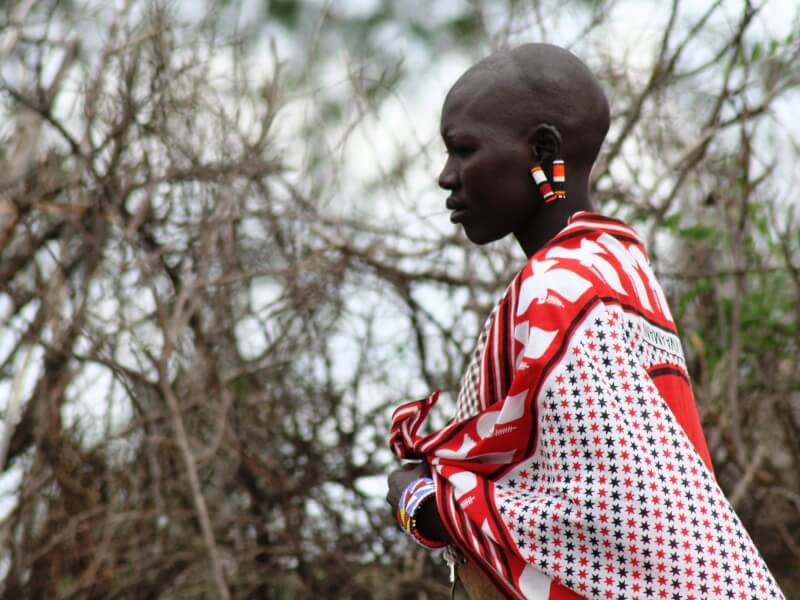
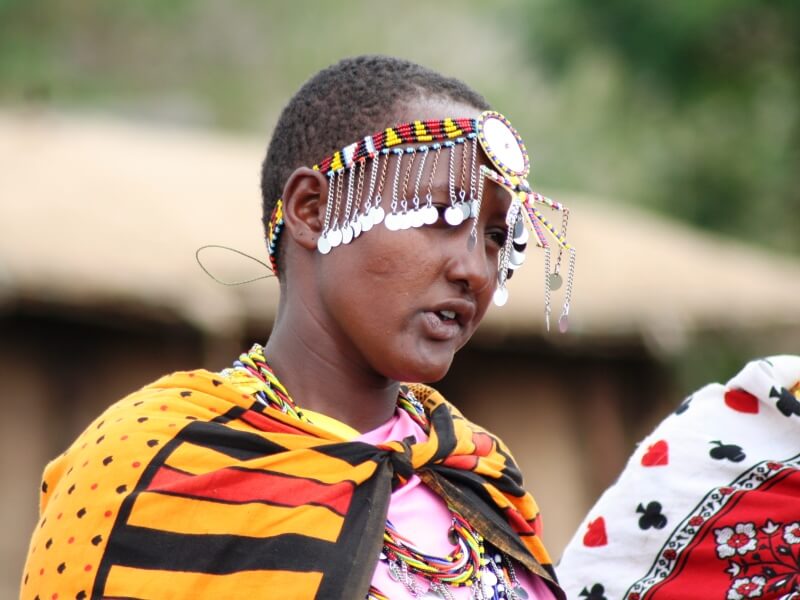
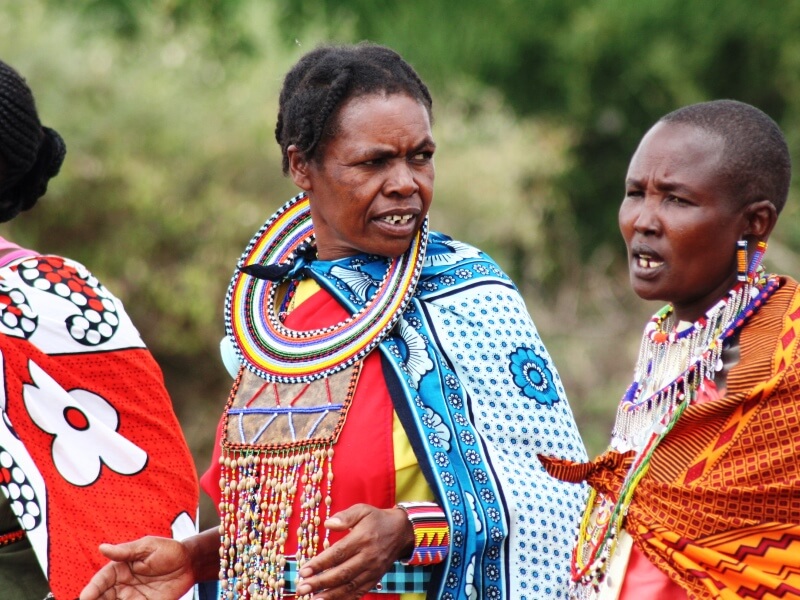
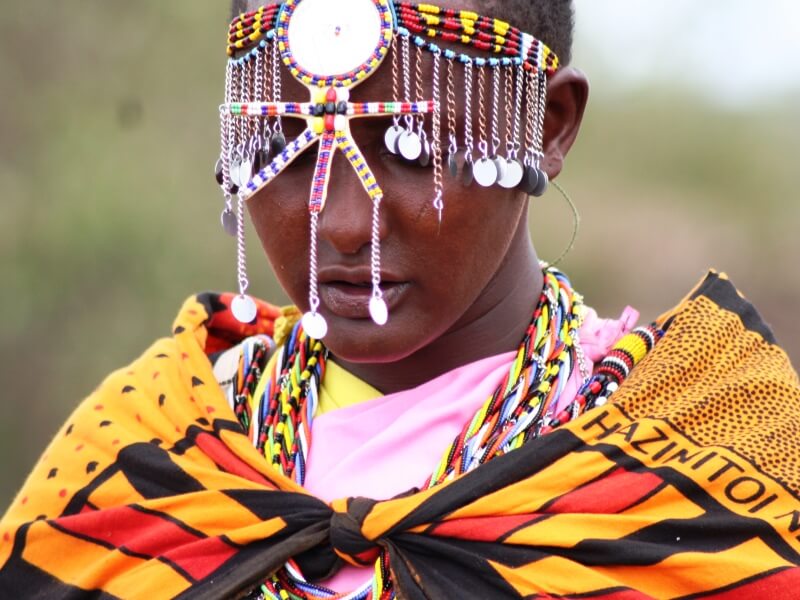
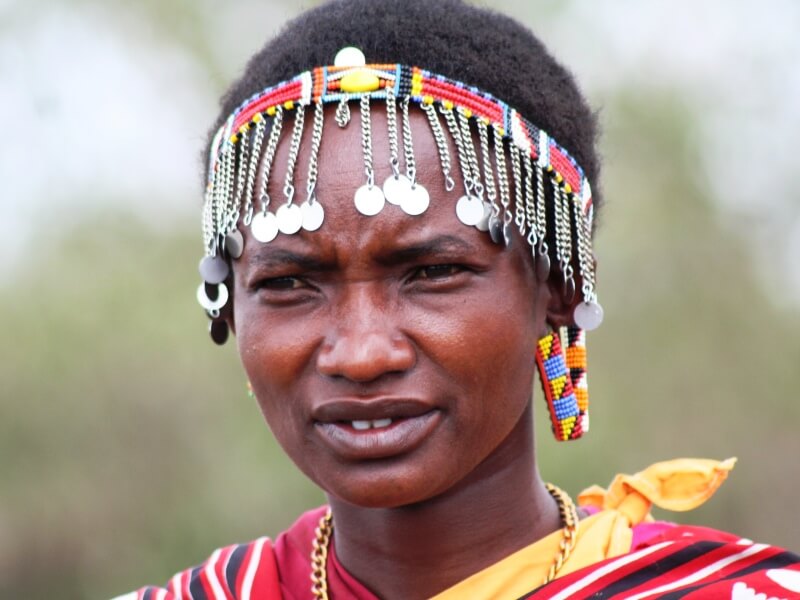
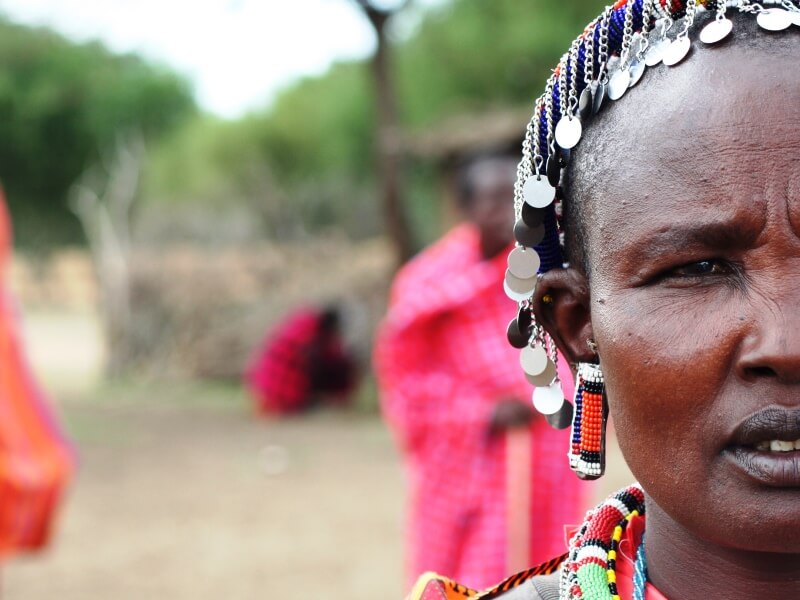
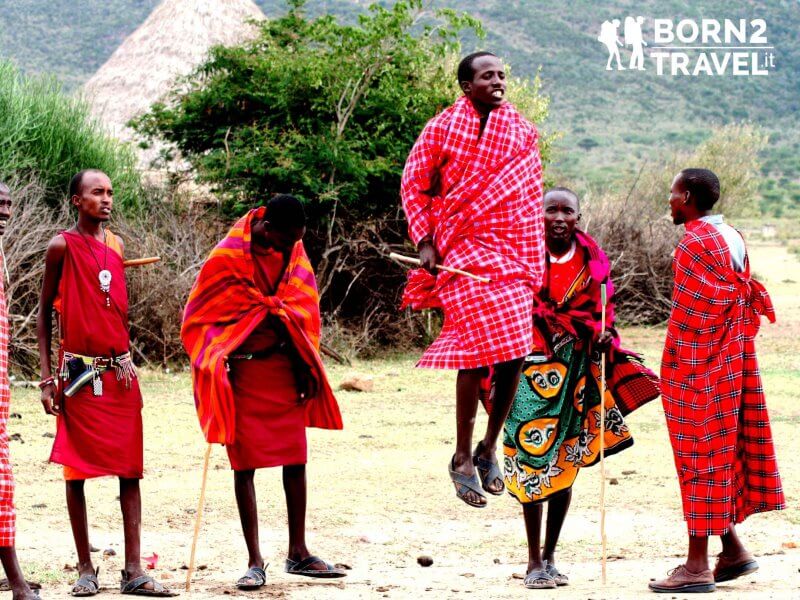
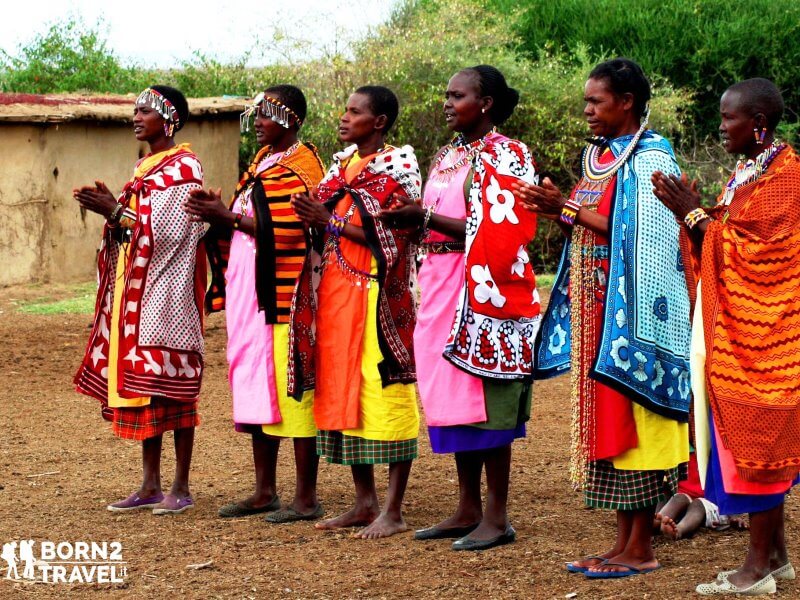
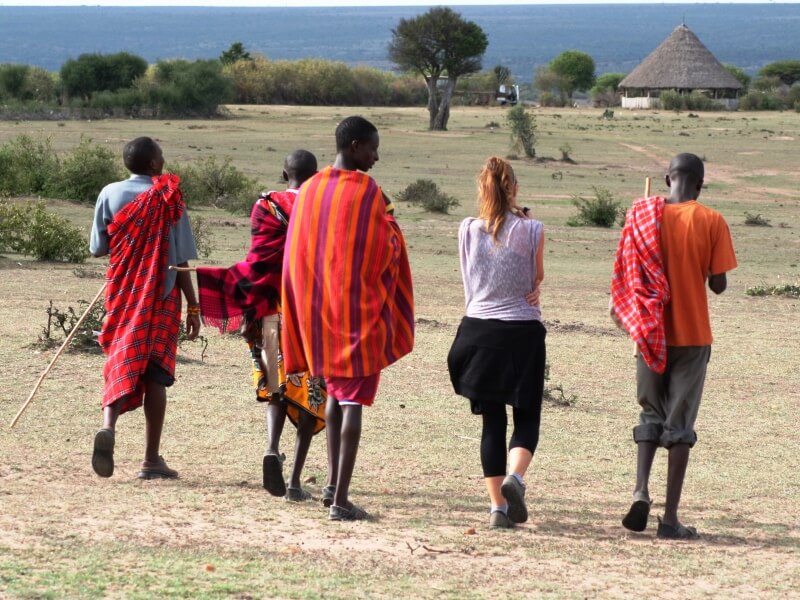
At dawn we cross the gate of the Masai Mara national park. Another exciting safari starts!
We meet many animals and every time we enchant ourselves to observe them, to imagine their wild life, to analyze and study every single detail or movement; we get lost you can look across the black stripes of zebras, all different, or yellow-brown spots of the placid and funny giraffes.
Herds of elephants walk bored, others graze the grass, sometimes tearing whole bushes with a strong trunk while a little one trots trying to understand how to use the small protuberance ...
Some ostriches raise their long, bare necks to look at you; a hyena stretches in the shade of a large bush until the majestic leopard descends imperiously from an acacia tree.
Dozens of carcasses or old wildebeest skeletons scattered everywhere reminded us that this was an area of great hunting and threatening predators ... the chain of life!
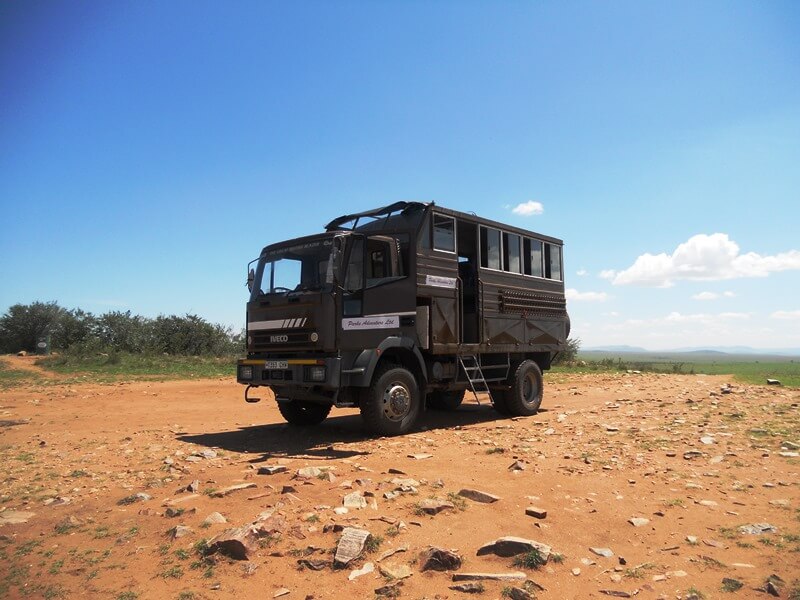
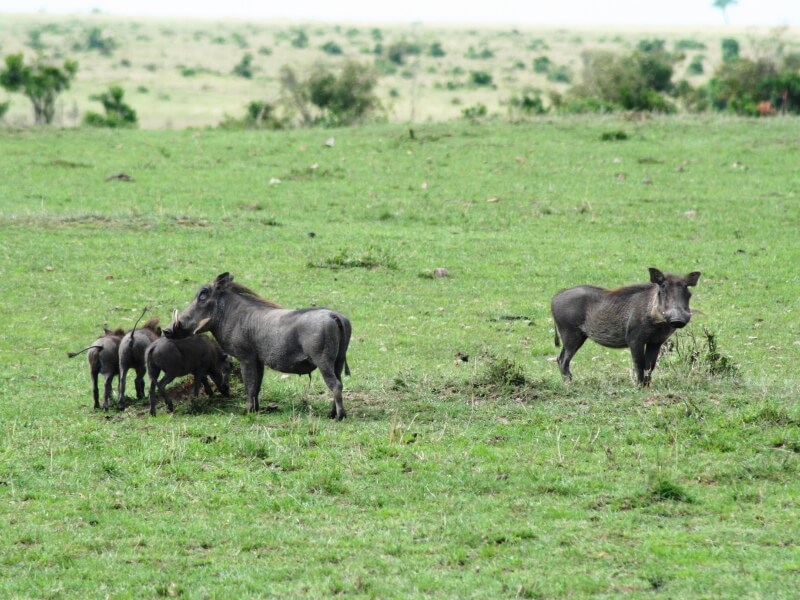


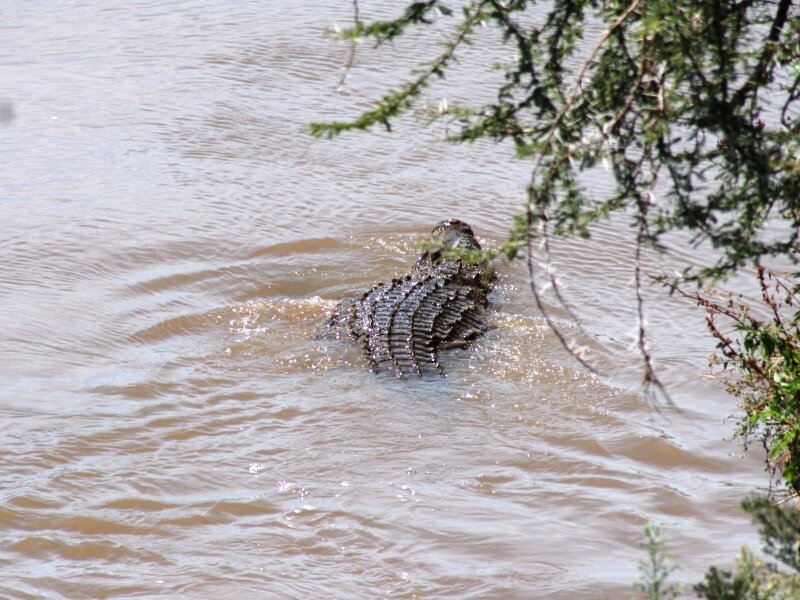
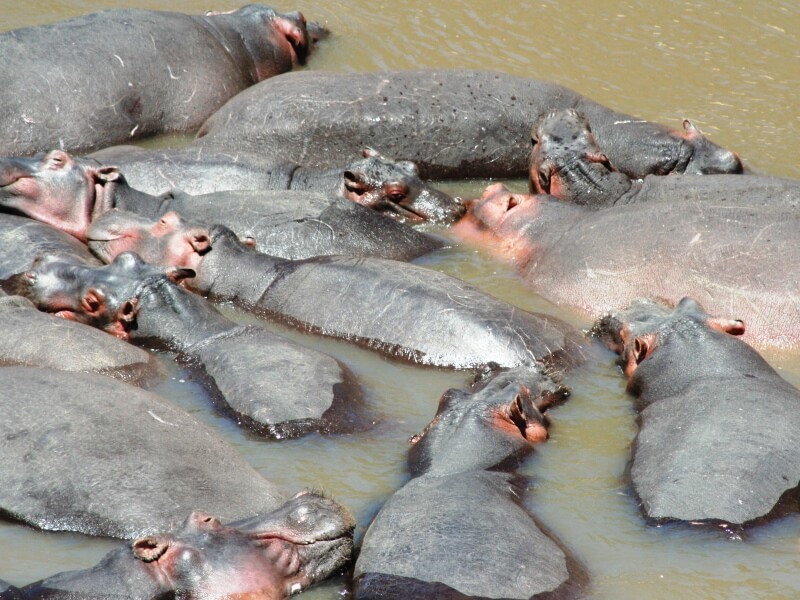
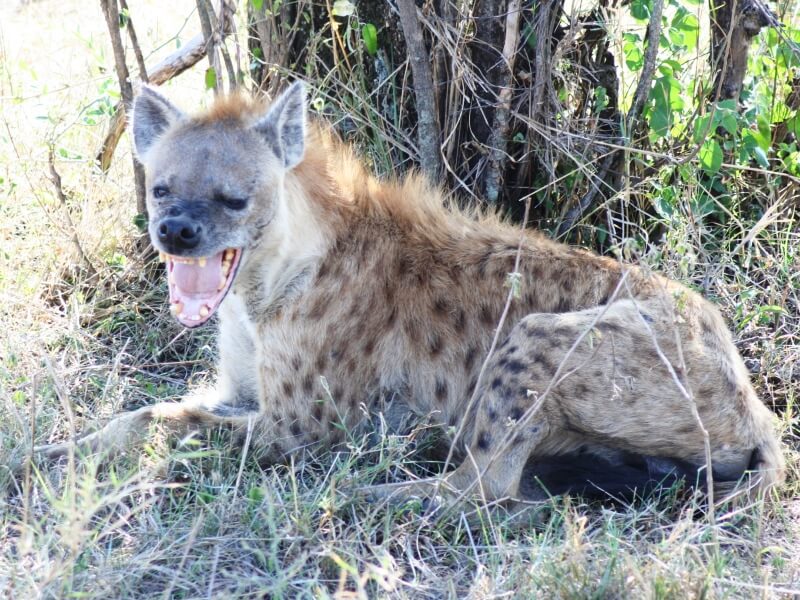
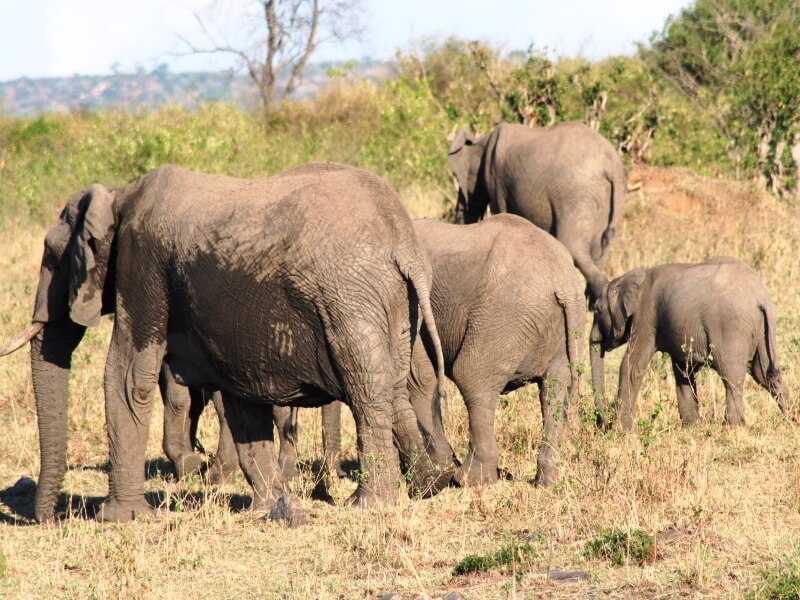
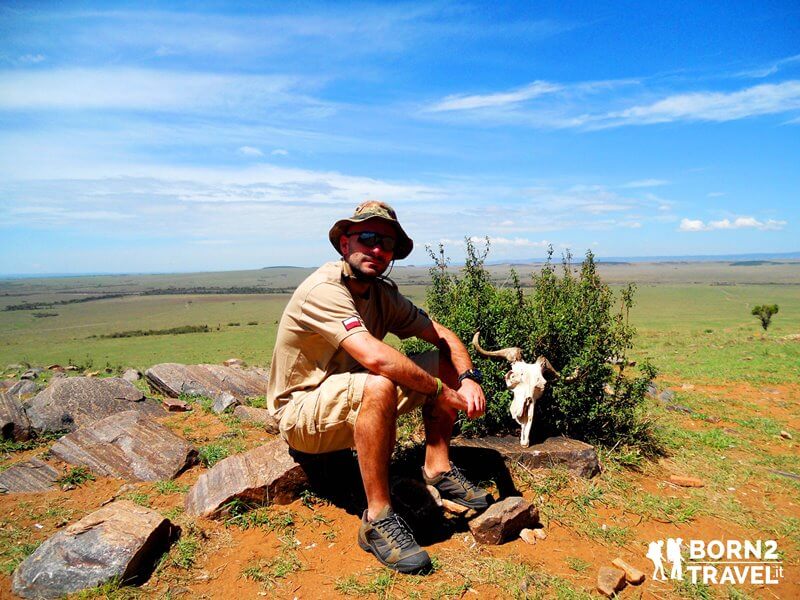
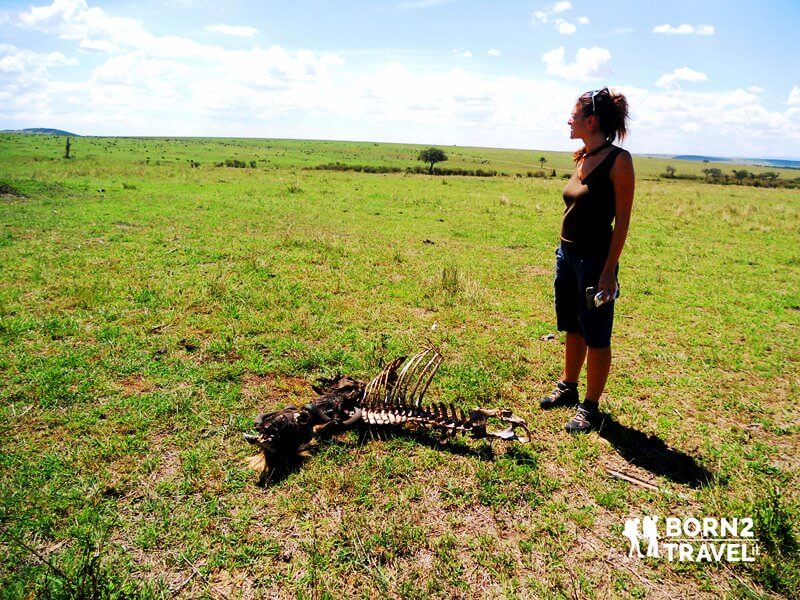
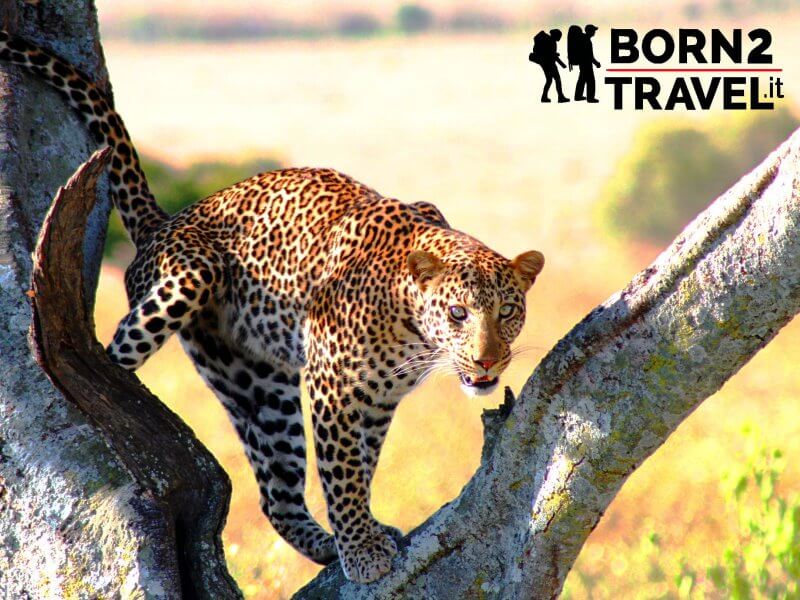
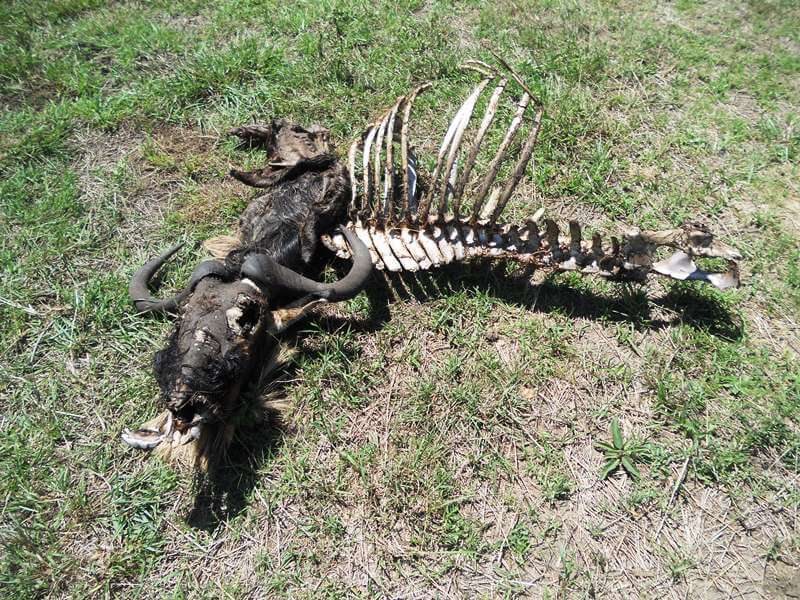

We travel almost all day to reach the town of Kisumu on Lake Victoria.
Along the way we begin to have a first perception of Kenyan daily life. We cross numerous villages of straw and mud huts; women and children lined up at the water well with large yellow bins in their hands or in perfect balance on their heads.
Intrigued, we stop to visit a couple of local markets, we wander among sellers of all merchandise, especially shoes and clothes used and imported by the consumerist West.
We arrive in Kisumu when it is already dark. It seems to be a fairly large town and is characterized by the usual abandonment of these places where the survival of its people takes precedence over urban aesthetics.
We stop at the Kisumu Beach Resort, a shabby place full of mosquitoes, after all we are right on the banks of Lake Victoria ... "but mosquitoes are not malarial" - as one of the guys who manages it tries to reassure us.
It is hard to set up the tents after 12 hours of trucks, tired, sweaty, hungry, in the dark and on a harsh and hard ground while insects of all kinds buzz around you.
Only the dinner prepared by Alì based on penne pasta with sauce and tuna can give us some energy!
A few hours of walking and we are in Busia, the last city in Kenya: border.
Here the usual disordered chaos reigns, the comings and goings of all borders.
There are those who want to accompany us by bicycle or motorbike to immigration; many offer us oddly advantageous shady currency exchanges; everything is sold and there are people from all over East Africa.
Kenyan exit stamp; discussion with a border policeman for an innocent photo of the flag; shortly after, Ugandan entry stamp while the sinuous and colored flag, photographed just before, waving welcomes us to this nation that will host us for ten days.
We wait two hours under a scorching sun for the handling of our truck's customs formalities: African times, no fear!
Once we leave, we notice that the landscape has completely changed. The red of the land of Equatorial Kenya gives way to a lush green, it often rains here!
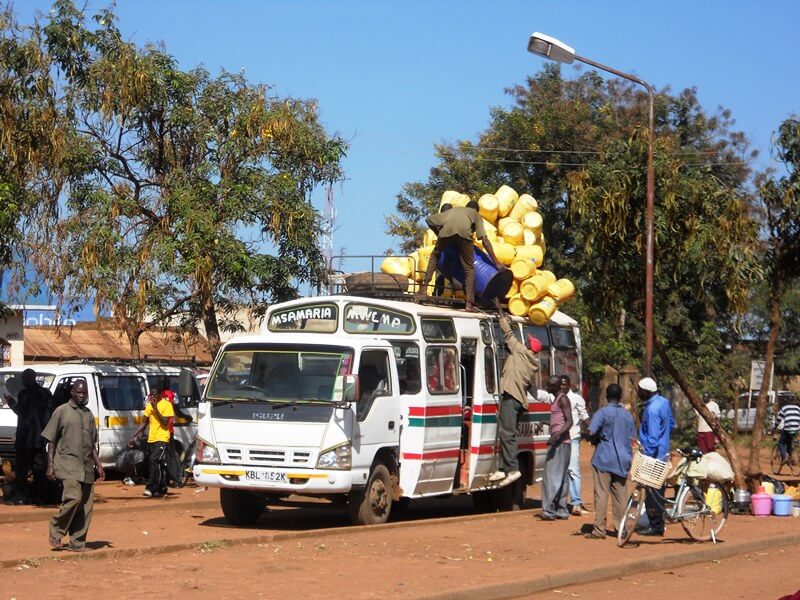
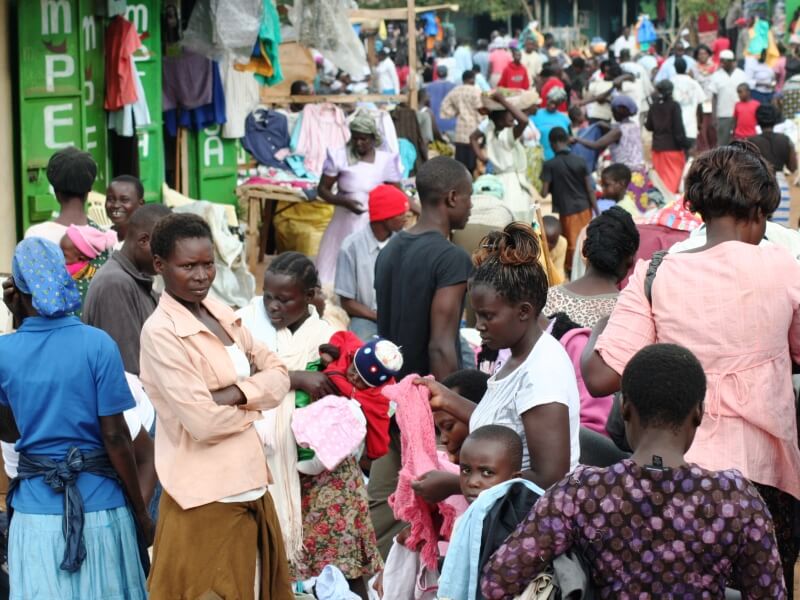


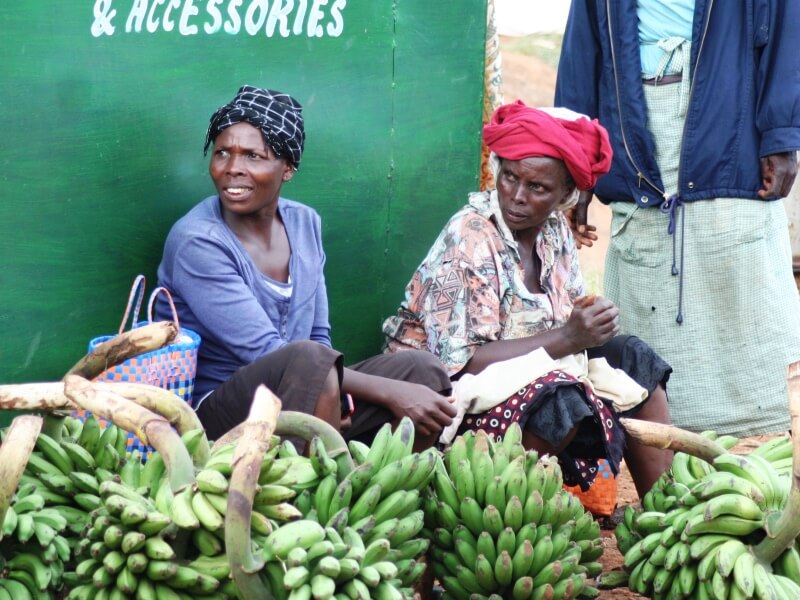
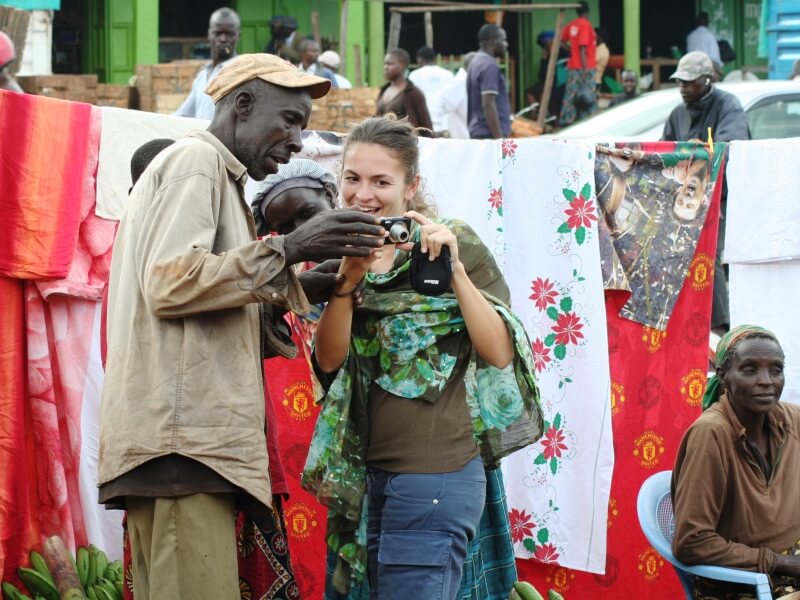
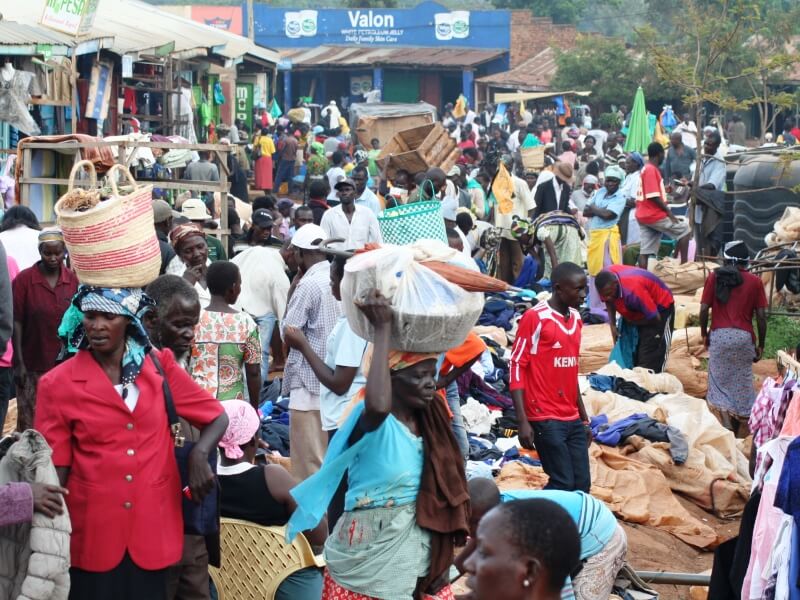
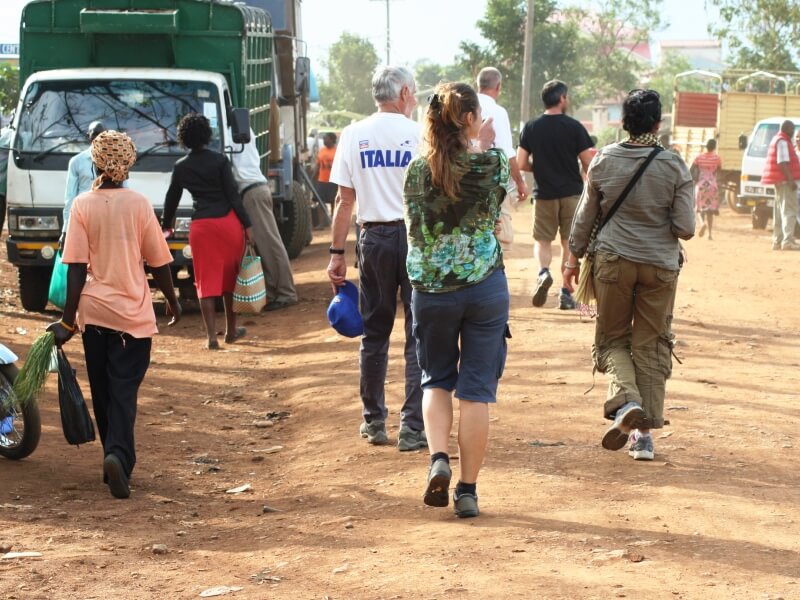
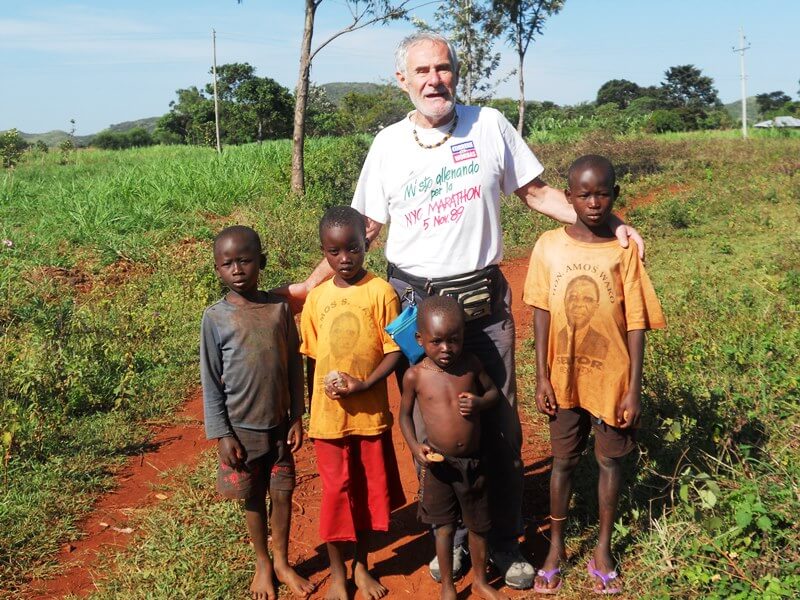

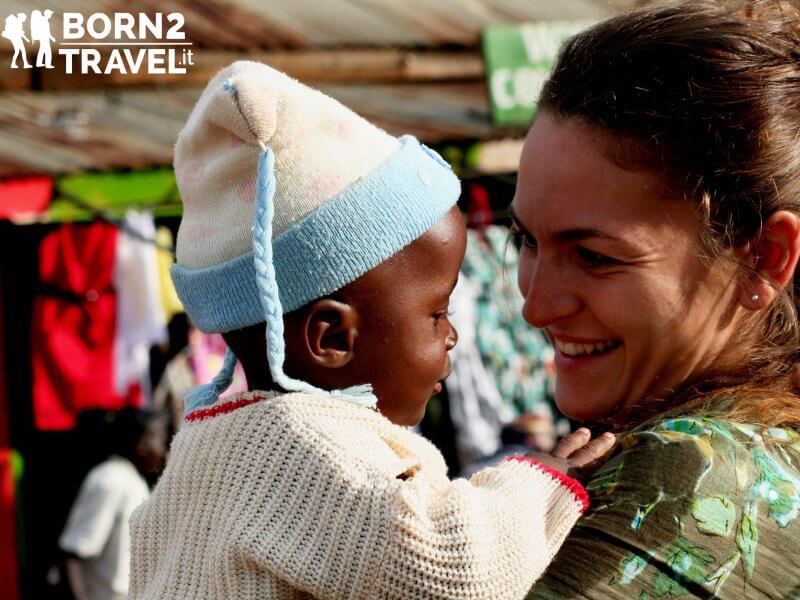
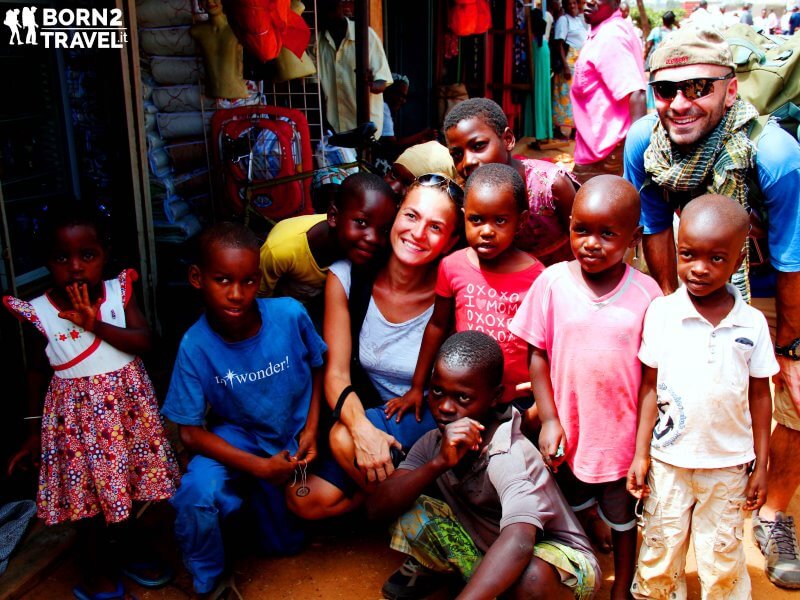
We travel all day until we reach the chaotic capital: Kampala.
We get tangled up in the traffic of the center on any Saturday night; mopeds and cars clog all roads; we often risk investing some passersby; there are many newly built buildings, banks or embassies, which clash with the surrounding landscape.
Martin struggles enough to keep this great beast at bay and two hours later, finally, we arrive at the Backpacker Hostel to rest our tired bones in a large dormitory.
We leave at six in the morning along the main road that splits the bright green of Uganda in the middle of the earth and straw huts; stalls sell mangoes, papayas, carrots, cucumbers or beds and sofas ...
In the late morning we arrive at the Ziwa Rhino Sanctuary and shortly afterwards, accompanied by a ranger, we go into the forest to discover the last specimens of Northern White Rhino.
Shortly thereafter, here are three specimens resting in the shade of a large tree. After all, it's 1.30 pm and it's 40 °! After a few minutes one of the three stands up ... shakes a little, looks around, is immense, but immediately lies down to rest again.
We leave for Masindi and at 16.30 we enter our lodges in the shape of a shed, very welcoming and with a fabulous hot shower!
We dedicate all afternoon to stroll in this small town. Let's take a look at the Sunday market; we stop in a music shop; we buy popcorn that we will leave to children at the market a little further on; we meet a lot of them, children with big and bright eyes like stars, we chat with them, we take photos while my heart is filled with serenity and positive thoughts.
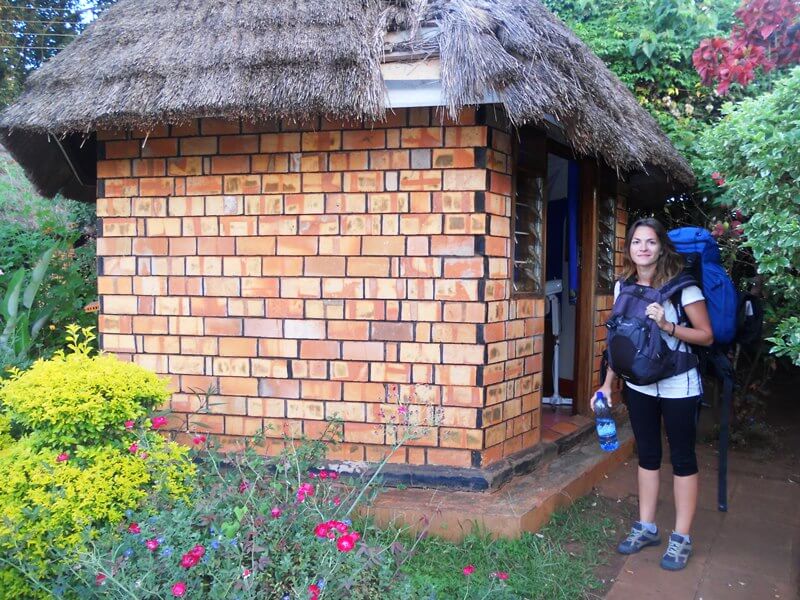
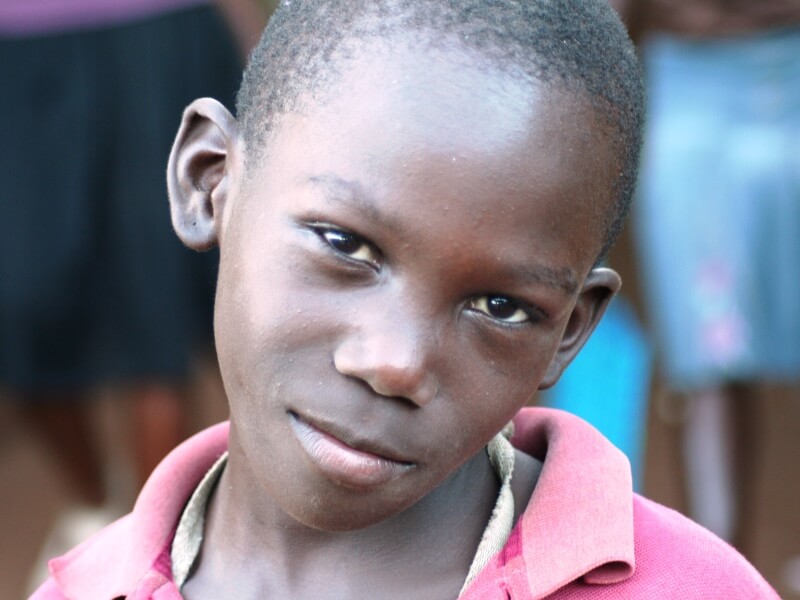
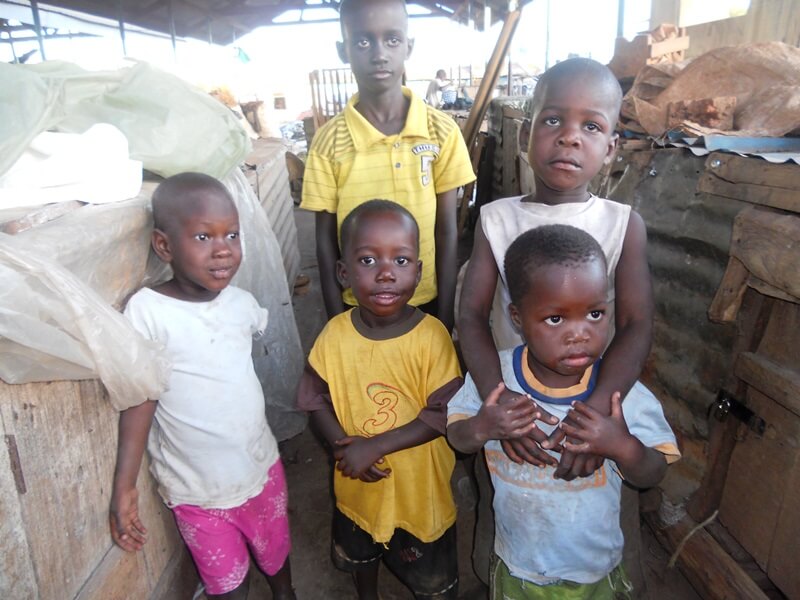
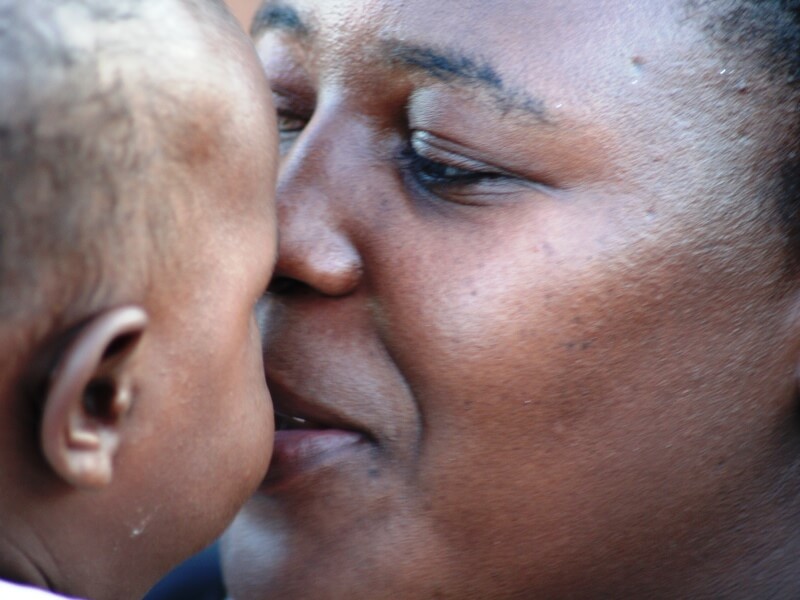
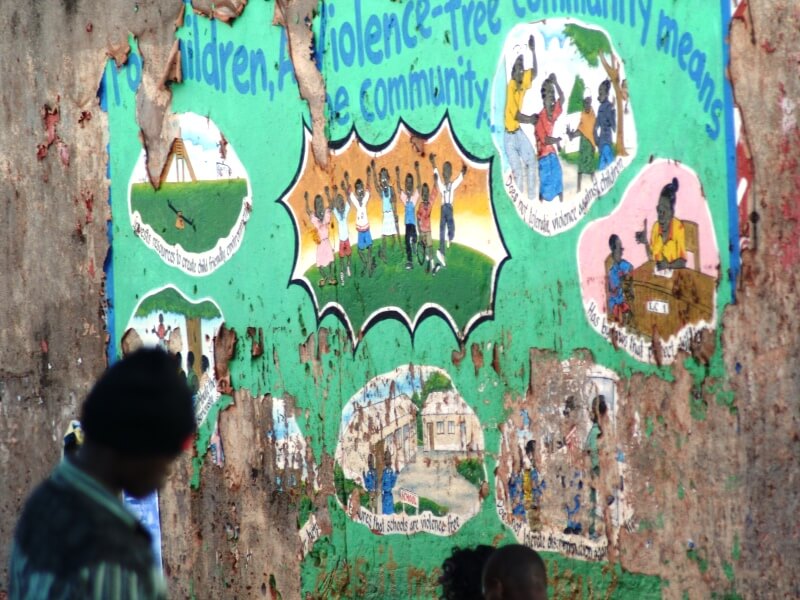
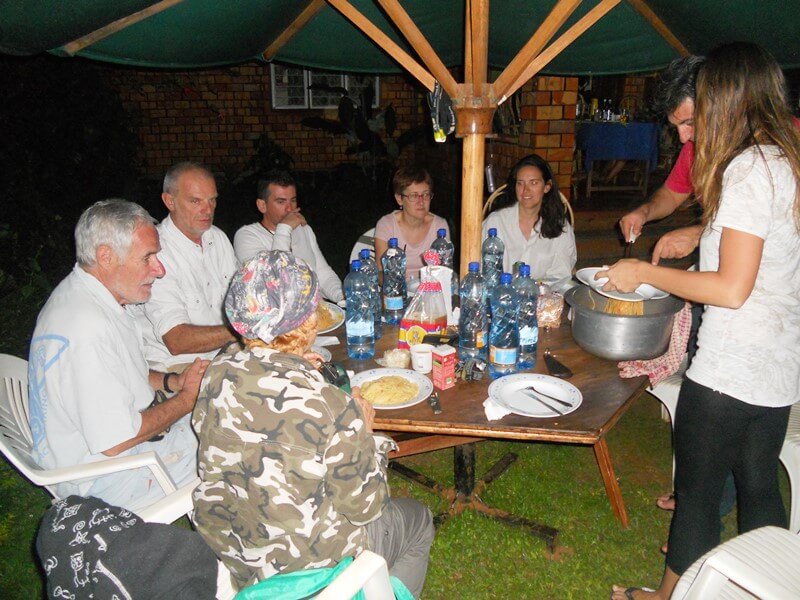
We leave early in the morning in the direction of the Murchison National Park.
Along the way we stop at Butiaba and Bulisa, two fishing villages to admire their daily lives.
Butiaba. A strip of red earth marks the center of the village, among thatched huts, fishing nets stretched out on the beach surround the shores of Lake Alberto.
We stop in a large football field and immediately find ourselves surrounded by a myriad of children with torn shirts and a game begins with a green patched foam ball ...
The fishermen return with the old boats from the batting, some clean the nets, some women load heavy buckets full of small fish on their heads and go to the market, a woman washes a pot folded on the shore with water and sand from the lake, the children they play carefree ...
Bulisa. Yellow-colored huts form the backdrop to the small market. We buy some bananas while we wander among the stalls of old things used under a scorching sun ...
In the late afternoon we reach the Red Chilly Hideaway campsite; we struggle a lot to assemble the tents on a very hard ground, we are sweaty and tired and the pegs break continuously; cold and poor shower but we are happy!
At seven in the morning we cross the river and our safari begins in Murchison National Park. We meet elephants, many giraffes, herds of buffaloes and wildebeests, impalas, Thomson's gazelles but no felines ... not even carcasses around ... here the life of the docile herbivores seems to flow calmly ...
In the afternoon, by boat we sail along the canal until we reach the Murchison Falls.
Hippos yawn bored, crocodiles relax on the shore with sharp jaws on display; wildebeest, gazelles and impala drink carefully; a large elephant barricades us looking irritated, a fish eagle flies imperiously and suddenly dives to conquer a fish ...
Once near the waterfall, we get off the boat to climb a hill to the peak of the water jump. We climb and struggle to reach the summit, once there, with open arms with millions of droplets on the body after the sweat of the climb we enjoy the harmonious sounds of nature ...
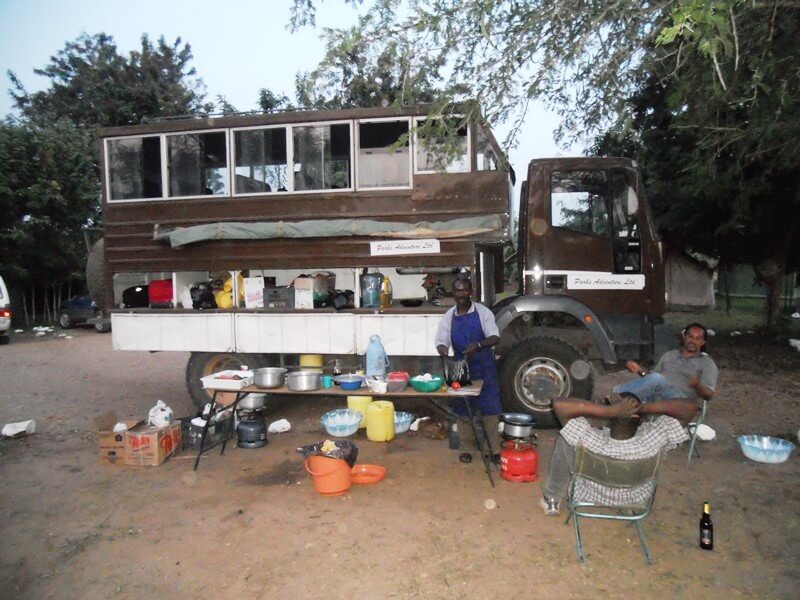
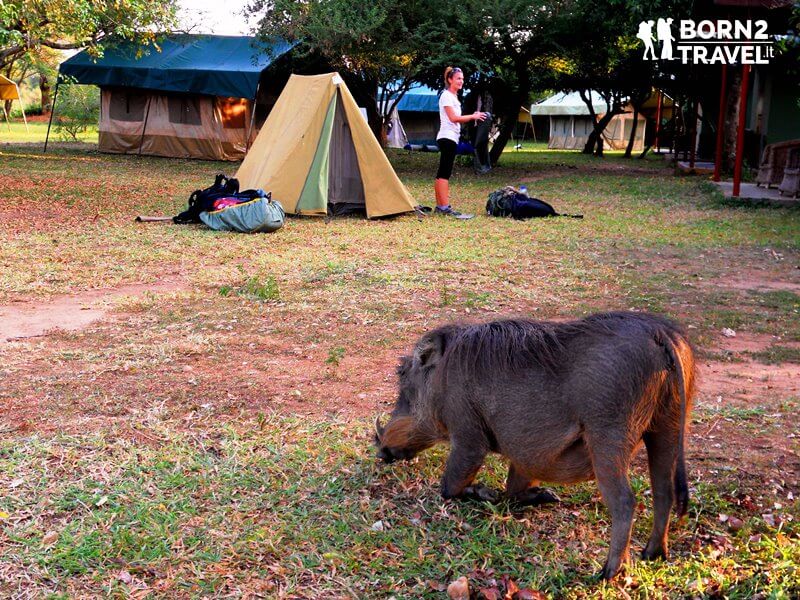
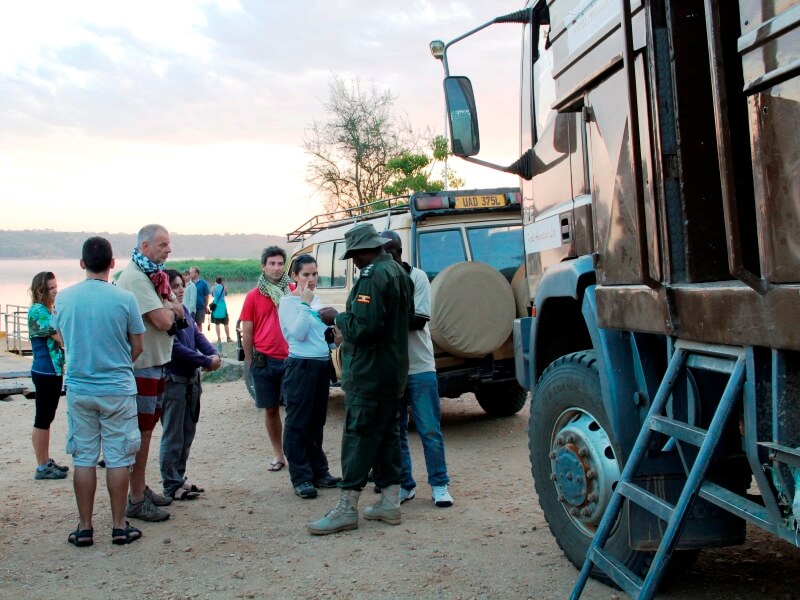
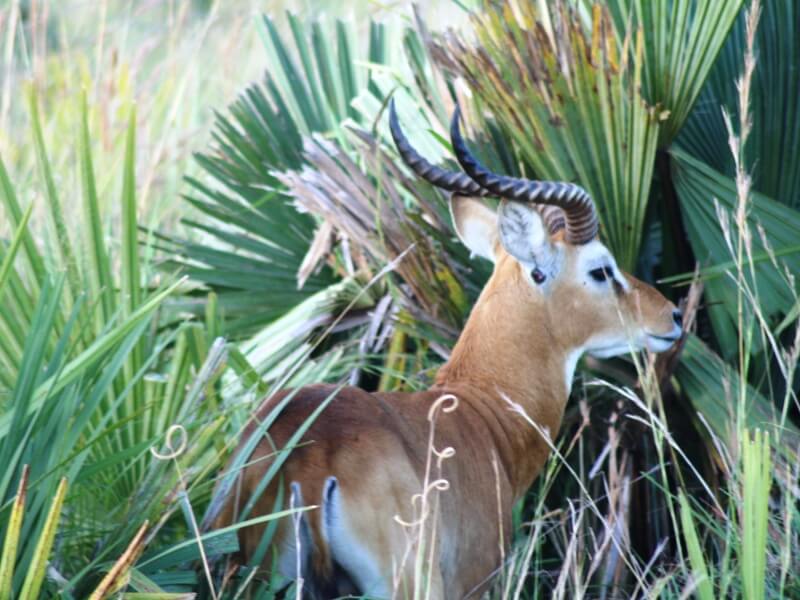
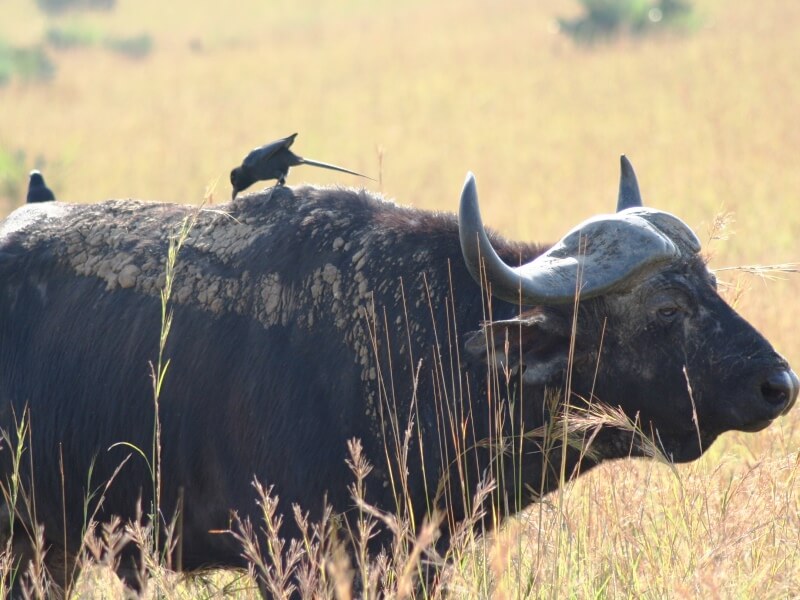
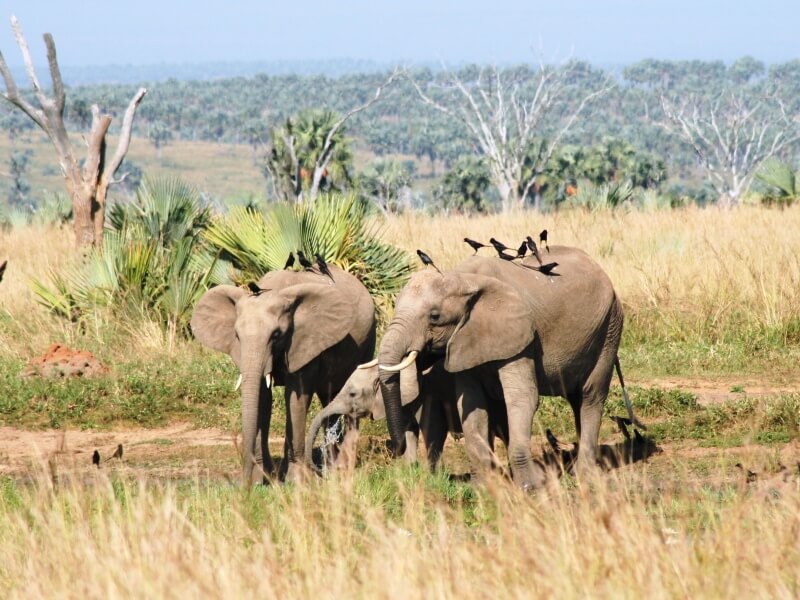
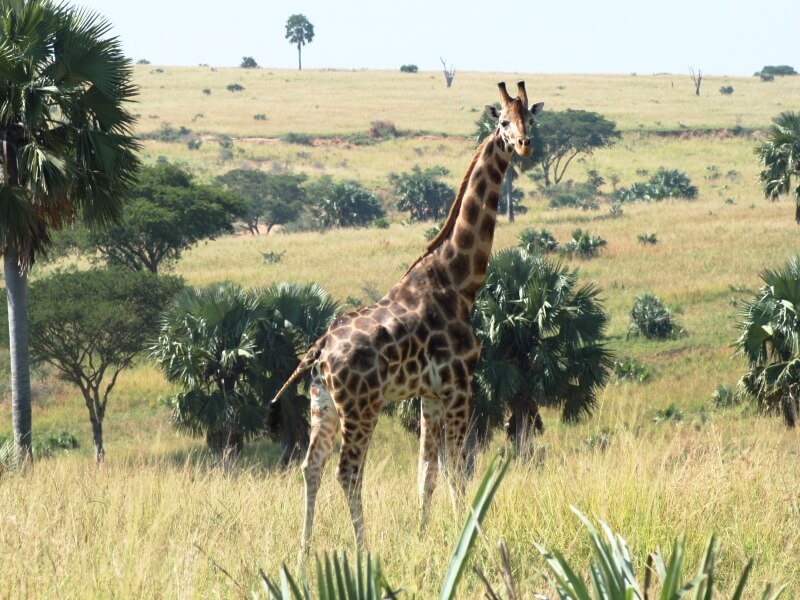
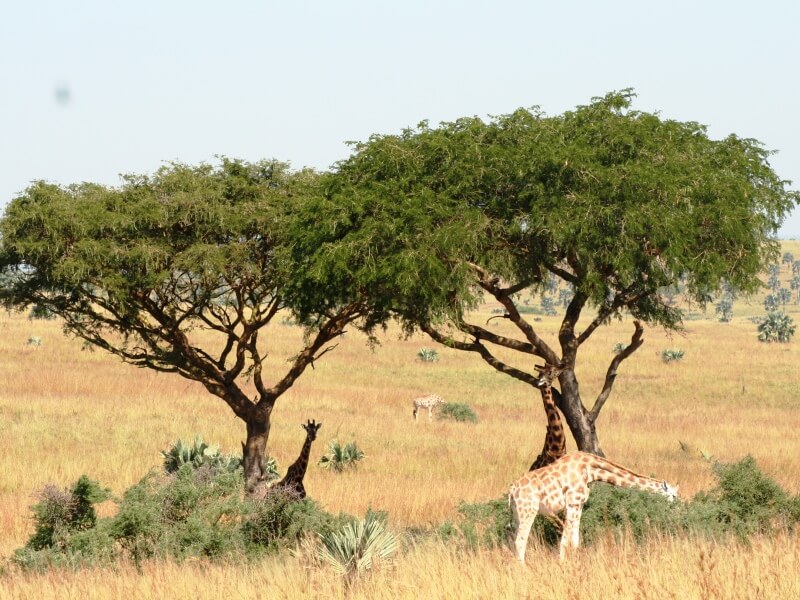
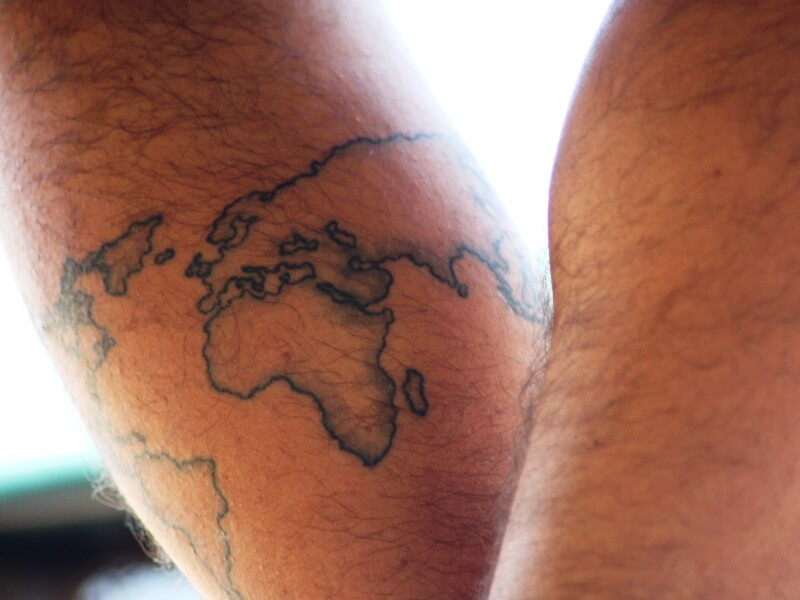
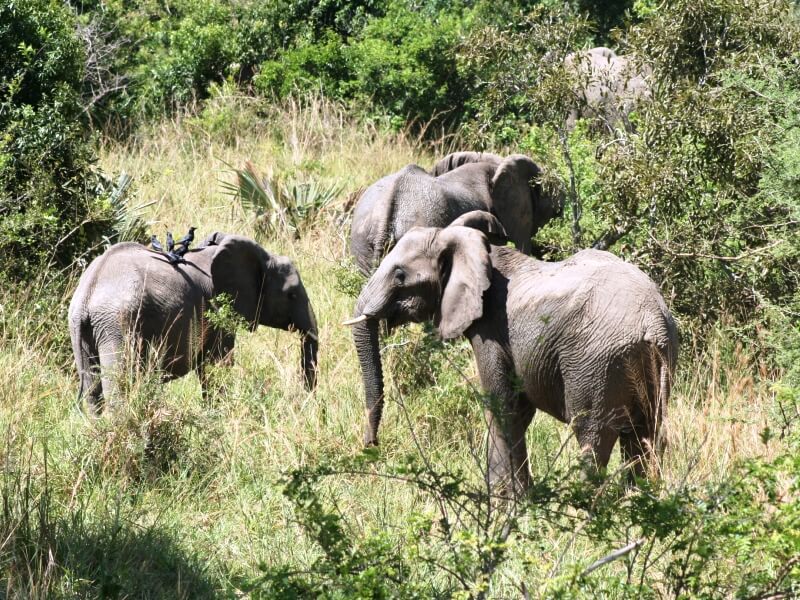
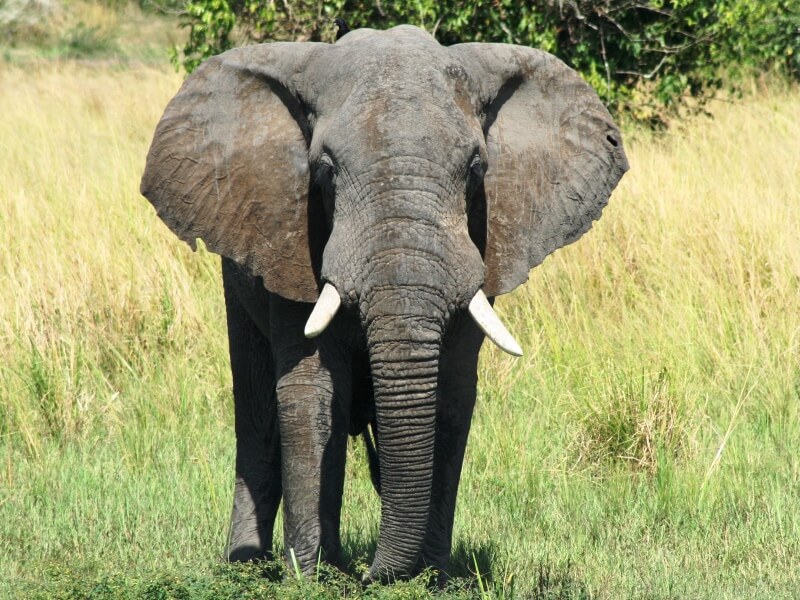
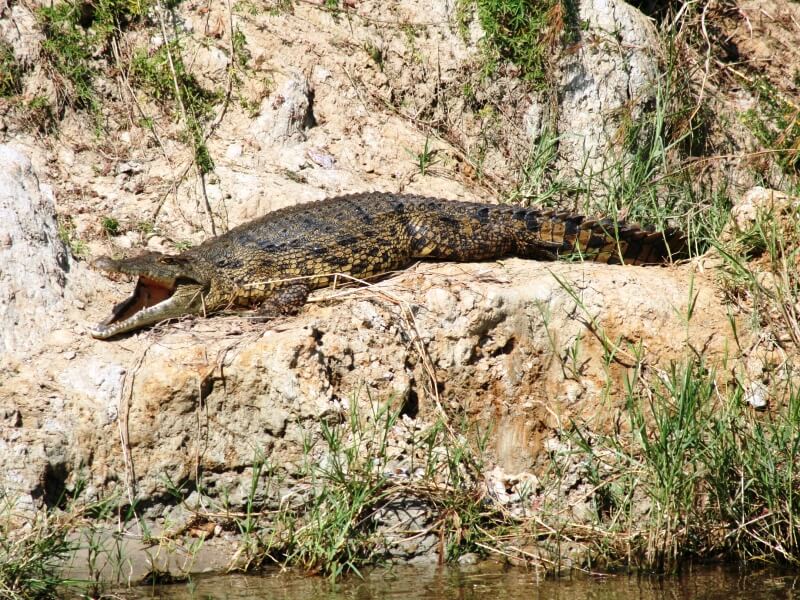
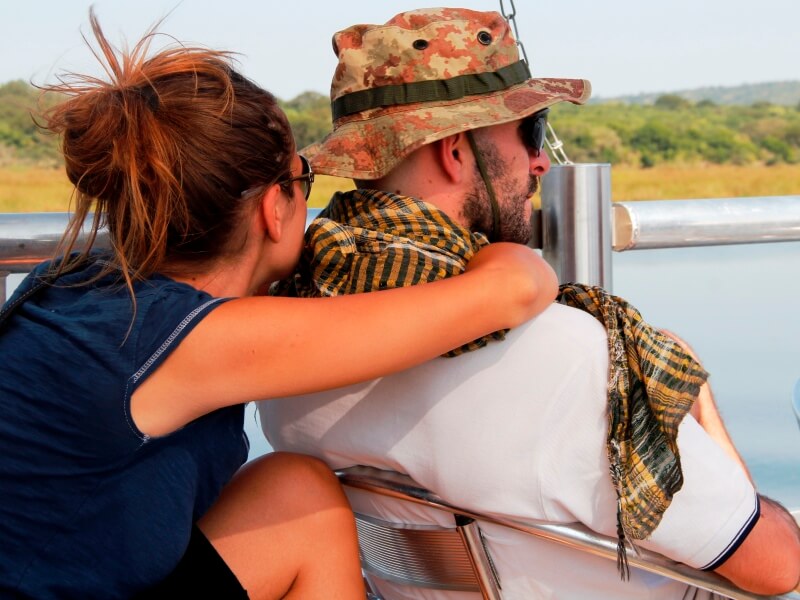
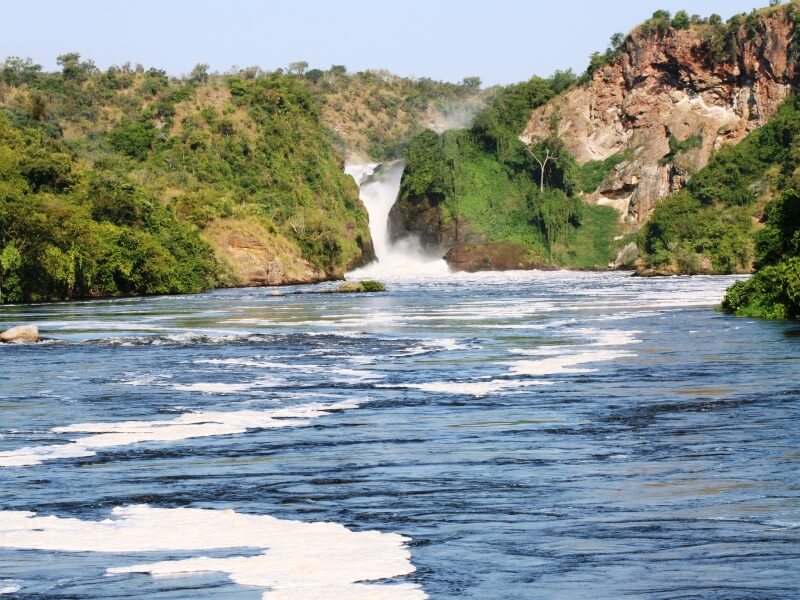

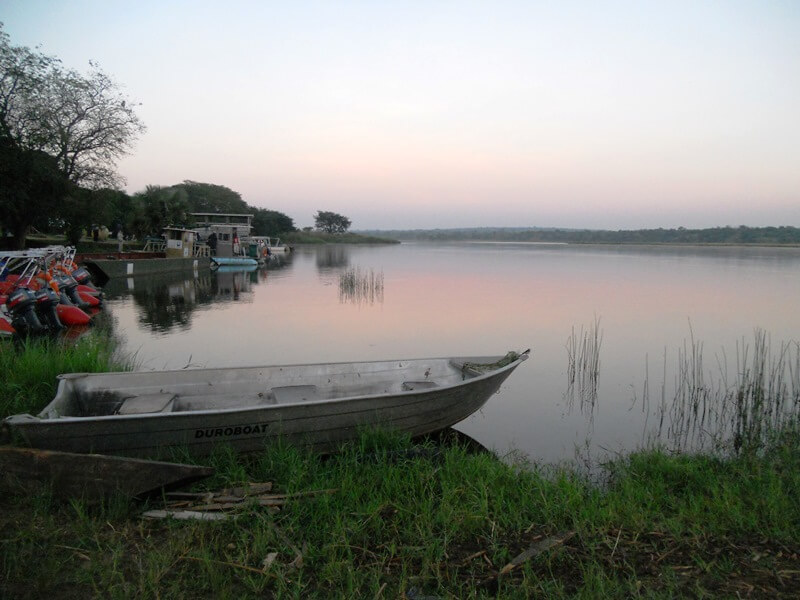
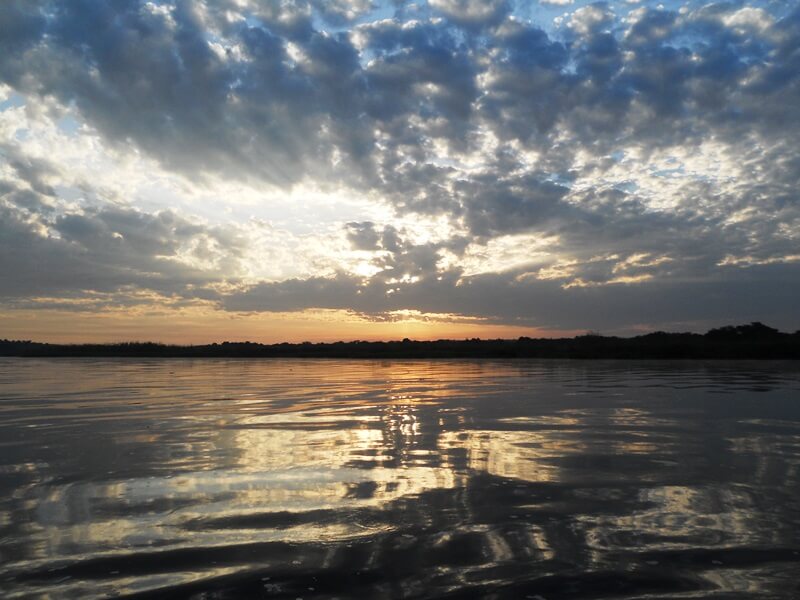
We dismantle the tents and leave for Hoima.
The journey is quite hard because of the rough road and full of big holes.
We meet several monkeys who observe us surprises as they jump from one tree to another until a large branch perfectly centers the windshield, just my side, and almost everything shatters.
Once we arrive at our destination, we take the opportunity to do some shopping as supplies begin to run out ... the sun is still high in the sky and we are full ... we then decide to make another little effort and continue to the stage scheduled for the next day ...
The day turns into a long transfer. We pass through various areas where the tsetse fly is said to reign and then we are forced to "seal" ourselves well inside.
The road is heavy and suddenly we are stopped by a broken down bus that blocks the path. We note that the rear axle is missing and in absolute calm all the passengers begin to get off unloading everything: huge bags of wheat, hysterical roosters, pots and pans, cardboard boxes up to gigantic durien ...
With African patience we try to help too; we hoe a whole rise in the ground to allow the passage of our truck.
The first attempt fails and the poor Martin almost ends up on the bus ...
Let's start hoeing hard ... second attempt ... it's dangerous this time we can!
All on board and traveling until evening, crossing tea and coffee fields, reaching almost 2000 meters.
Finally Fort Portal. It is evening, it is dark and it is difficult to find the right way. We settle into a perfect African-style hotel; we are exhausted but Nicolò delights us with a good plate of spaghetti and speck.
My watch shows almost 40 °. "It's really hot" - I think to myself, just as we cross the equator line! What an emotion!
In the late morning we reach the entrance of the Queen Elizabeth National Park; under a torrid heat we set up our tents and immediately after we leave for a game drive ... suddenly the sky darkens and from big black clouds it starts to rain heavily ...
The mood is not skyrocketing, we are tired, our curtains wet, there is no possibility of showering or relaxing but illuminated by the dim light of our headlamps we have dinner and spend a nice evening with friends.
The alarm clock rings early in this isolated Queen Elizabeth camp. The barking of elephants, the roars, the chirping of cicadas, the howls of jackals and the chirping of a thousand different birds still ring in the air.
I open the zip of the curtain and look out for a moment ... it's still dark.
The rangers armed with kalashnikovs chat sitting on a log in front of the fire that has heated them all night.
They point me three large hippos walking undisturbed in the distance ...
It begins to dawn: it is magnificent!
We go for the game drive.
Elephants, buffaloes, gazelles, antelopes; we see young lions jumping from one bush to another; what elegance and tenderness when shortly after they begin to fiddle and pamper themselves while, at a suitable distance, all the other animals of the savannah observe with extreme attention and respect every single movement ...
They must have already eaten since they don't care much about all the easy prey that surrounds them.
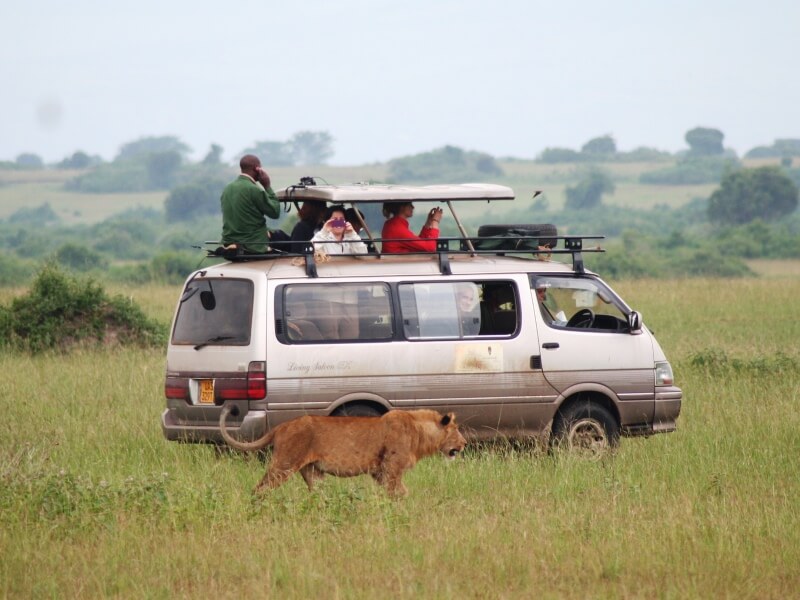

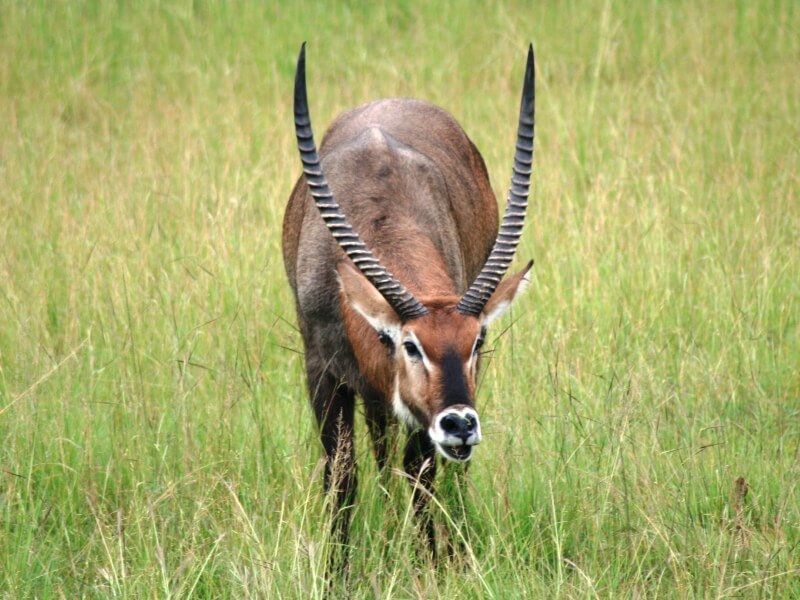
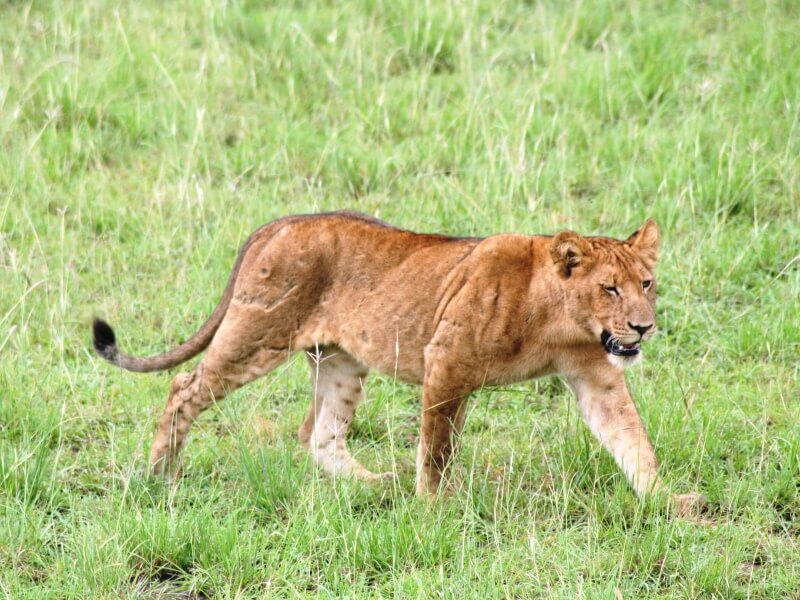
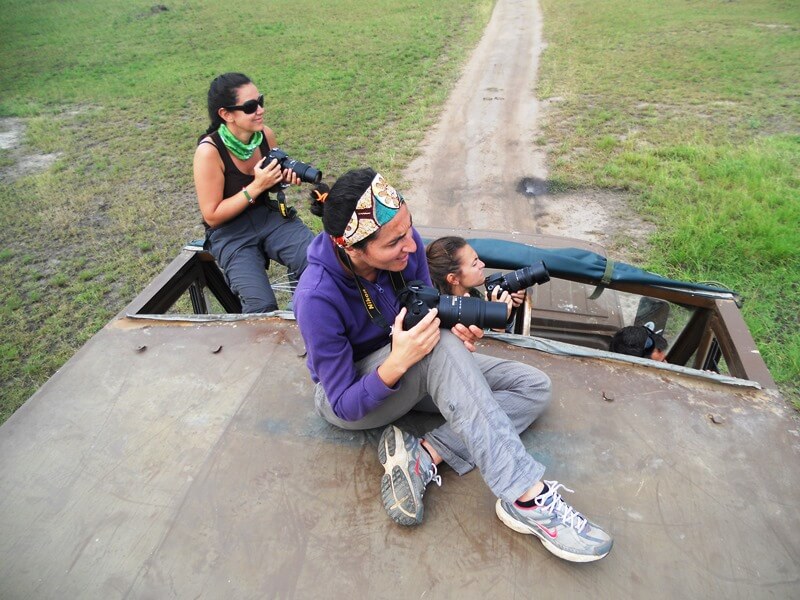
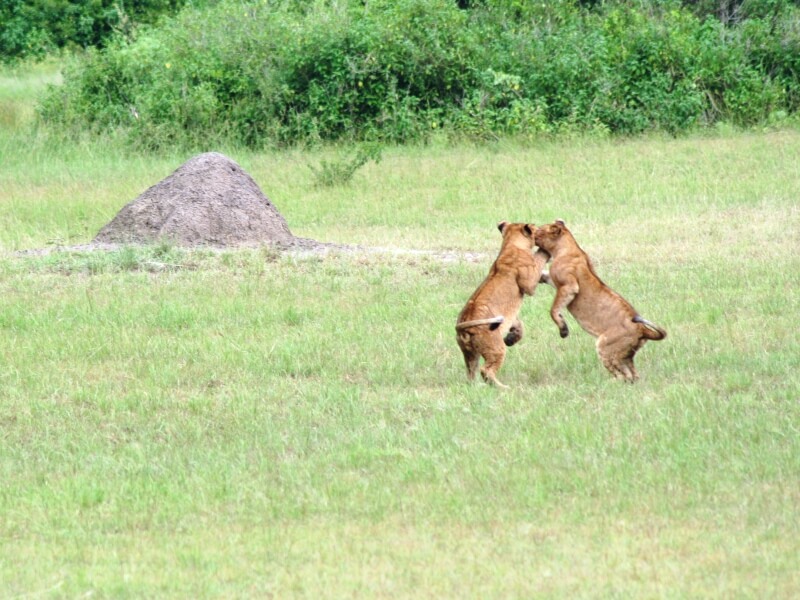
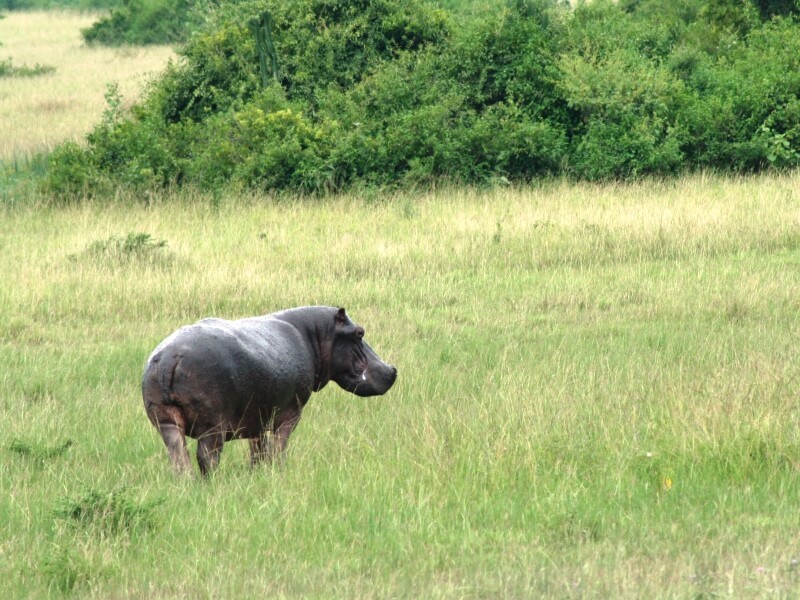
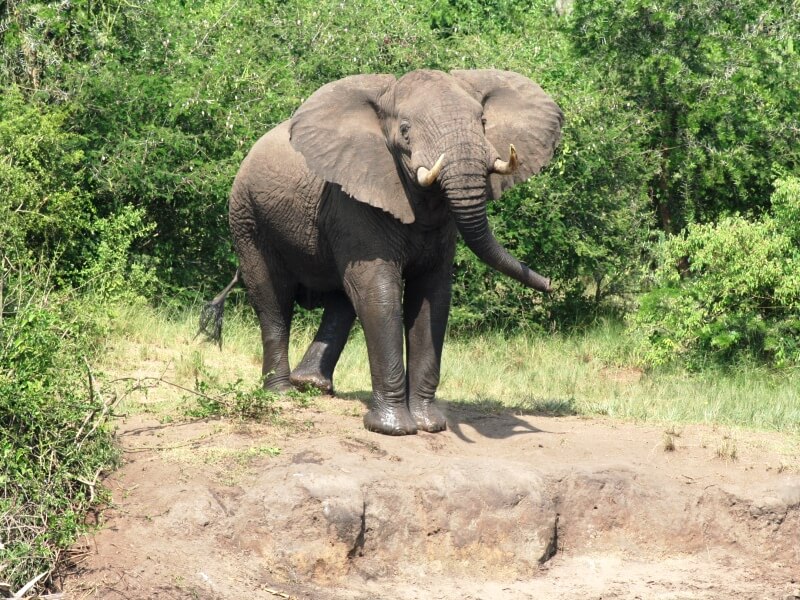
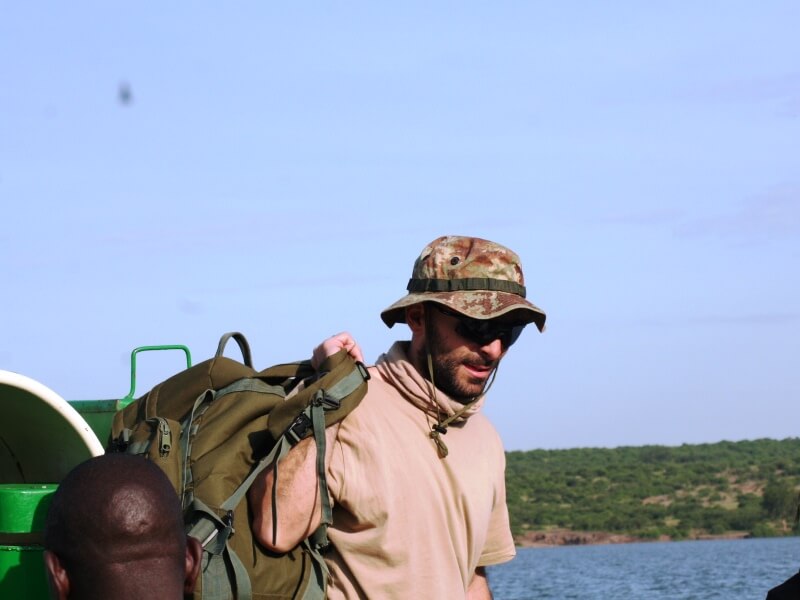
In the afternoon we leave on board a boat along the Kazinga Channel that connects Lake Edward to Lake George for an exciting photo safari.
Here too there is a succession of great emotions: dozens of hippos who dive into the water and then re-emerge with that funny head; zebras, antelopes and gazelles drink calmly; crocodiles prowling menacingly; kingfishers looking for some fish, then cormorants, elegant pink flamingos ...
A little further on there is a fishing village; it's amazing to think that these people lived with elephants, hippos and lions ...
In a circle in front of a big fire, between stories, anecdotes and songs we spend one of the most beautiful evenings while a starry sky is the background and the sounds of nature soundtrack.
Suddenly a loud distant roar rips open the air: it is the goodnight of Queen Elizabeth National Park.
Long day of travel to the borders of Rwanda and Congo. We pass through very poor rural areas, small villages of straw and mud huts; children with too large and worn tshirts play freely; old people rest sitting on clods of earth ... we also meet a UN refugee camp, they tell me that hundreds of Congolese who fled two weeks earlier because of internal unrest are staying.
It's raining hard and we don't want to set up our tents, we opt for a hotel.
6.00 am. Pitch dark. On board two jeeps we climb to reach Bwindi National Park and the "Impenetrable Forest". The road is in poor condition and the two hours of travel are somewhat tiring. Today is the big day dedicated to the discovery of the silverback gorillas: these large endangered mammals.
Quick briefing with the rangers and let's start with the track seekers towards this new adventure.
We follow paths dug in the thick rain forest, the path is intense; we walk for about an hour when the ranger receives a radio call from the track seekers ahead of us ...
We should meet the Silverback gorilla family in forty minutes.
We climb through a small path just carved with machetes. We help each other by clinging to lianas or bushes until, suddenly, we hear noises coming from the top of a tree. We stop in religious silence, look up and catch a glimpse of the baby gorilla who tenderly makes his way from one branch to another. Funny, after eating a few leaves, it falls from the tree!
The throaty verse of a big Silverback is getting closer. Here it is, an adult specimen with a silvery back in front of our astonished eyes, just two meters from us.
He sits down, eats a few twigs and dives into the unknown of the impenetrable forest ...
The rangers look at us, understand that we want to follow him ... the real adventure begins ...
They cut everything that appears in front of their path with strong machetes, we follow them as best we can, sinking without even seeing where, down with our seat on leaves, branches, slimy trunks, mud is everywhere and at some point, in order not to fall I cling to a branch ... too bad it was full of very hard black thorns that stick deeply into my hand.
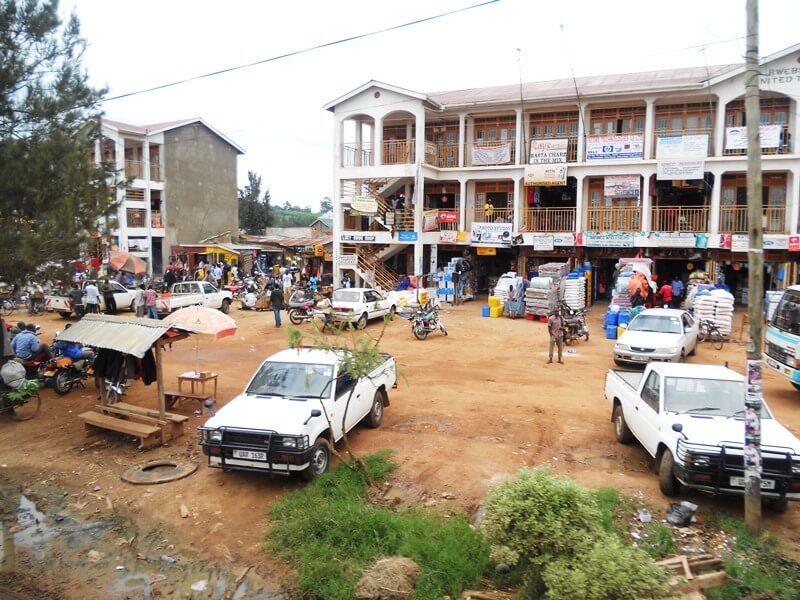
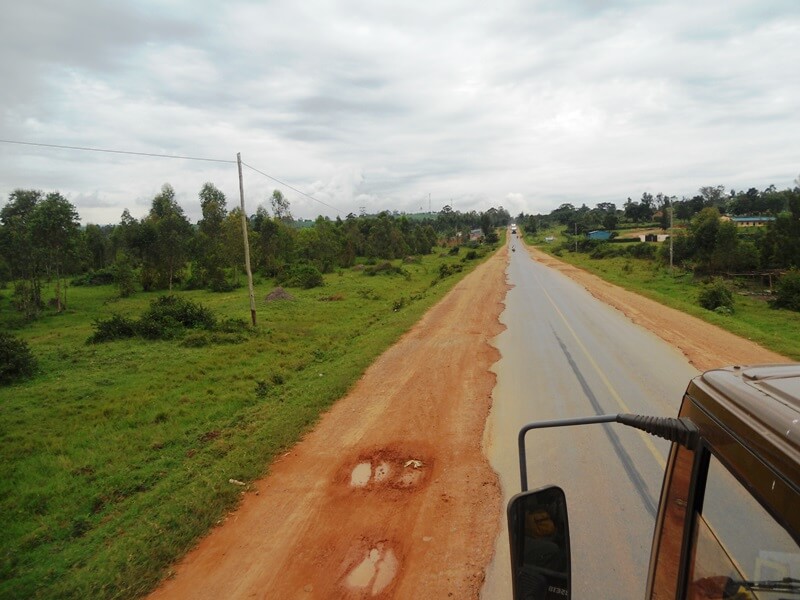

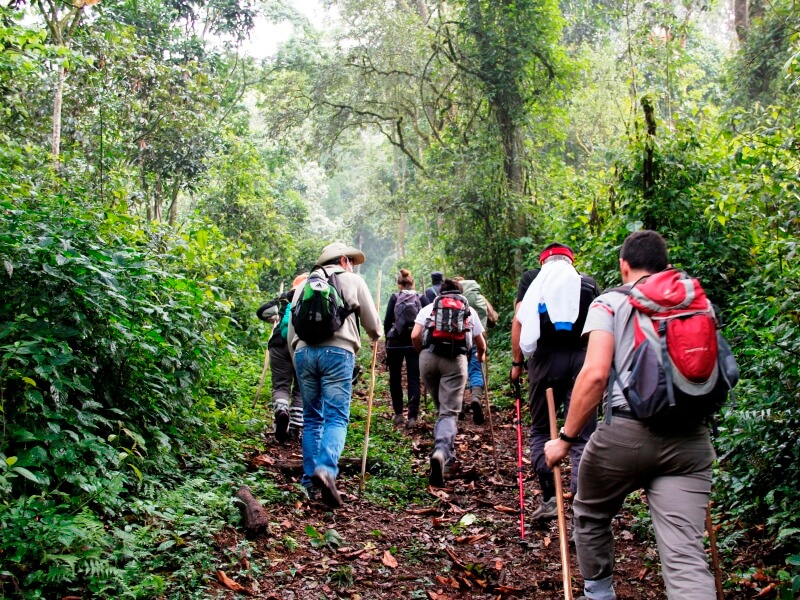

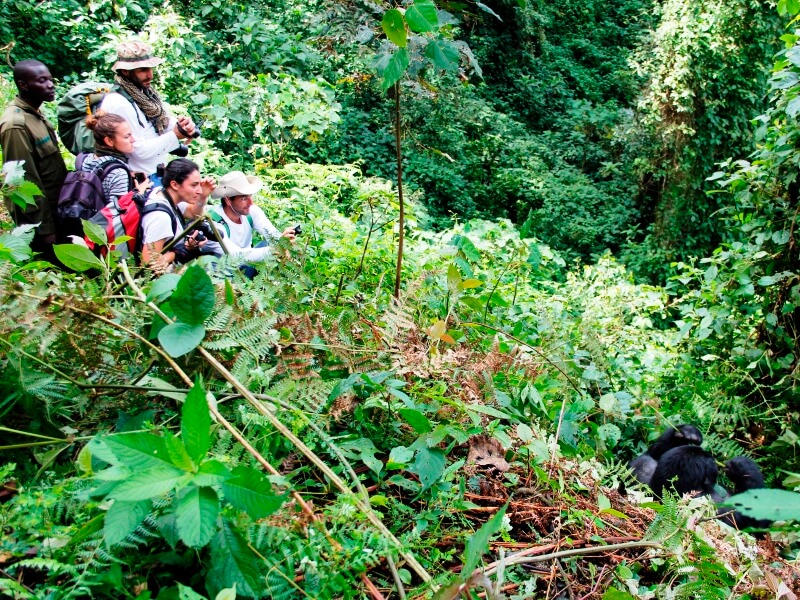
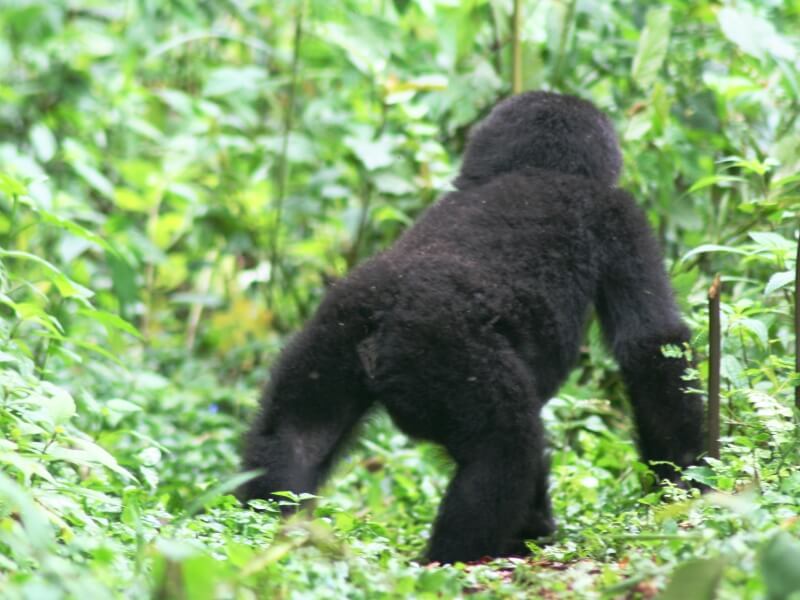
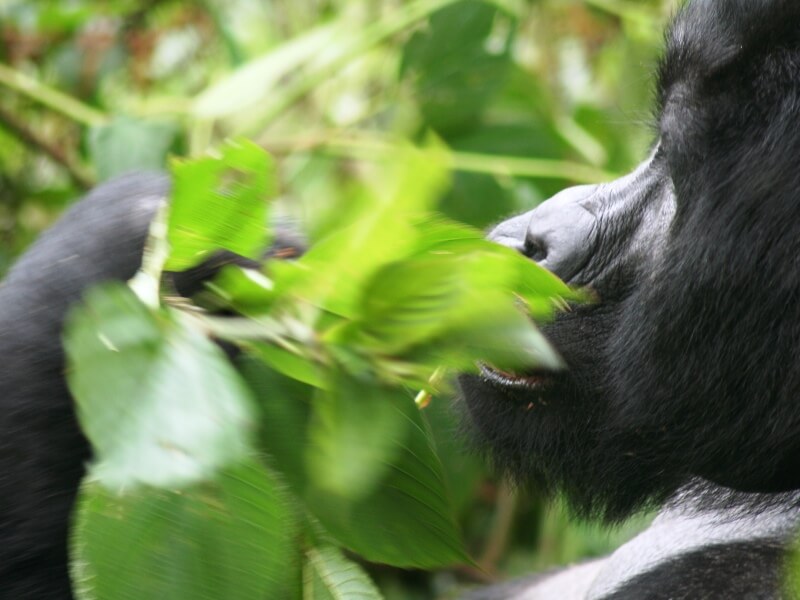
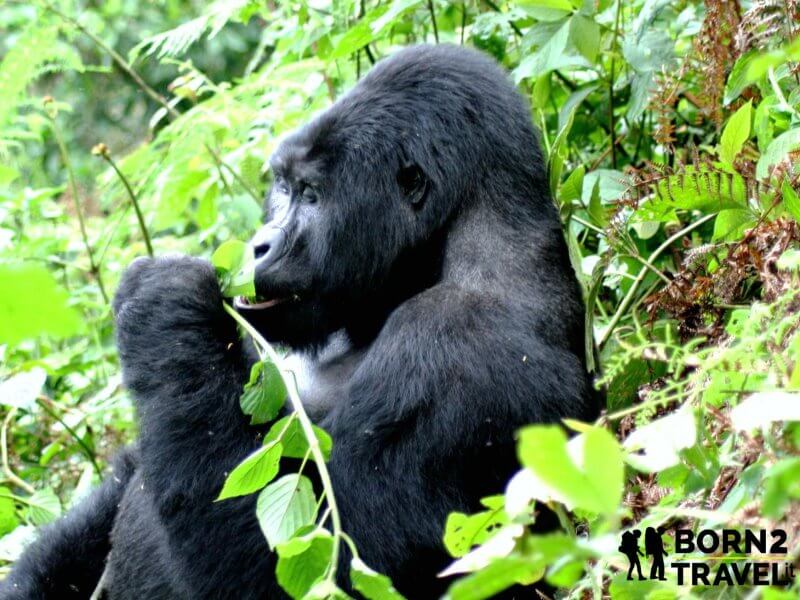
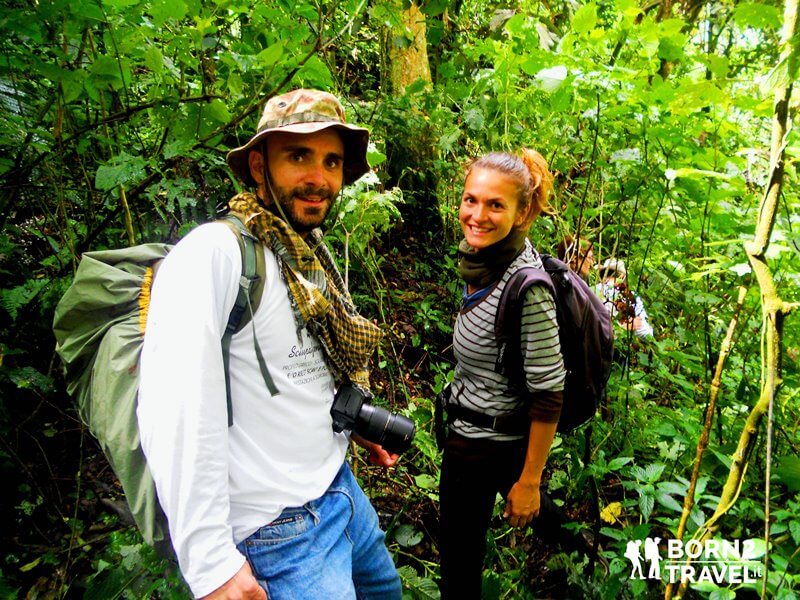
The Uganda-Rwanda border is immersed in fog, there is only a bar indicating the names of the two nations with a bored policeman who observes the few people passing by ... we, with our big truck, arouse a lot of curiosity.
Customs formalities are fast and in a few minutes we leave Uganda to cross the small area of nobody on foot. Welcome to Rwanda.
The landscape changes completely. Who expected Rwanda like this?
Well-paved roads, well-tended green lawns, concrete huts.
We soon reach the capital: Kigali.
We have lunch along the road, in a shack, with baked potatoes and samosas before arriving at the gate of the "Genocide Memorial".
I thought that after Auschwitz and Phnom Penh I had metabolized absurd situations, meaningless and to be condemned ... but it was not so.
The museum begins with a historical-political presentation of Rwanda, from the advent of the Belgians to the bloody genocide of the Hutus and Tutsis, passing through an exhibition dedicated to children up to the massacres of the last century in the world.
Madness, man's stupidity is unrivaled.
I read, watched videos and listened to gruesome direct testimonies; people killed, families exterminated by friends, neighbors, work colleagues or classmates just because of another ethnicity.
How is it possible that the world has once again watched?
I was surprised to think that the Cambodian massacre had happened in 1979 ... but here we are talking about 1990!
We leave for Kibungo, we are still upset and silent ... we approach Tanzania.
In a short time we are already in Rusumu, the border, while a waterfall of red water fills the scene!
We are in Tanzania and the landscape changes completely again ... only poor miserable huts, barefoot children on disaster roads ...
Long day of transfer to Mwanza, on the shores of Lake Victoria ...
We set our tents in the light of our front torches listening to the verses of a group of hippos not far away ...
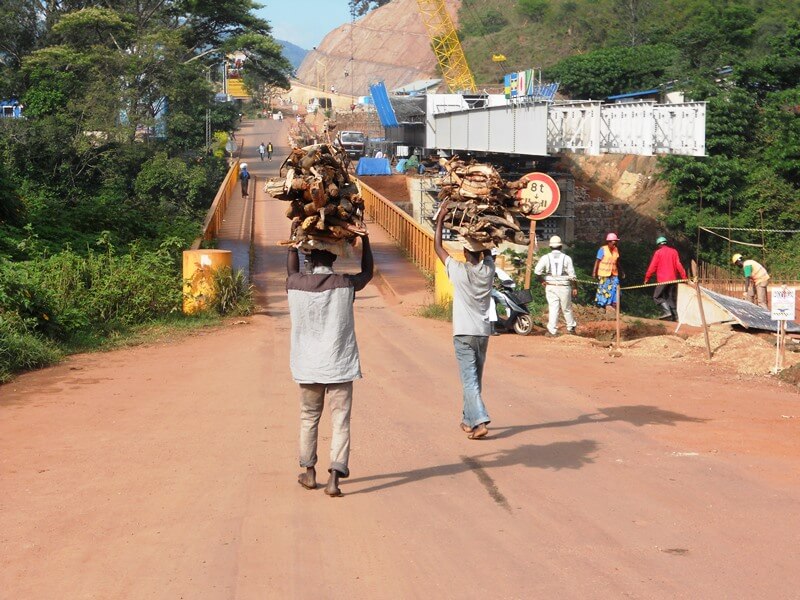
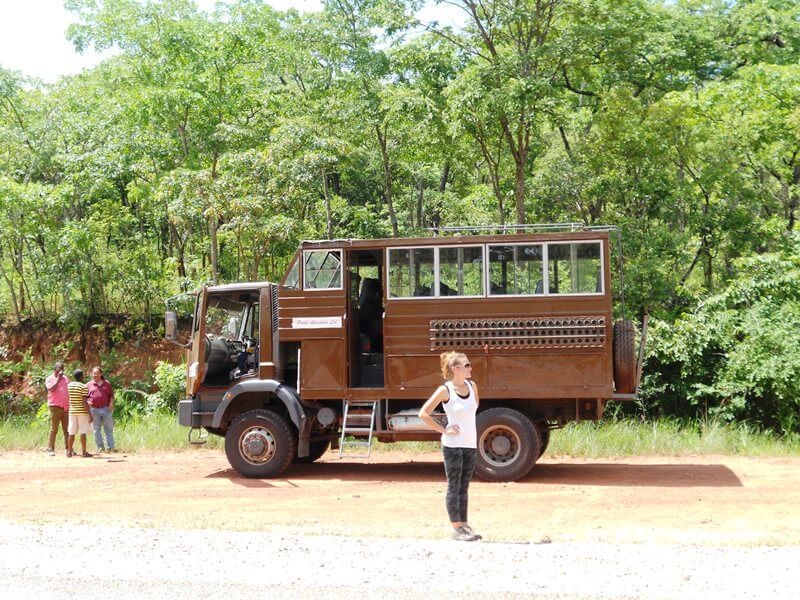
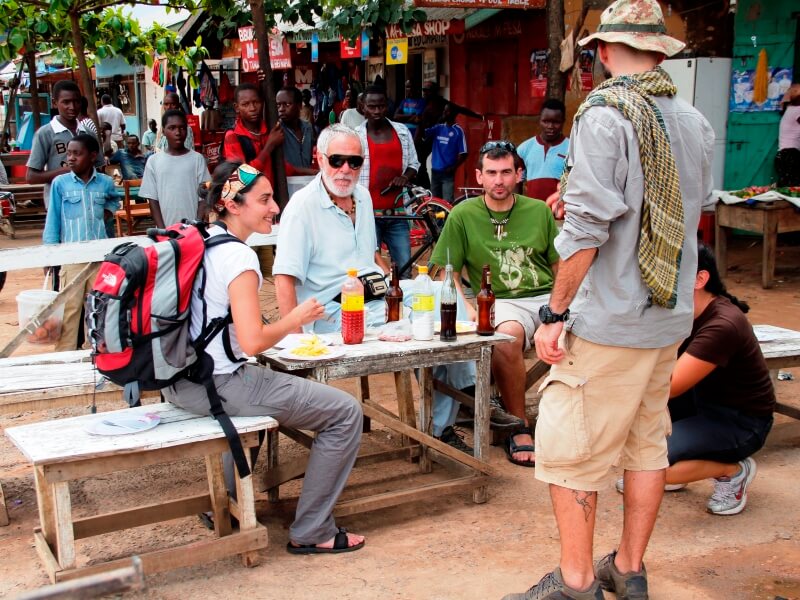
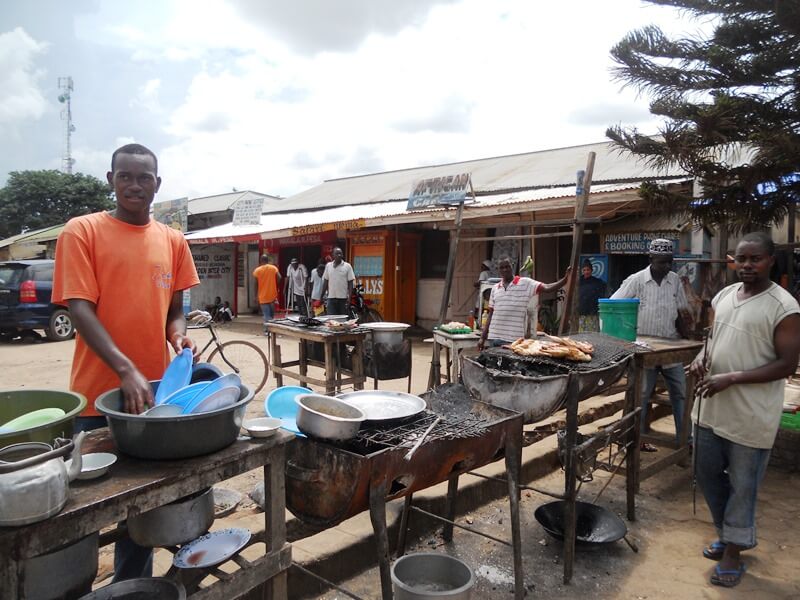
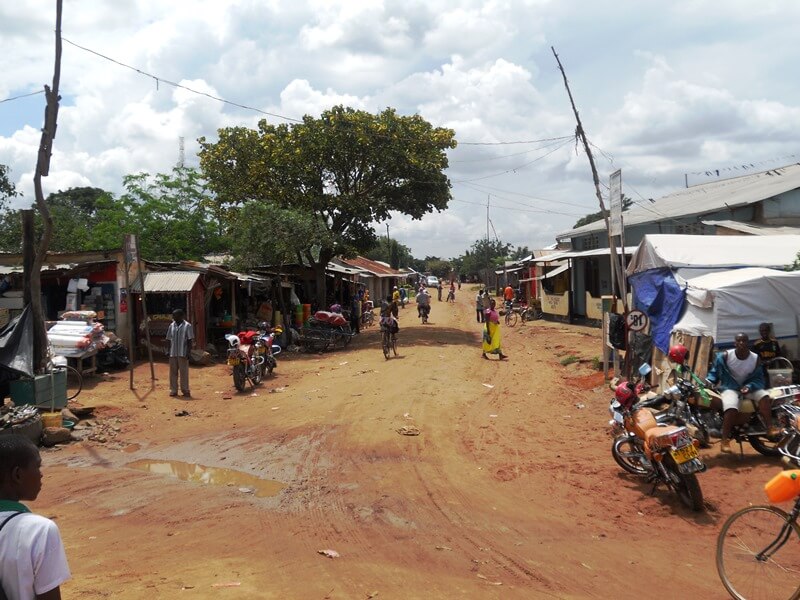
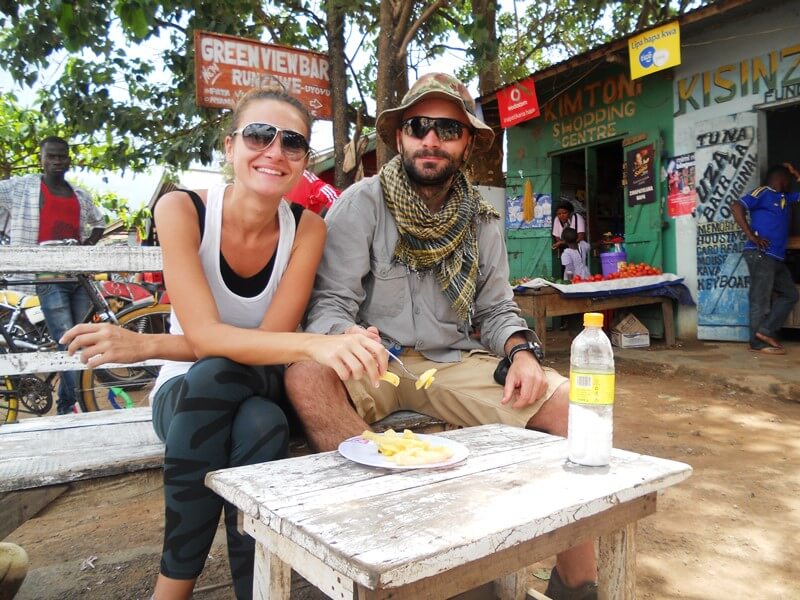

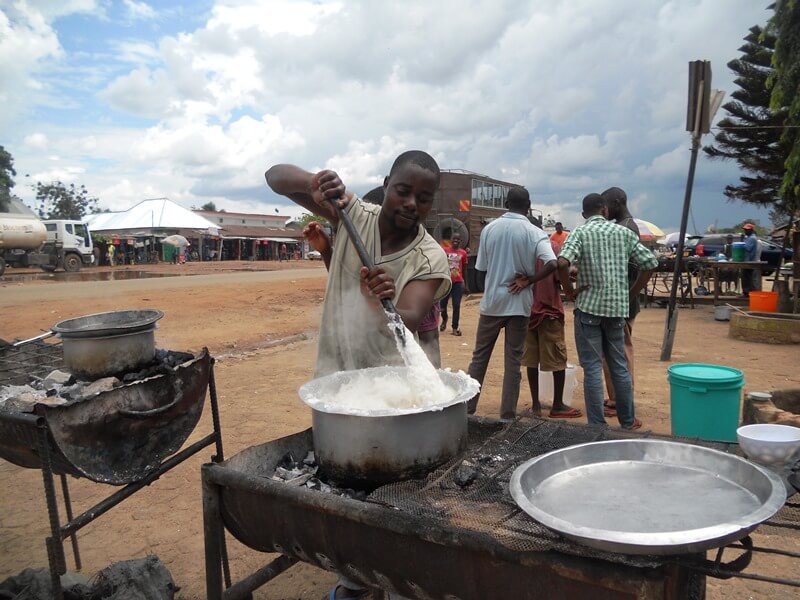

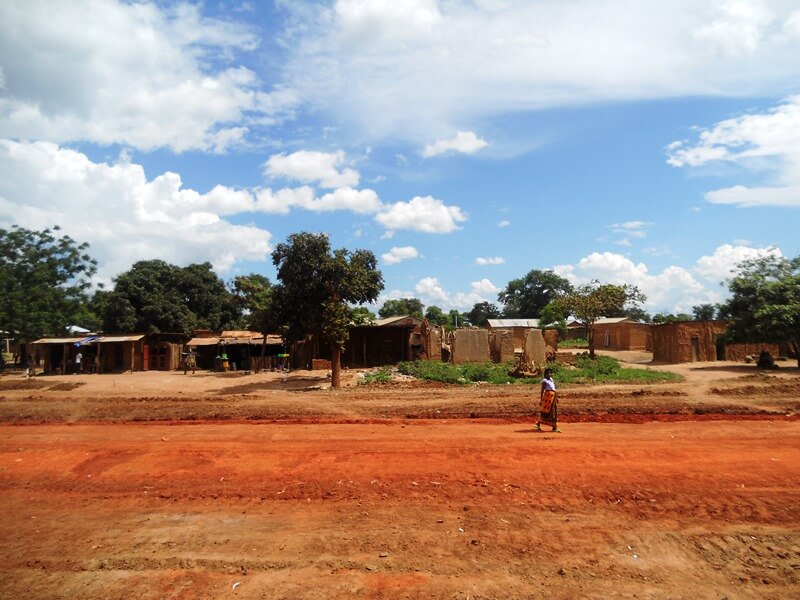

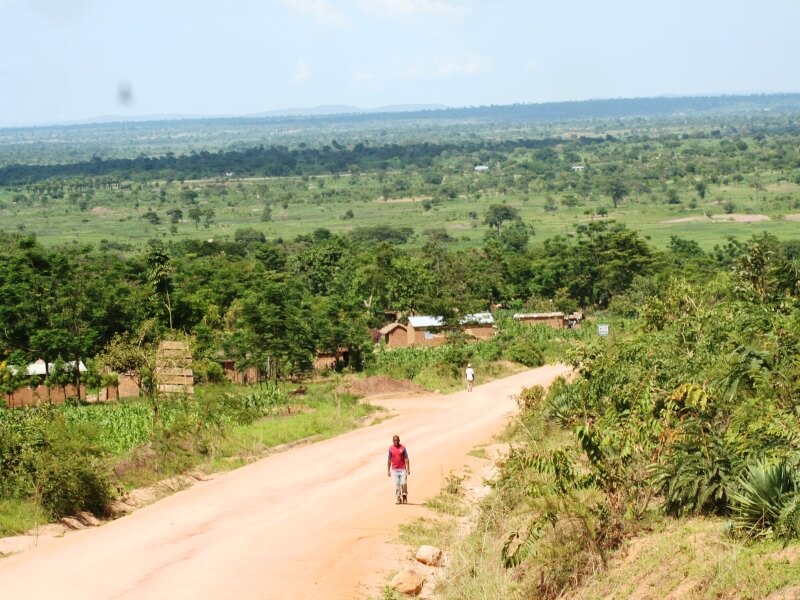
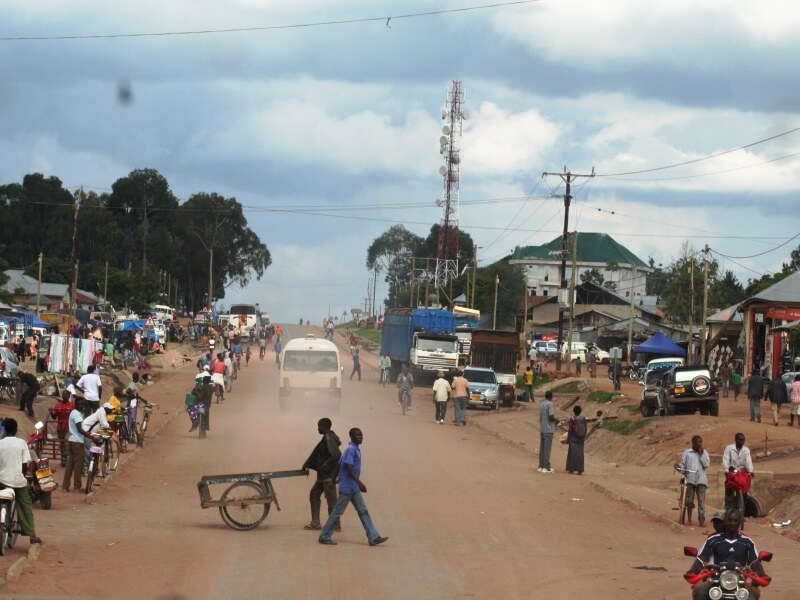
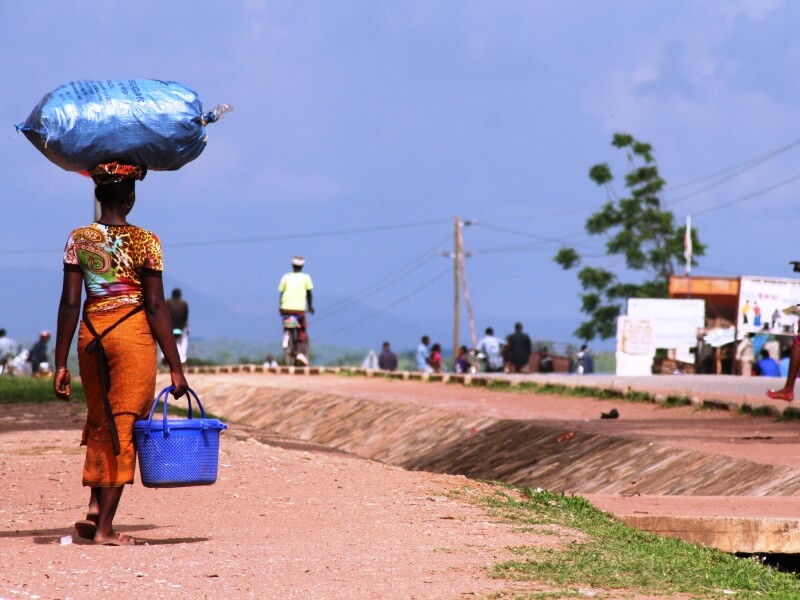
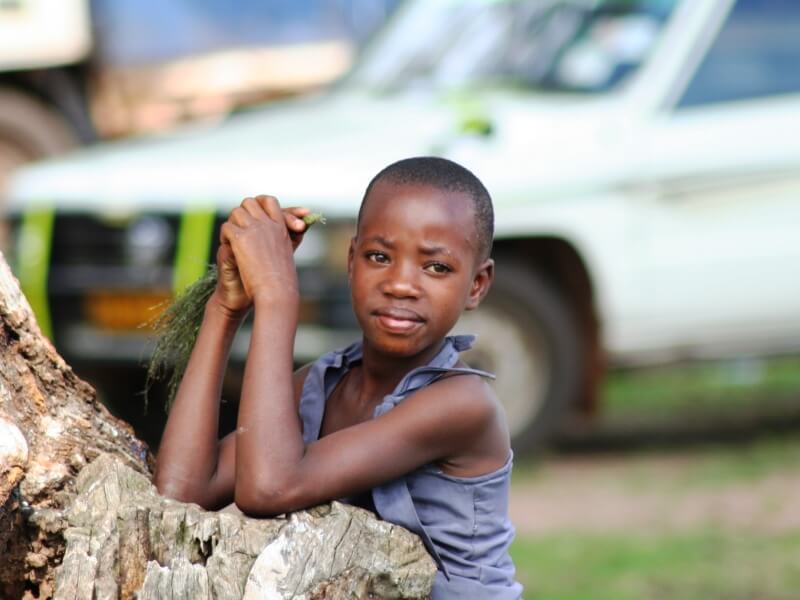

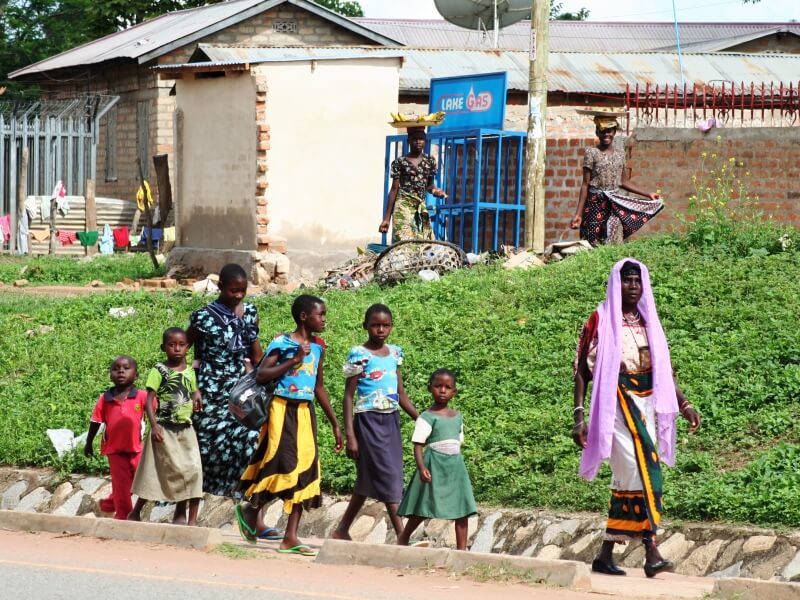
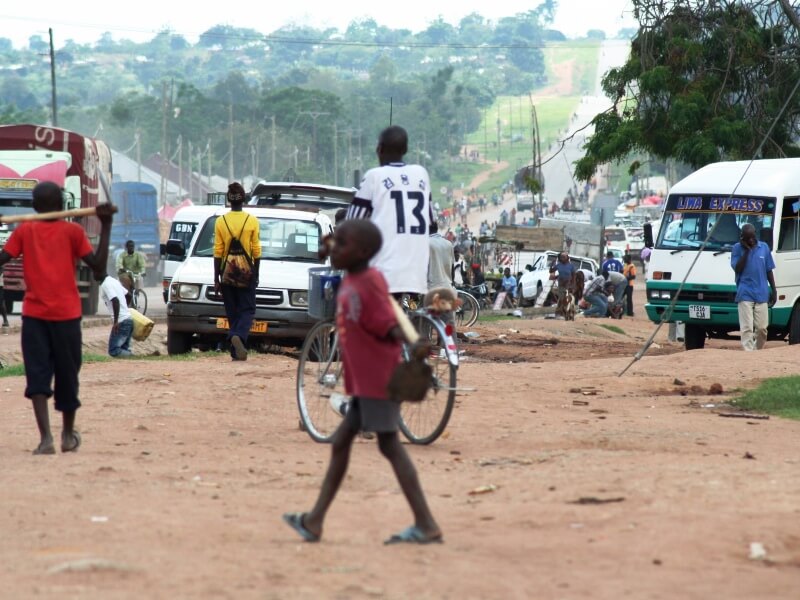
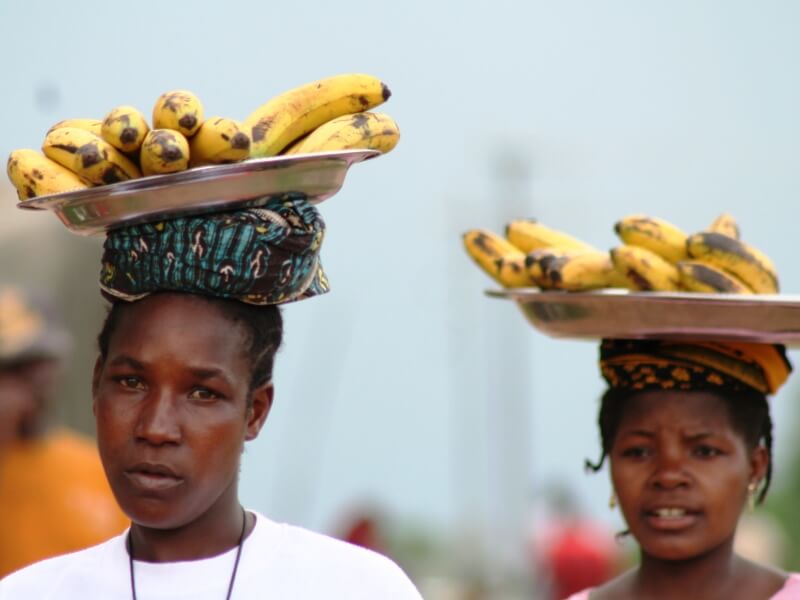
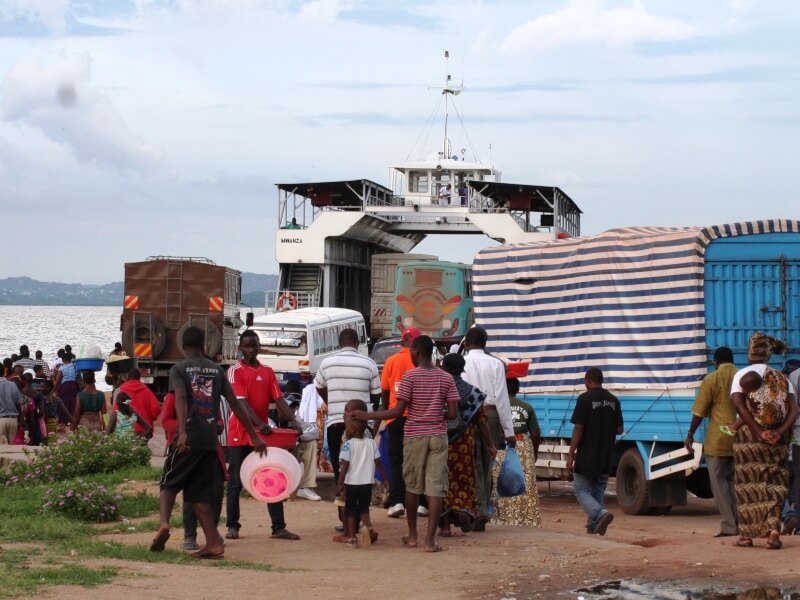
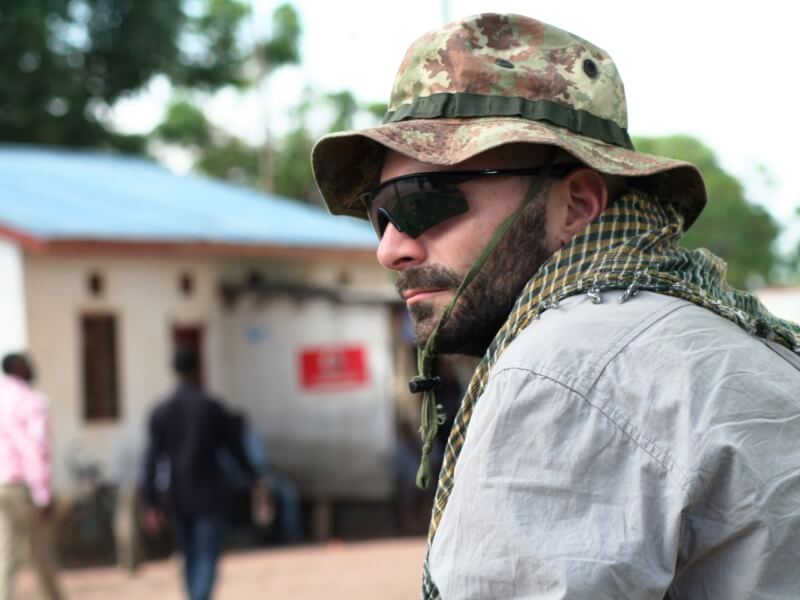
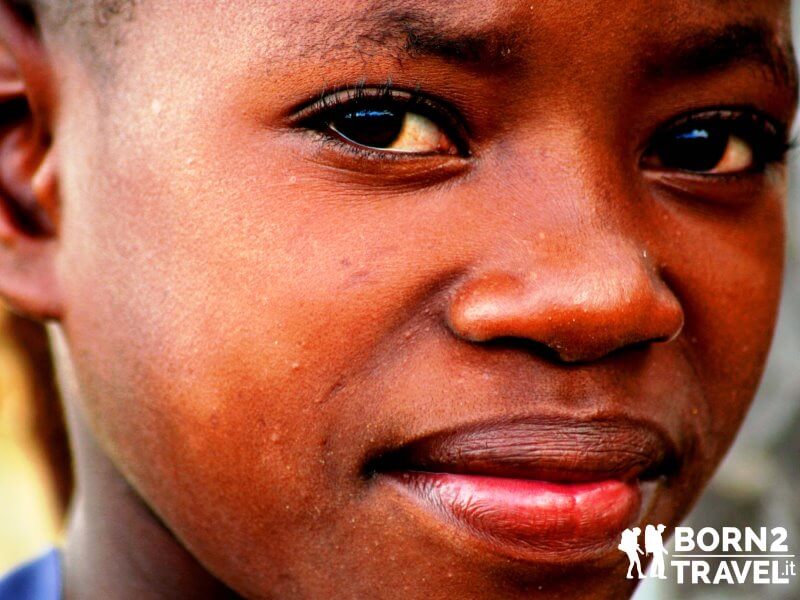
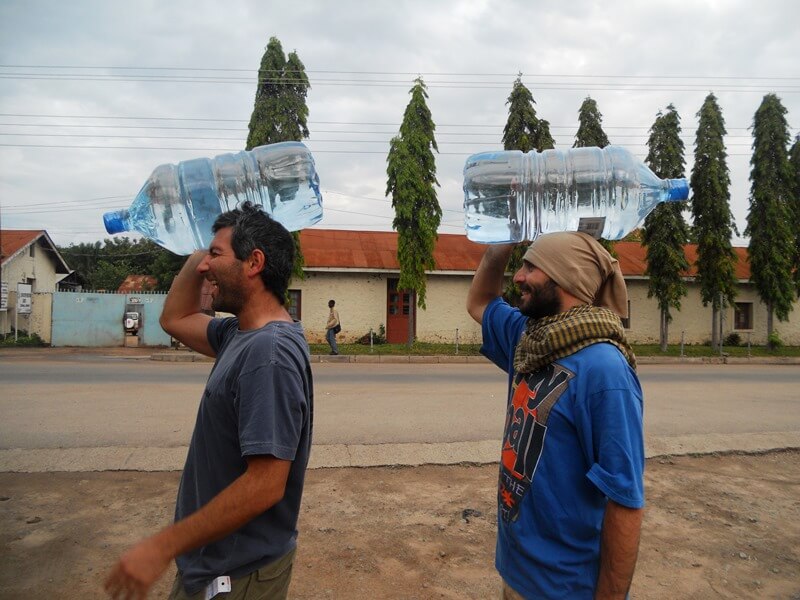
I find myself grinding km and km on our truck and daydreaming.
Moments made of fast but intense looks, smiles that come inside you, straight to your stomach. Then I open my eyes and immerse myself in the clouds, large clouds of whipped cream, red earth below me. Green goes as far as the eye can reach, to the furthest horizon.
A stop in a village, I get off the truck, breathe deeply and I feel that this is the right air for me, I feel that there is no other place where I would like to be. This land belongs to me, or rather, I belong to it.
And suddenly a girl raises her hand, I mine; in a smile there is so much love that it is impossible to contain, I feel good inside, I feel good in my heart.
The gaze returns to the road, three small boys walk to the edges with axes on their shoulders; bikes overflowing with bananas are pushed by men with oversized jackets and shoes of a few more numbers; in their eyes you could read resignation but it is a mistake, they are just tired eyes but full of dignity.
On the other side of the road hordes of children jump, greet, shout: "musungu" with infinite joy, unaware of what they have never had but so enthusiastic about what little they have that make you realize how lucky we are in life every day even if we are not even aware of it and we take it as a due routine.
In the Serengeti park it rains heavily, we take advantage of a few minutes of respite to set our tents ...
It is dawn in the Serengeti. Three hyenas walk slowly, zebras, wildebeests, impalas run scared to escape from who knows what hidden predator ...
Suddenly two splendid cheetahs, with a regal and refined bearing, come to meet us, stare at us and then cross the dirt road and continue their search towards the horizon.
A little further on, another hyena rests in a pool of dirty and muddy water.
Two lionesses and a little over a buffalo carcass ... They have just hunted this large animal and are now watching that no other predator approaches, await the arrival of the king of the forest ... they will eat the remains. Savannah rules.
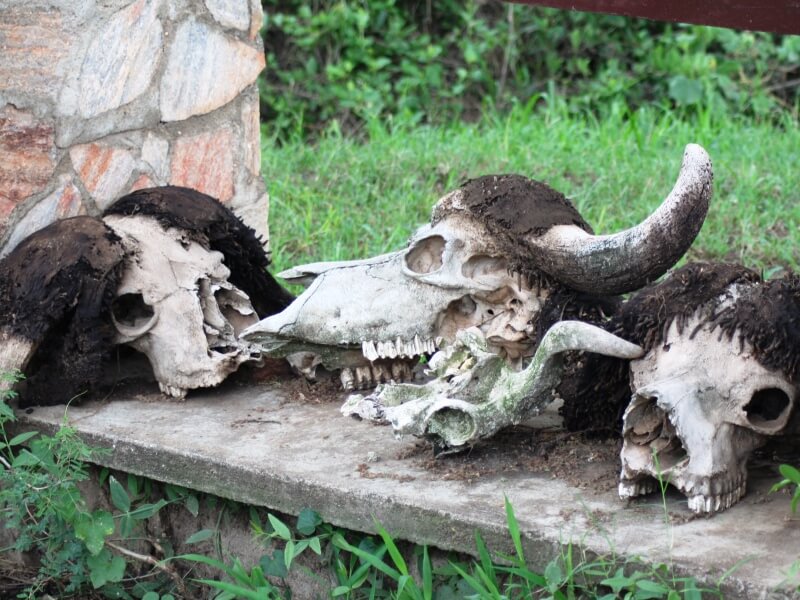
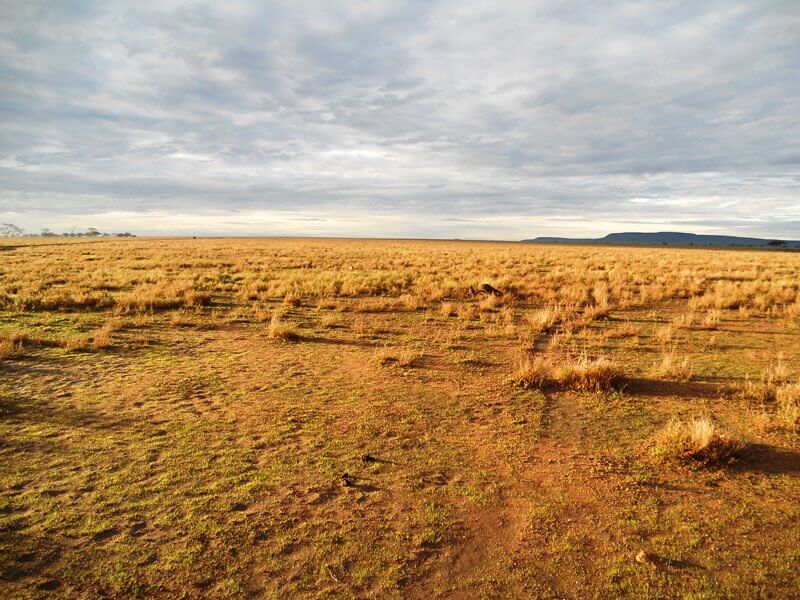
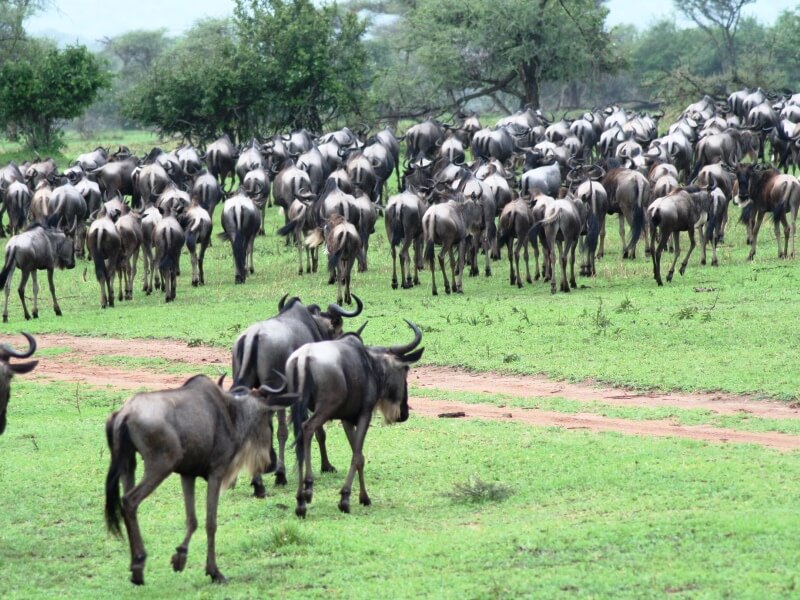

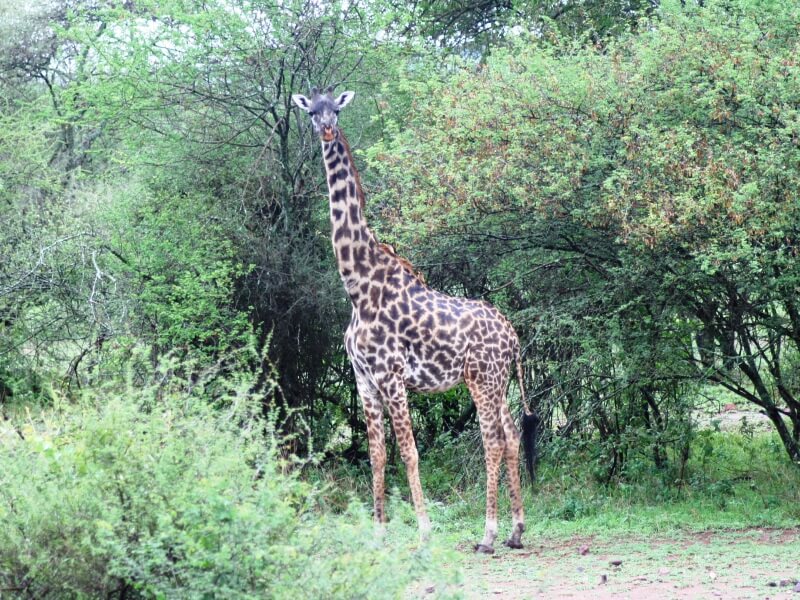
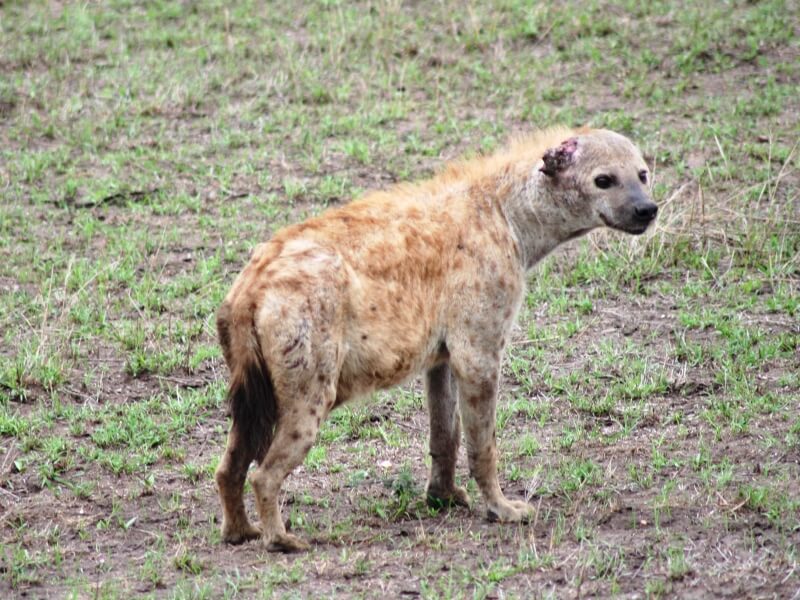
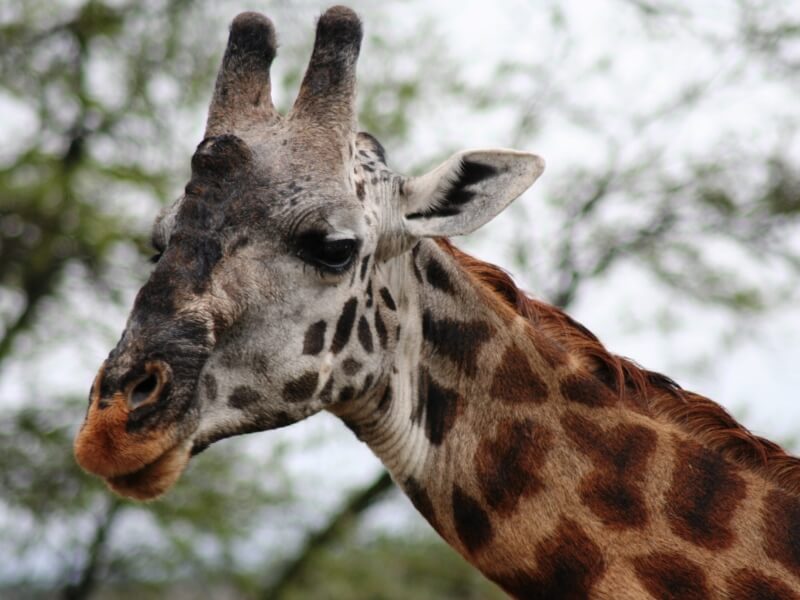

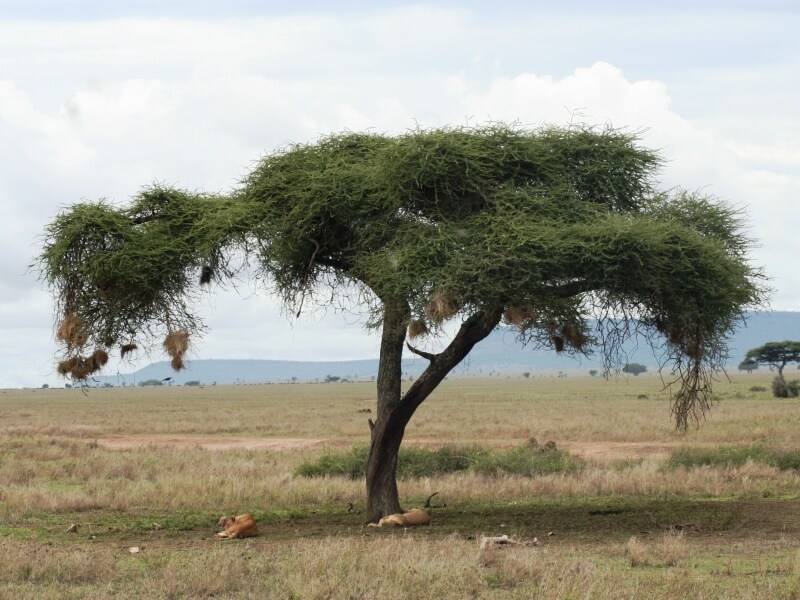
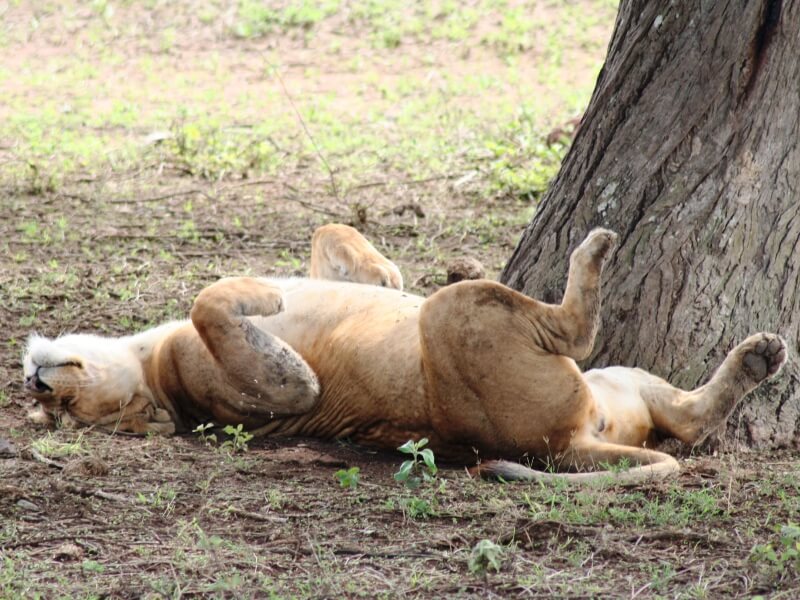
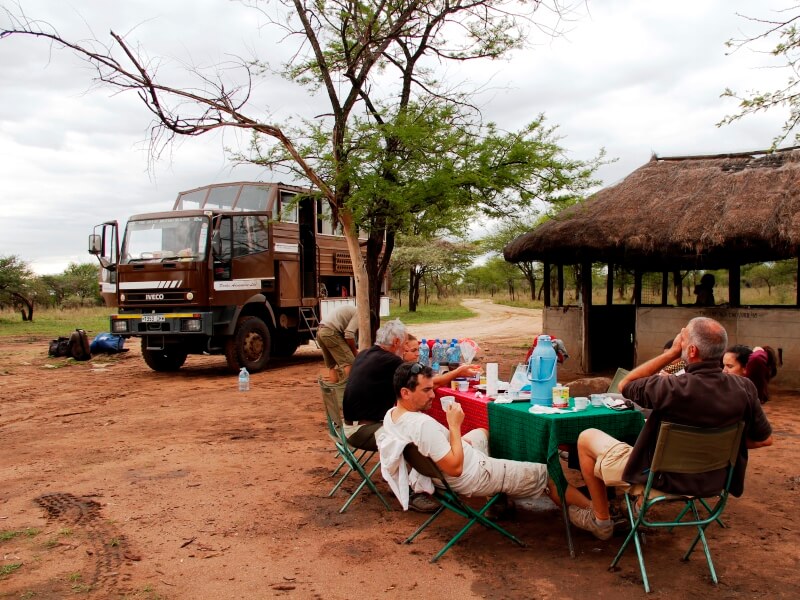
We cross the gate of the Ngorongoro national park and are projected into another world. An infinite plain that stretches as far as the eye can see where every type of animal grazes undisturbed.
Zebras, Thomson's gazelles, some giraffes look at us bored ... this is the perfect place to hunt the leopard, here the poor herbivores can only count on their physical abilities since there are no natural shelters, bushes or trees ..
We stop to visit a Masai village and after an offer to the village chief we have the opportunity to dive again into another dimension.
They greet us with a very characteristic and involving welcome dance ... the men, slender and tall, wrapped in red robes intone an ancient harmony while jumping with their legs together; women accompany the litany with their sweet voices.
The clothes, the decorations are very picturesque and colorful as are the bracelets and anklets…
Shortly after we find ourselves inside one of the many small huts listening to the stories of this ancient and proud nomadic people, we are very intrigued by this culture, by their everyday life and their traditions.
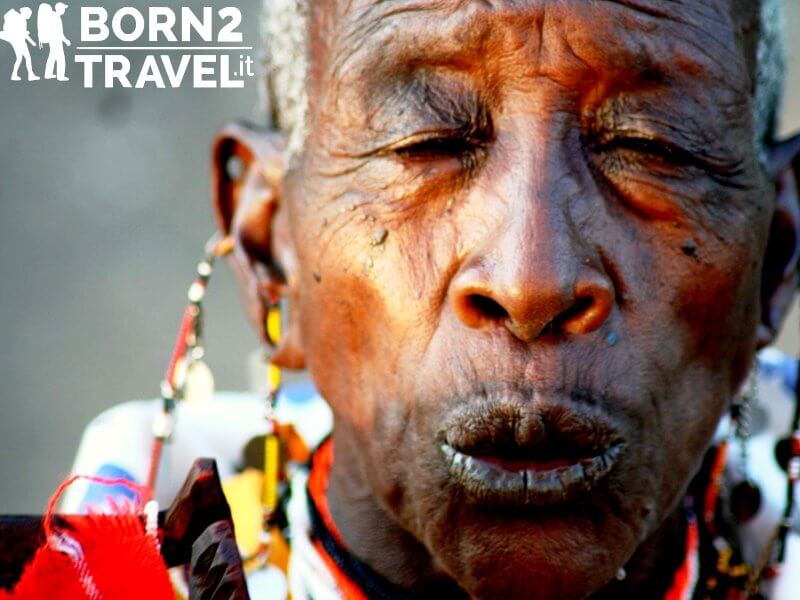
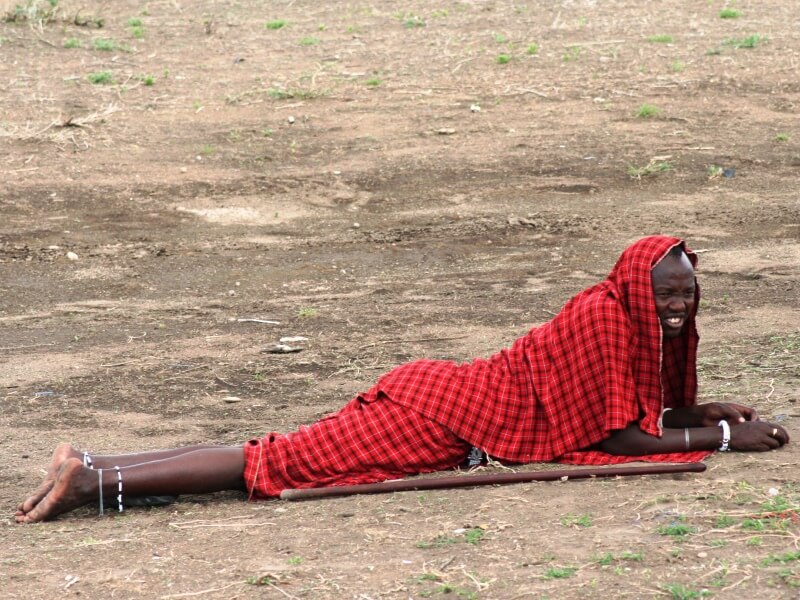

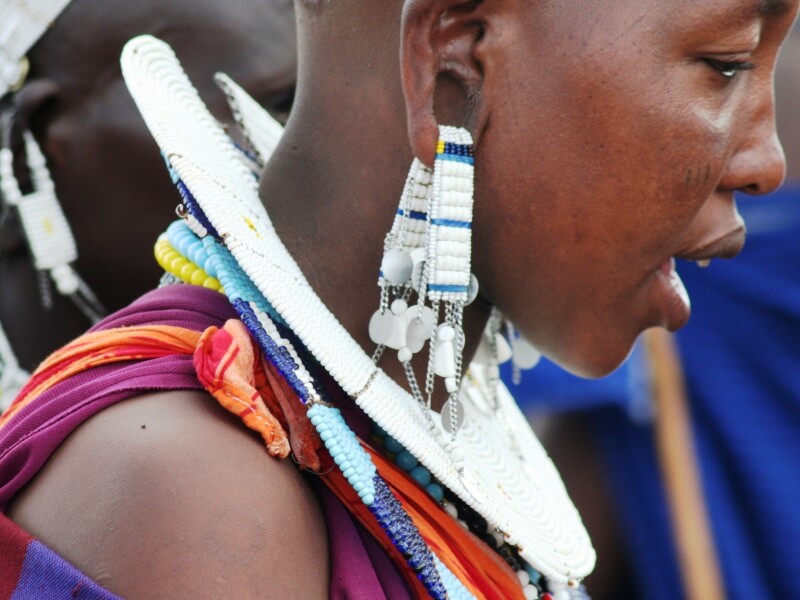
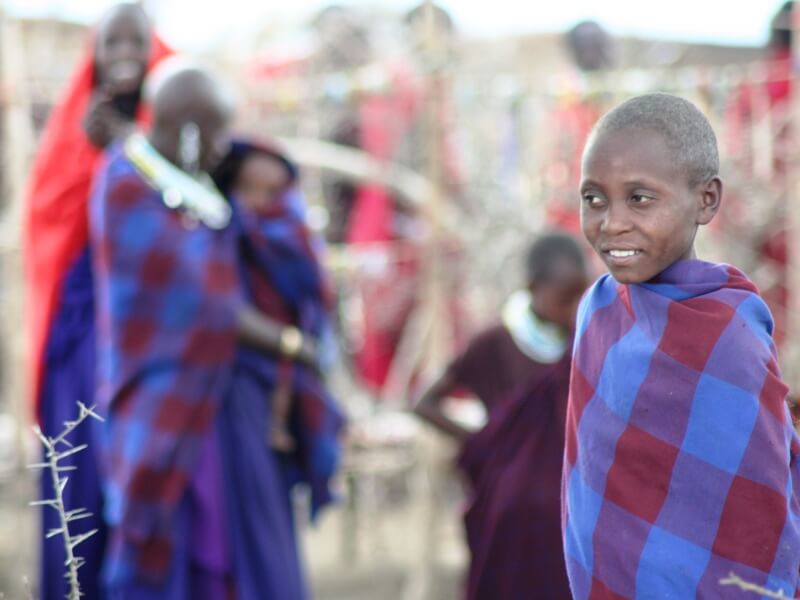
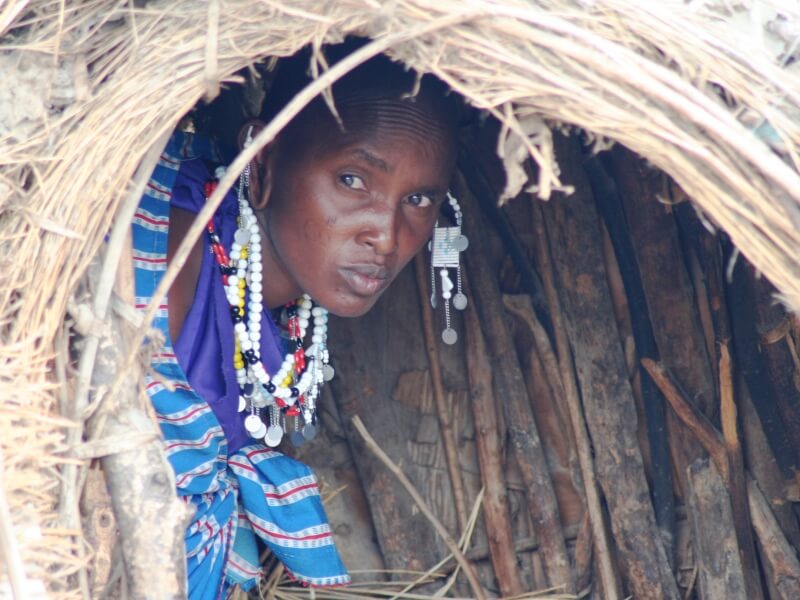



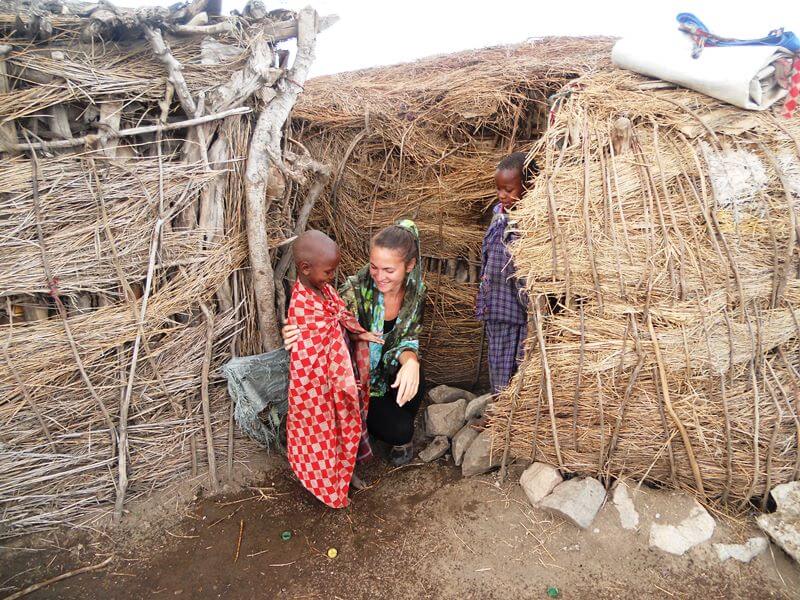
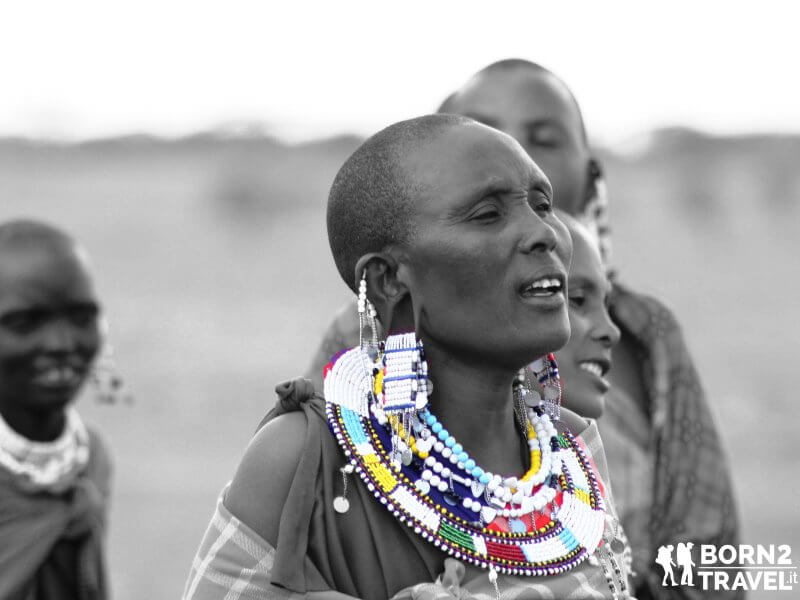
We struggle to climb higher and higher, we reach the Simba Camp where we set up our tents under a large acacia tree and enjoying one of the most suggestive views of the entire trip; at about 2,450 meters we dominate the Ngorongoro crater.
The night in a tent is hard, the cold puts us to the test but a wonderful starry sky, which seems to fall on you, makes everything sweeter!
At 05.00 we immerse ourselves completely in the ancient crater.
Ngorongoro. This term that sounds so funny, in Swahili means "hole". And in fact it is a real volcanic hole with a diameter of 19 km and a natural fence for hundreds of species of animals.
It's about six ... a huge orange ball shyly begins to appear on the horizon.
An incredible explosion of fauna before our enchanted eyes: giraffes, wildebeests, gazelles, impalas, ostriches, jackals, vultures, even a rhino ...
A herd of zebras suddenly stops and with extreme attention begins to fix a point ... we follow their frightened gaze and we see two young lionesses walking sinuous and indifferent, they will have already feasted ...
Three jackals with big ears chase another who has entered their territory ... once again the savannah reminds us that there are very specific rules to be respected.
The cold puts us to the test, however, a wonderful starry sky, which seems to fall on you, makes everything sweeter!
Further on. Two majestic figures parade with great elegance. A lioness ... and here it is finally: the king of the forest in all its splendor.
He marks the territory ... he stretches out near a bush while the lioness approaches him an accomplice ... he wanders around him several times until he, with a "feline" leap, jumps behind him ... everything lasts a little but we are incredulous, it seems to look , in the front row, a wonderful National Geographic documentary ...
It is pitch dark outside.
With these images well imprinted in our eyes and hearts we leave the crater and nature towards the sleepy town of Mto Wa Mbu.
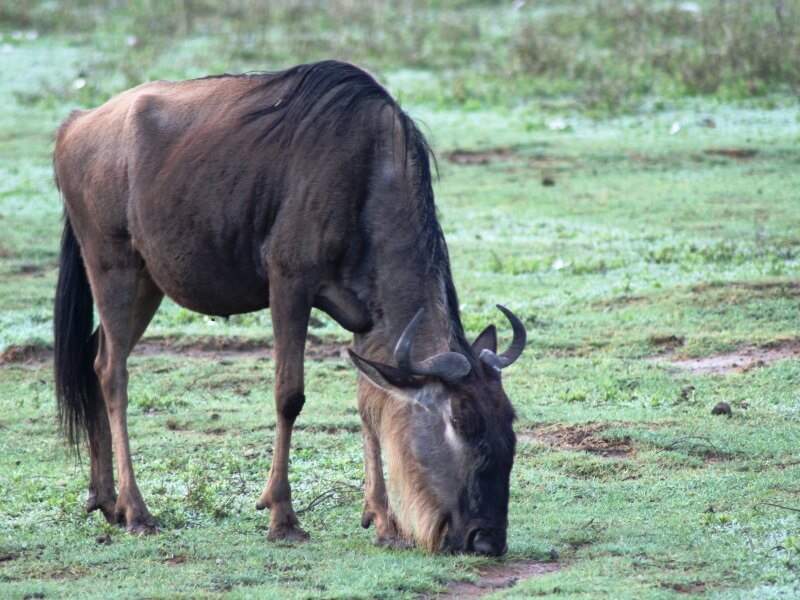

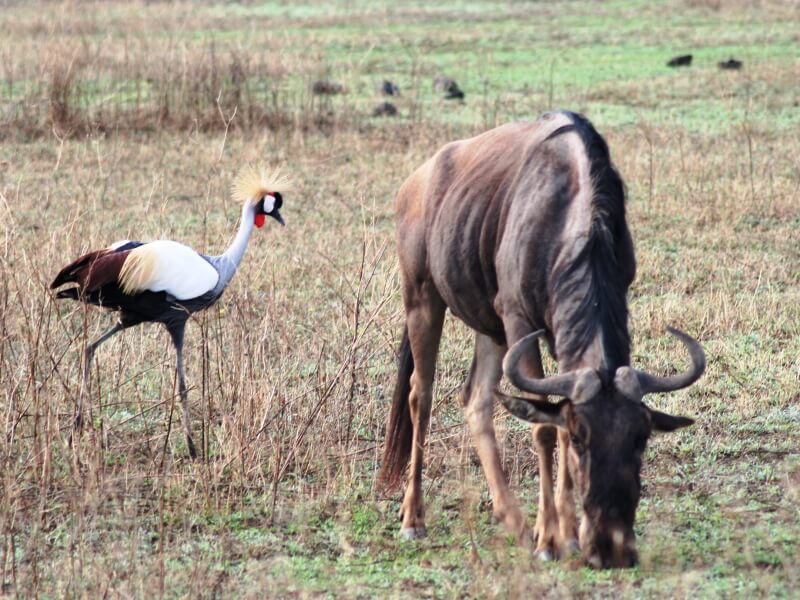
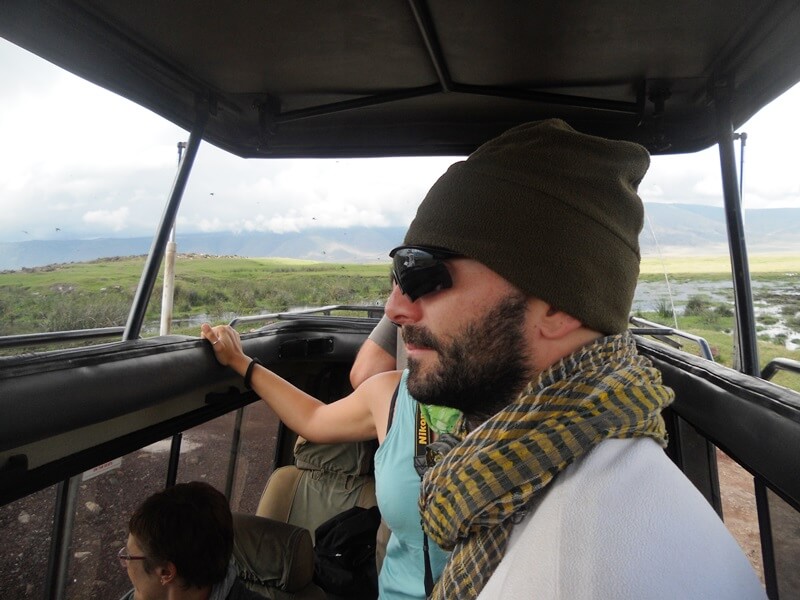
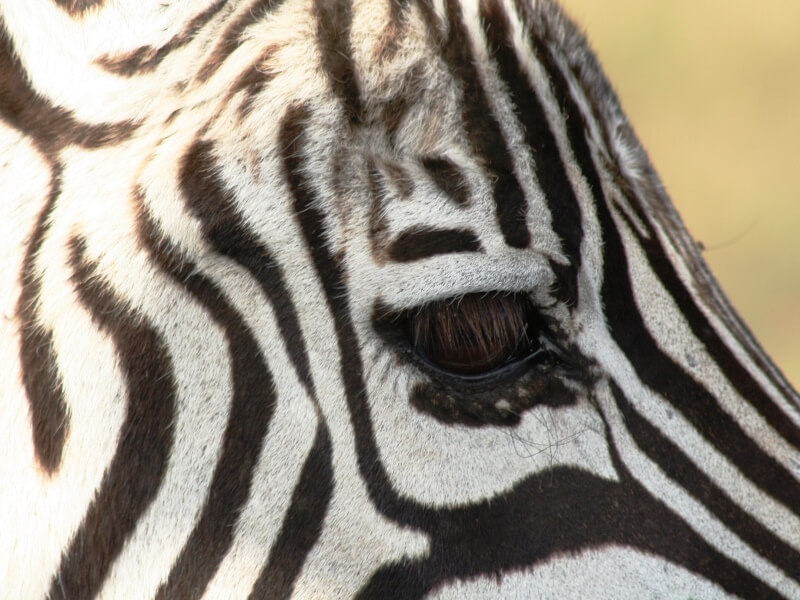
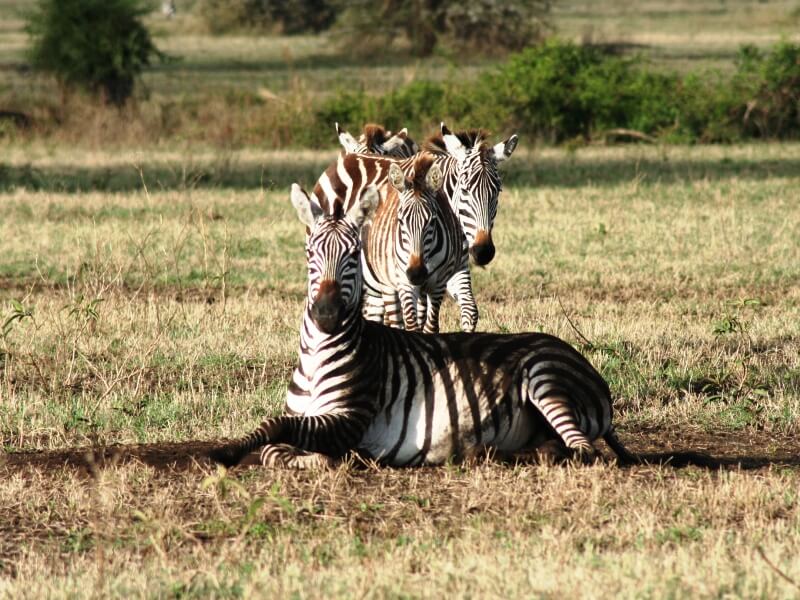
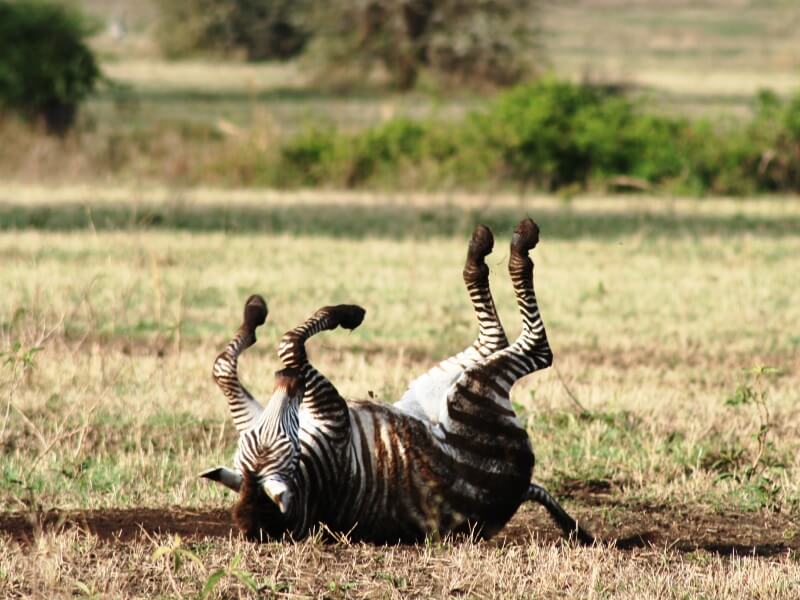
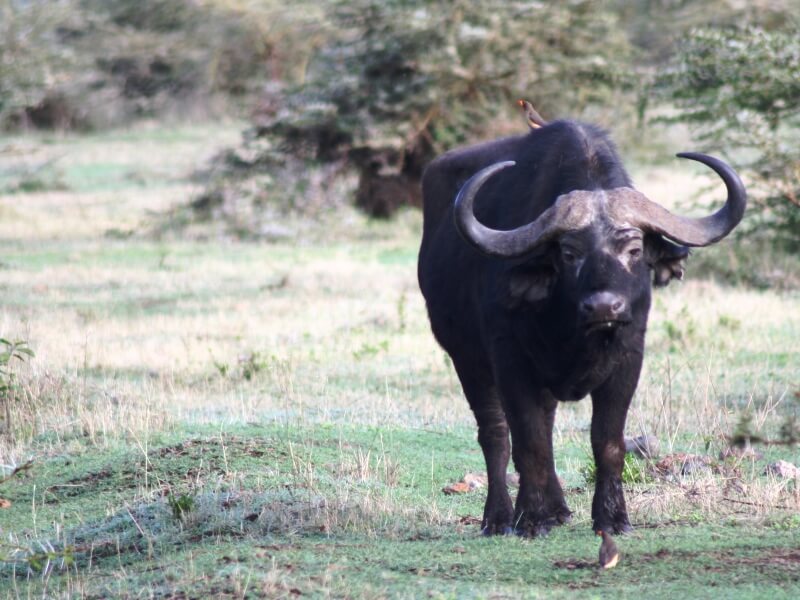
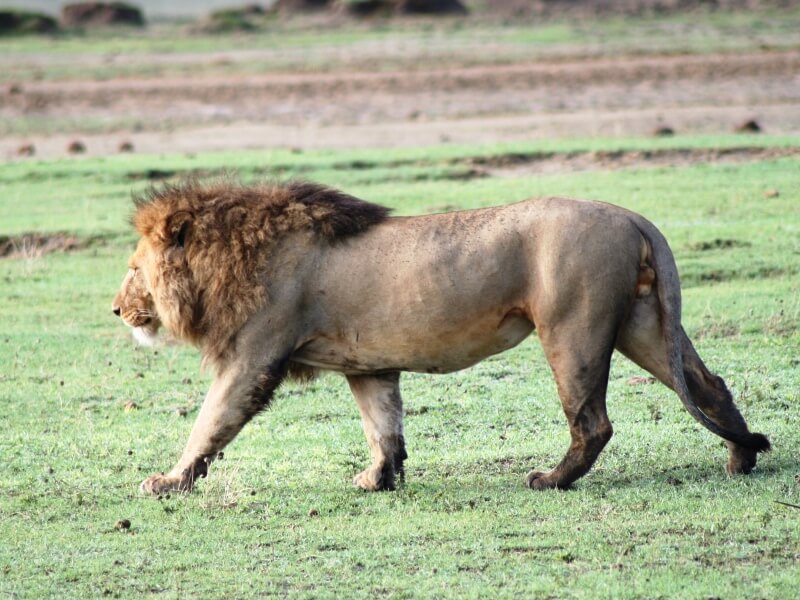
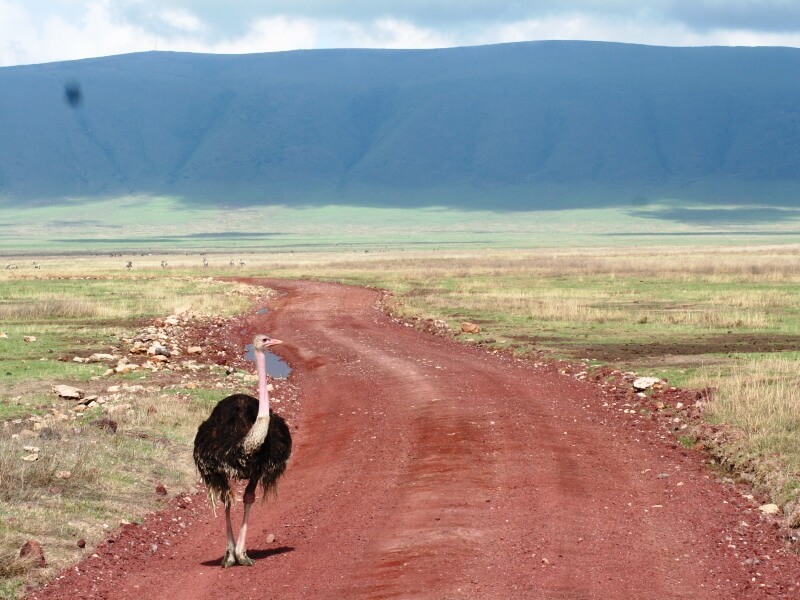
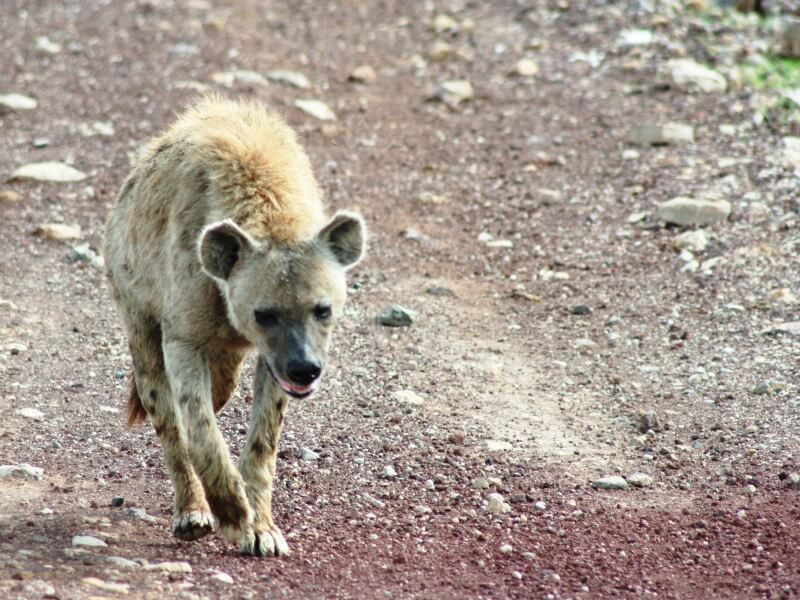
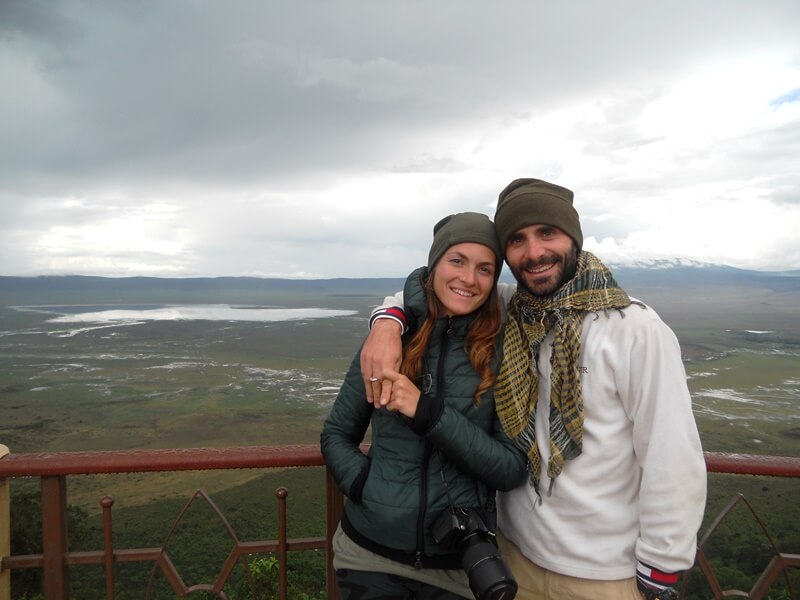
Quick shower and we immediately go for a walk around.
Two wooden boards, in the center a chessboard and around many men who discuss every single move. They invite Mark to play a game and challenge their ace, a plump and good-faced old Masai. All to analyze the duel of pawns but the rules are different from ours and we had to accept defeat with a handshake.
The hours of the traveler, as I call them, are worth seven times more than normal hours, as for dogs. Perhaps someone had said that traveling extends life.
Paolo Brovelli
Our truck leaves us on the shores of Lake Manyara. Flies give us no respite, you find them everywhere, it's a constant stress!
With our guide we try to enjoy this "game drive on foot", first we approach a canal where hippos are heard, then we walk towards a village along a red road topped by infinite banana trees.
The children are constantly striving to receive our greetings: the musungu. Many women, wary, open up in a wonderful smile once greeted in Swahili.
We stop to see how they make beer or wine with bananas. Quirky and not very tasty! The guide hands us a container with some liquid and after having removed the top foam, he proposes to drink it all from the same jar ... after all it is the beer of friendship
Sitting in Mto Wa Mbu's Scorpion Pub, we eat a plate of french fries and pieces of meat bought from a shack outside and we are happy with our simplicity!
At 5.00 pm half of the city gathers inside the pub courtyard. They project the match Manchester City - Arsenal. It is incredible: about 150 black heads, hardcore fans, are there to support their favorite team.
You even have to pay the ticket (500 shillings, about 30 cents of a dollar). I thought to myself it would be nice if one of those players knew that in a remote Tanzanian village, there were so loyal supporters.
We leave, for the first time, at 7.30. We are not used to sleeping until that hour ...
In two hours we reach Arusha, another large city in Tanzania. We meet several Masai on the way and I am increasingly enchanted by the diversity of the world!
From there the border with Kenya is close ...
Usual paperwork but now we are used to it ...
A couple of hours later and we enter the large chaotic periphery of the capital. We are back in Nairobi, almost a month later.
How many things happened, how many adventures lived and how many stories to tell and tell ...
Another great adventure is over but that flame shines more and more inside us and we are already looking forward to leaving ...
Error: No feed found.
Please go to the Instagram Feed settings page to create a feed.
4 Responses
https://waterfallmagazine.com
I think this is among the most important info for me. And i’m
glad reading your article. But want to remark on few general
things, The site style is ideal, the articles is really nice : D.
Good job, cheers
Thank you so much for your kind words, africa has oalways been in our heart! We hope to come back over and over there
Personally I have two things to add or rcommend on your trip according to the roadmap.
First I want to congratulate you for the wish. Being in Africa rotating by using big van it’s a courageous thing to do. Hopefully you were in a wonderful time for being in the heart of Natural touists destination in Africa. Actually Tanzania has many things to offer you but according to the time you did what you have to according to your desire.
You have been in Africa especially Tanzania. Yes you have witnessed the Wilderbeests breeding season in South Serengeti, Ngorongoro Crater, Oldtupai Gorge not sure, Oldonyo Lengai and the Moving sand not sure if so. But anyway I would like to encourage you brother and sisters to come over again for Mount Kilimanjaro trekking. This is the roof of Africa. It’s so wonderful and amazing to be on top of Mount Kilimanjaro because you will be proud of. It’s not dangerous to be there. We have more than 8 routes. And I will recommend to you the Machame route for 7 days. The Machame route has many more acclimatization and vegetation to offer you in order to enjoy the mountain as from day one to day 7. The mountain is climbed throughout of the year. Please I request you honestly and kindly to come back Africa for the free standing alone mountain in the world. Covered with snows on top from the tropical country as well as heigh of 5895m , ft 19341 above the Sea Level. The highest Peak is known as Uhuru Summit. The next two peaks are Stella Point and Gilmans Point.
I welcome you back to explore observe and experience more nature’s and wonders of the highest mountain in Africa, the Mount Kilimanjaro. Really you will enjoy much to be in the top in the morning hours around 0830 hrs East African Time.
Karibu Sana Tanzania Hakuna Matata
Thank you so much for your very interesting feedback, we will take note of your advices and hopefully see you there soon